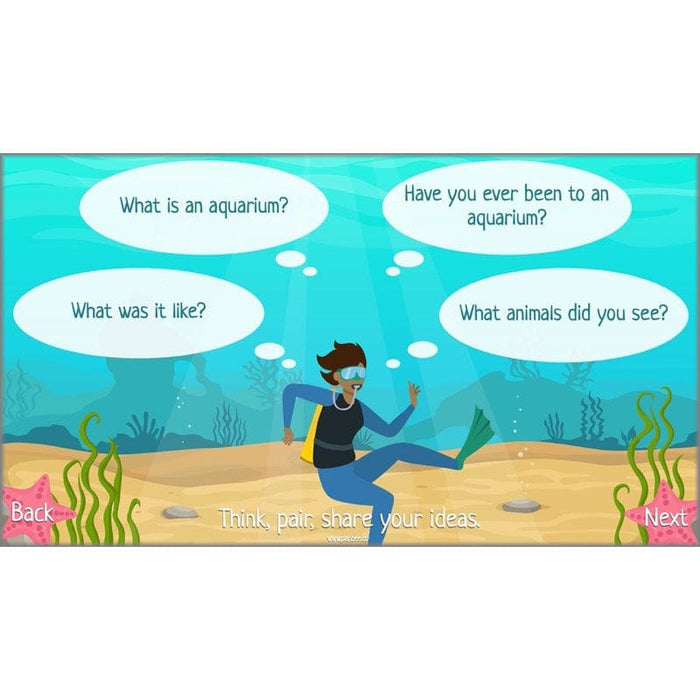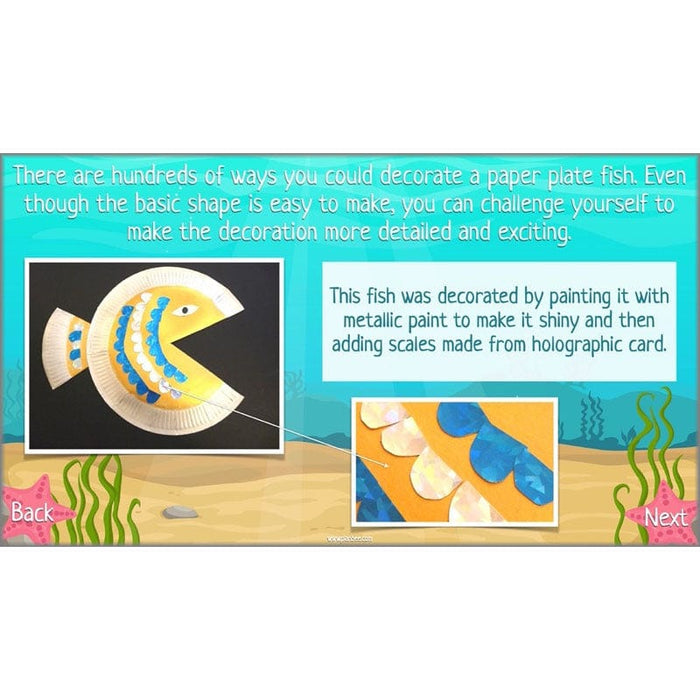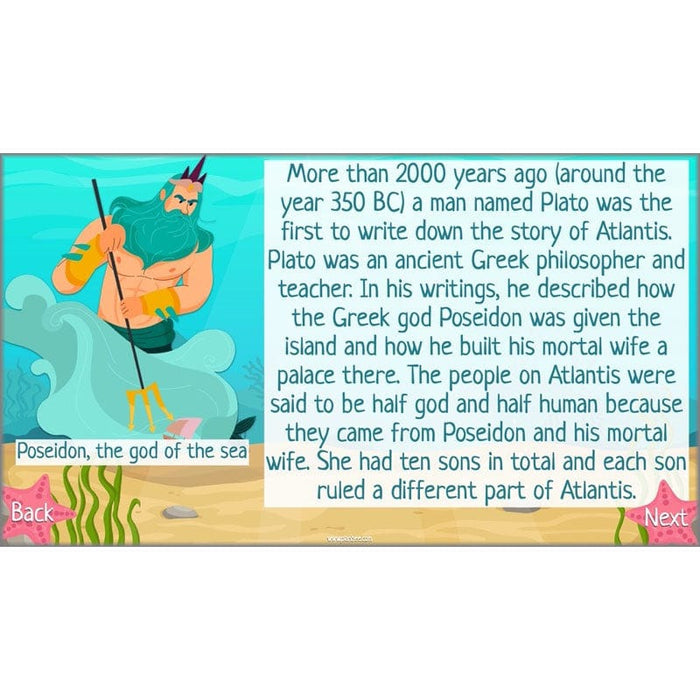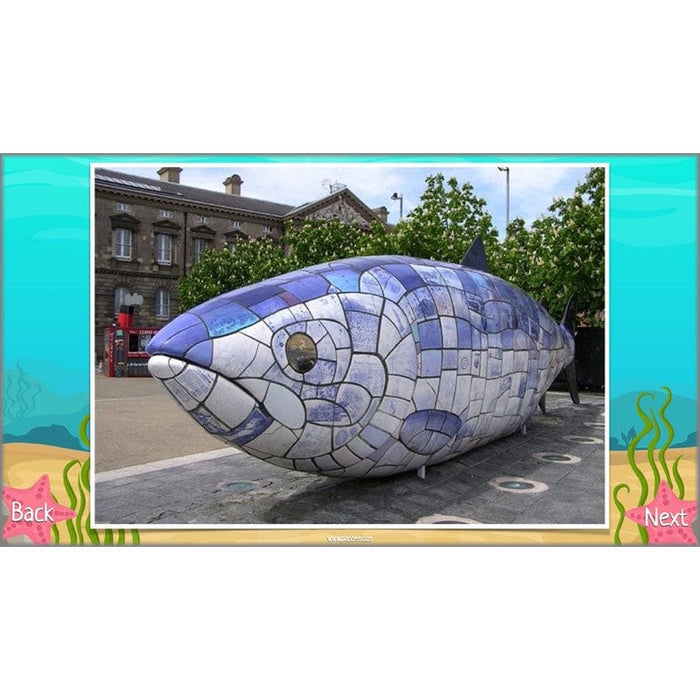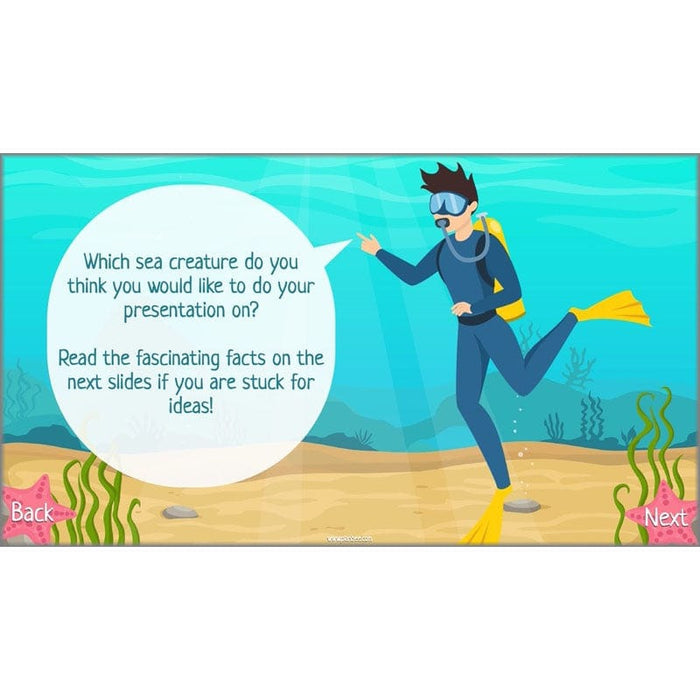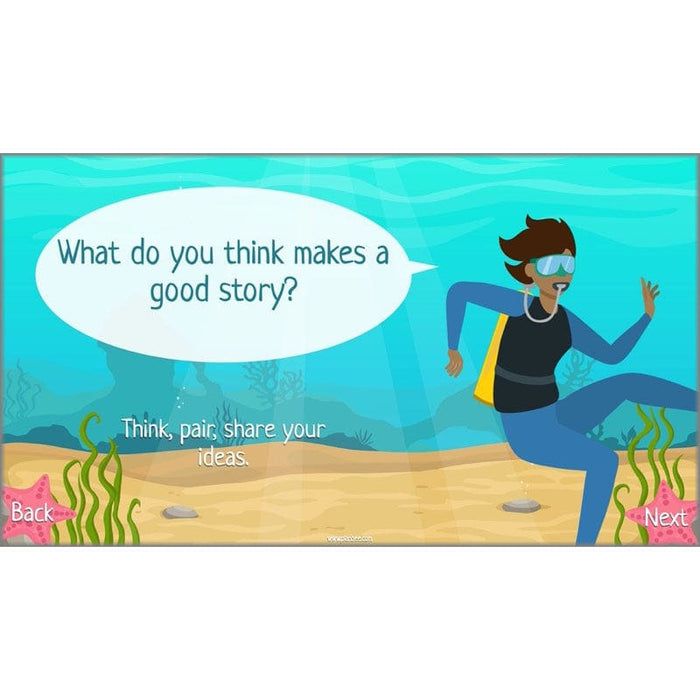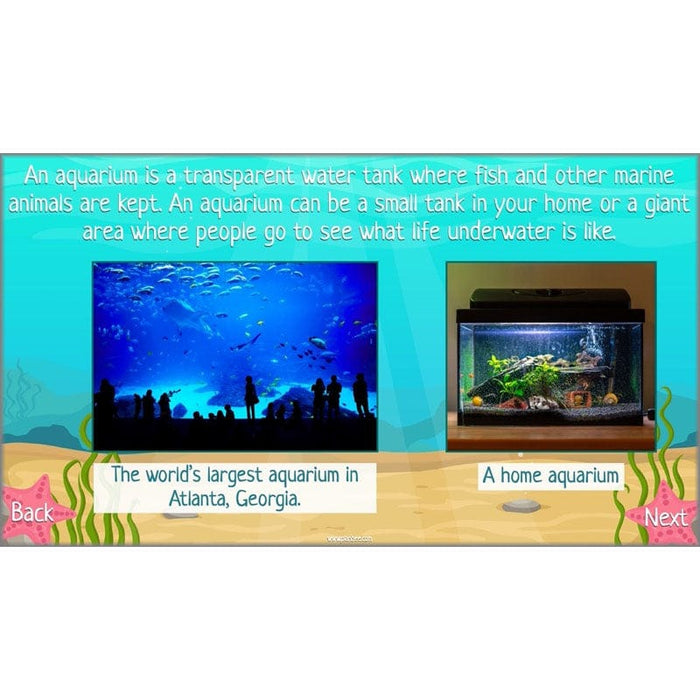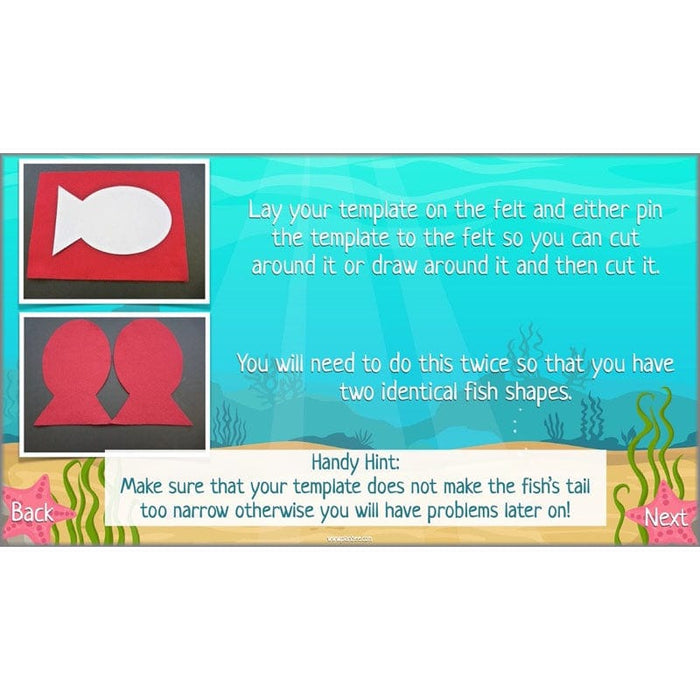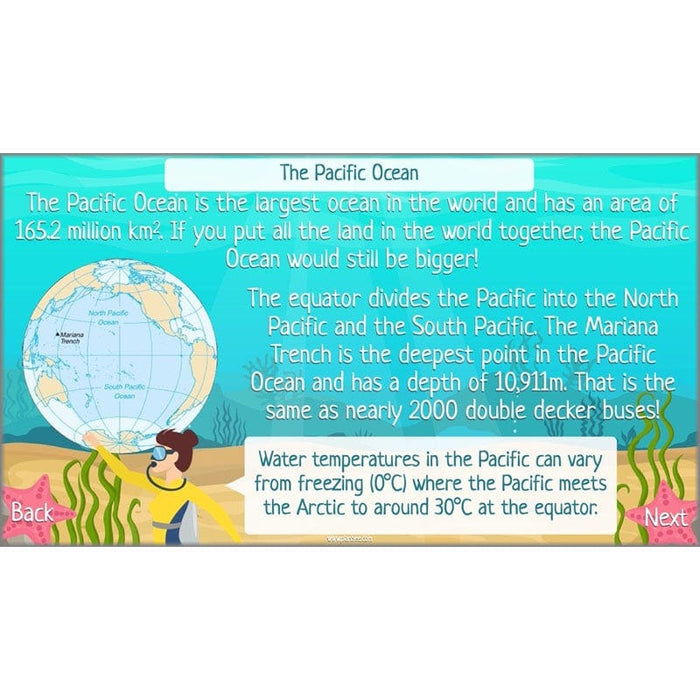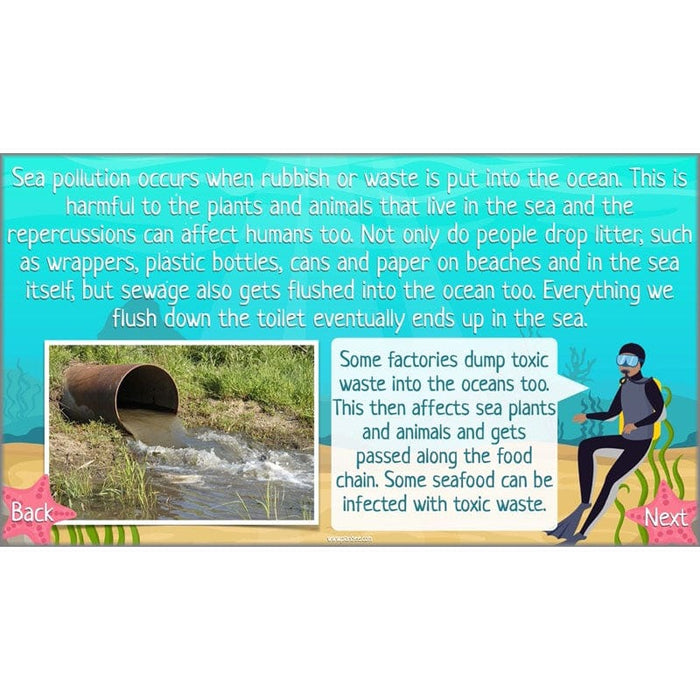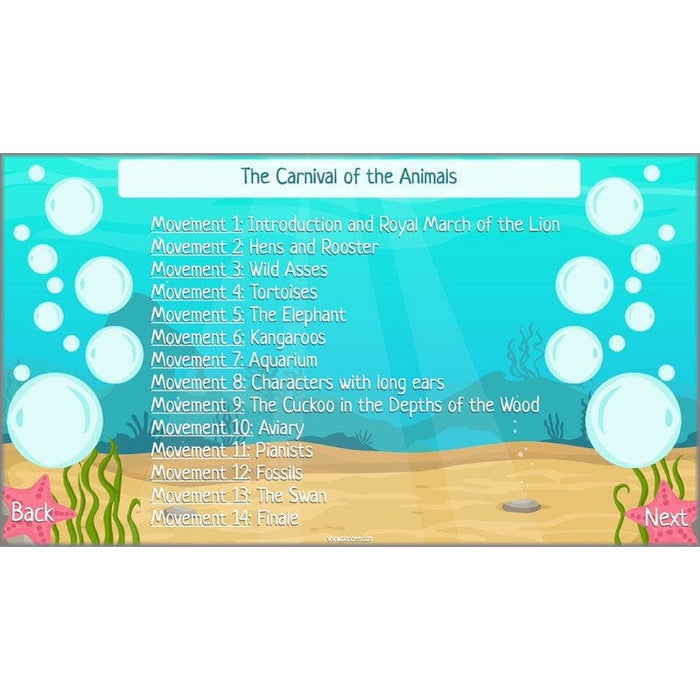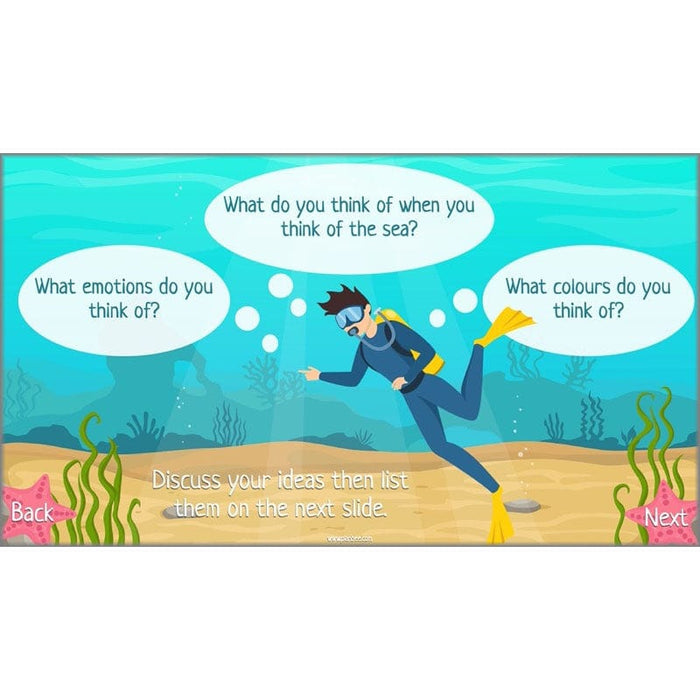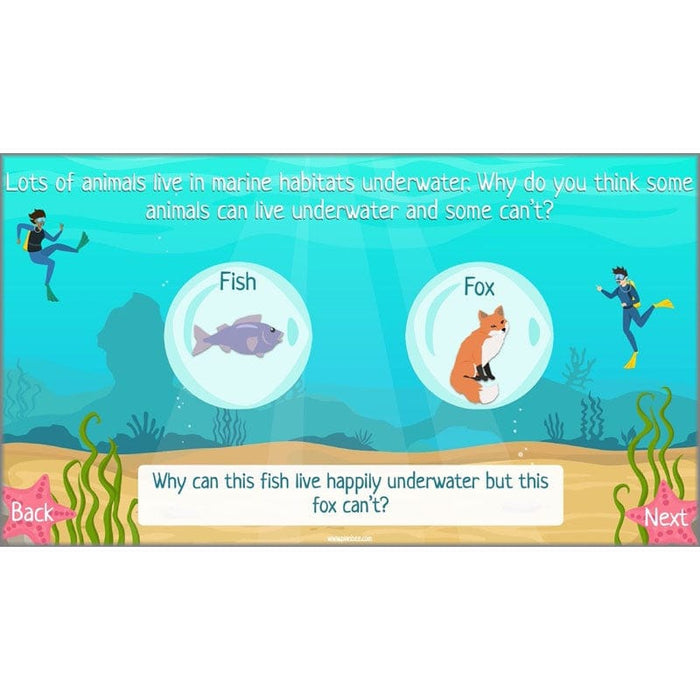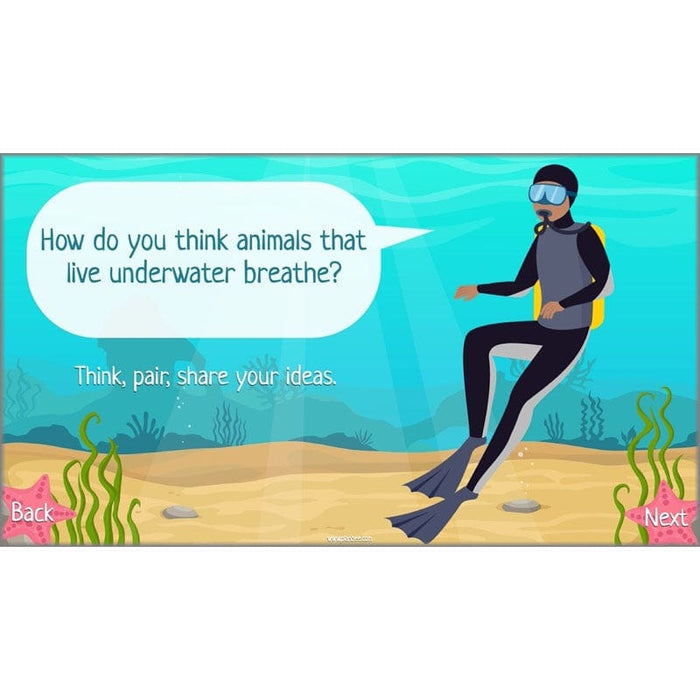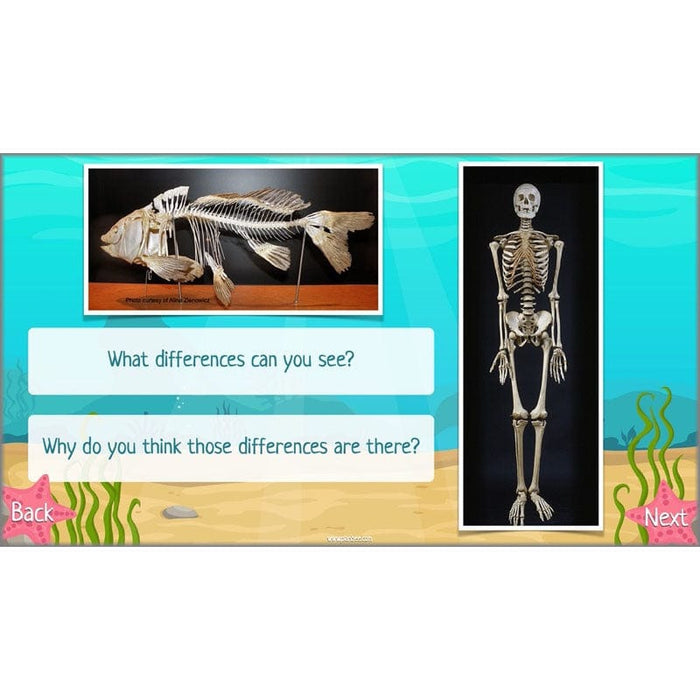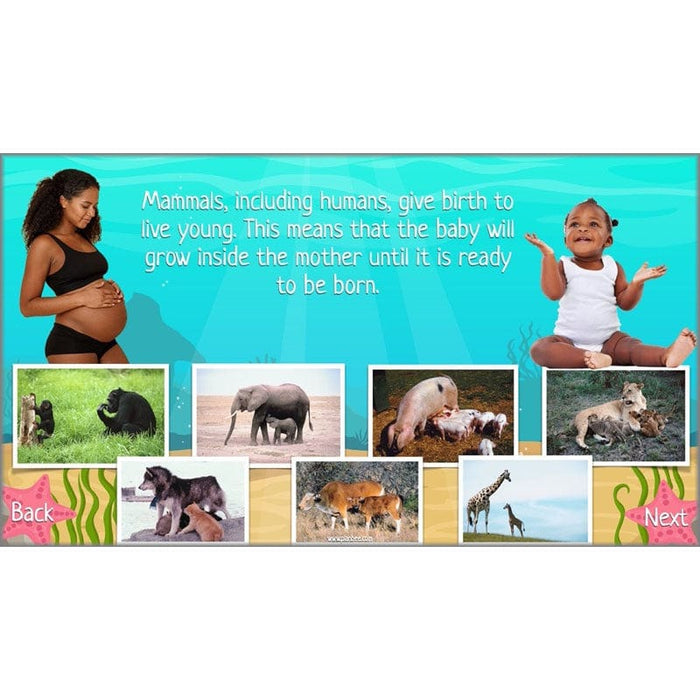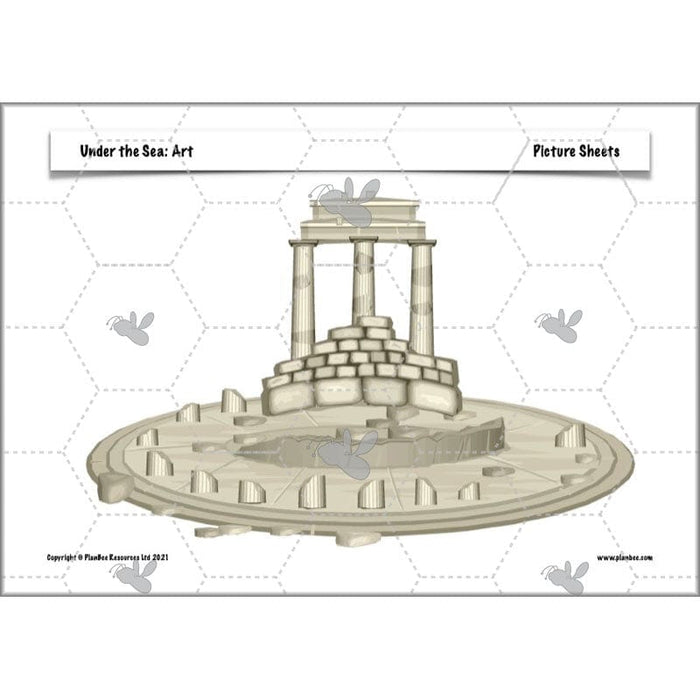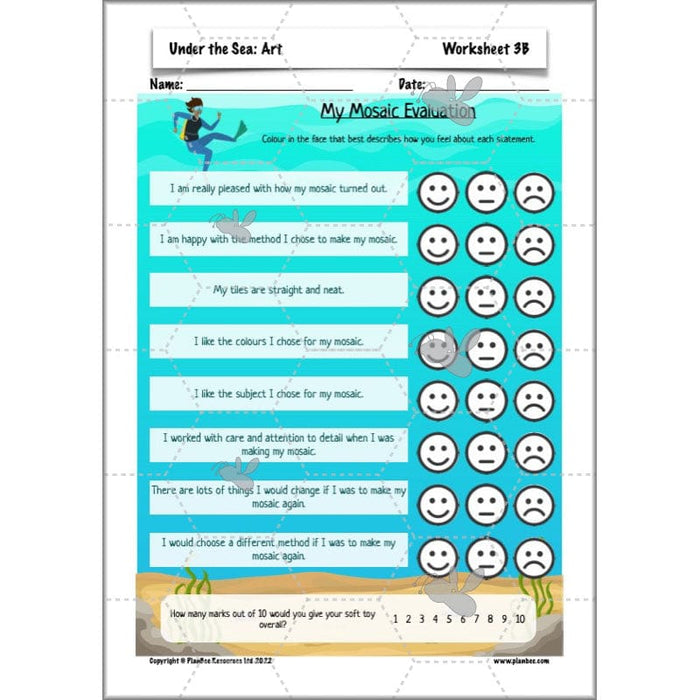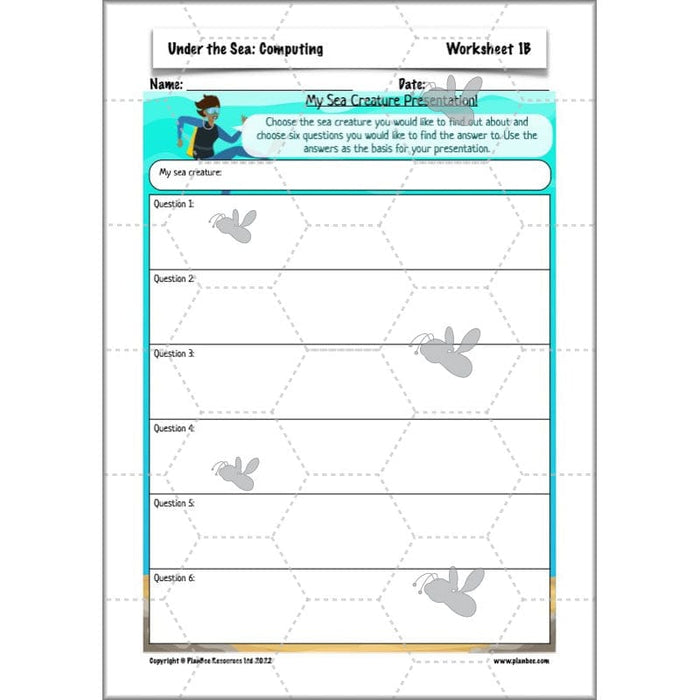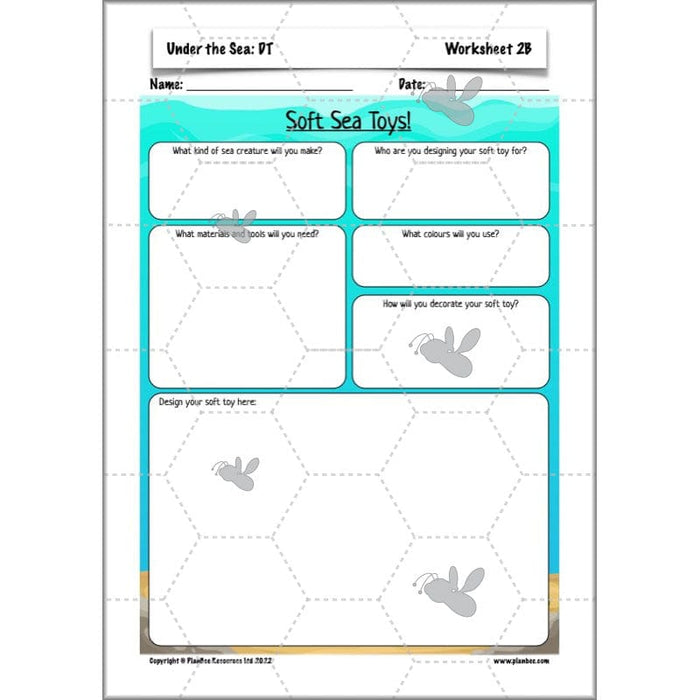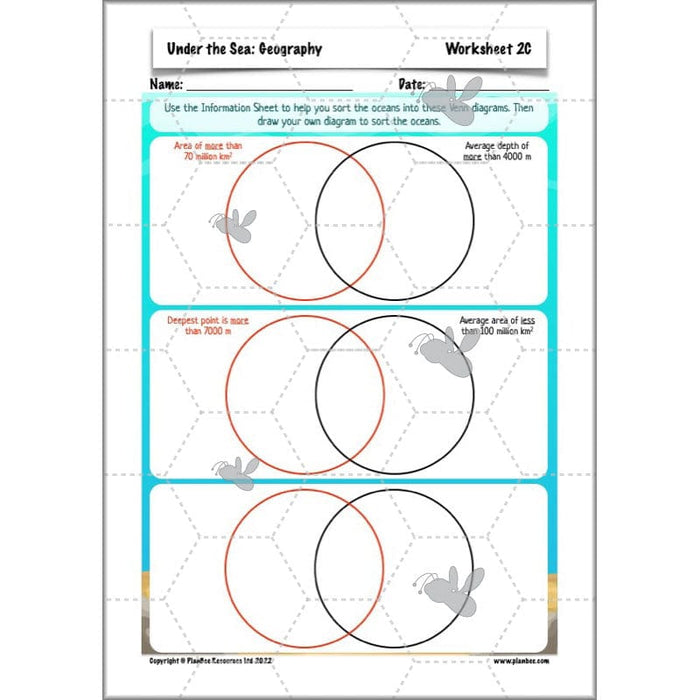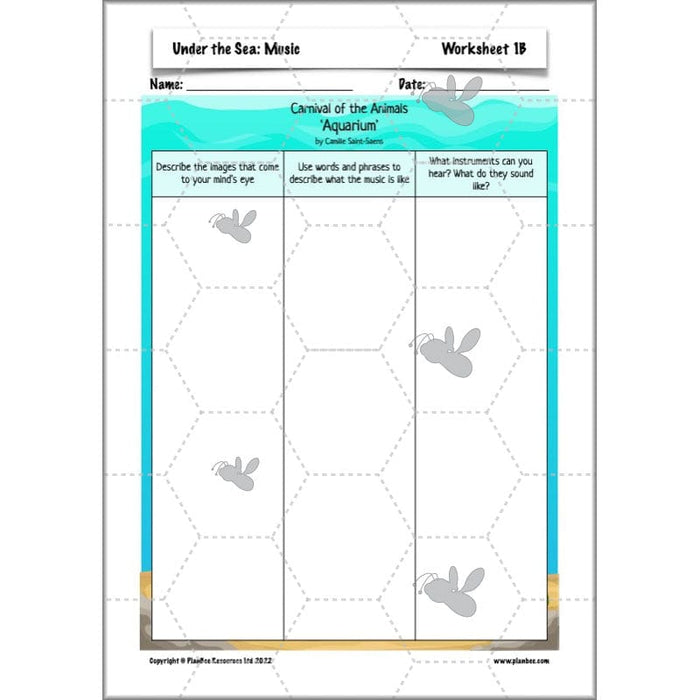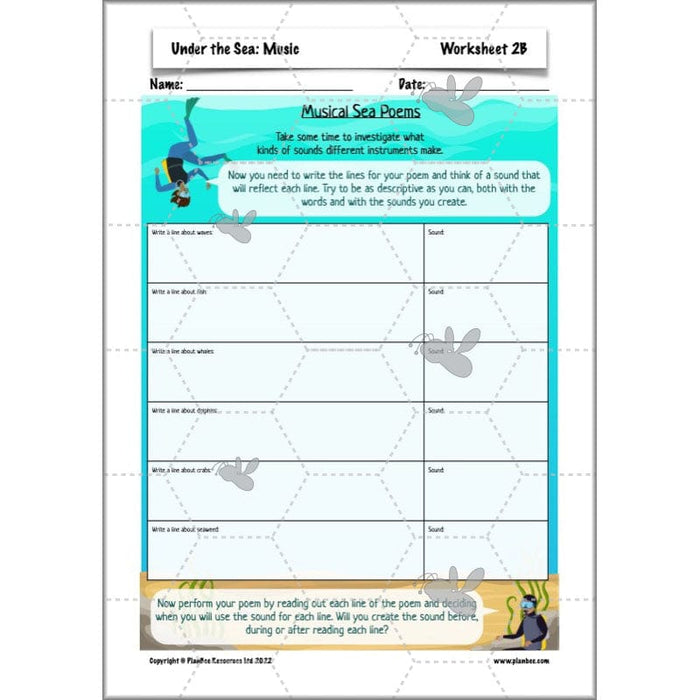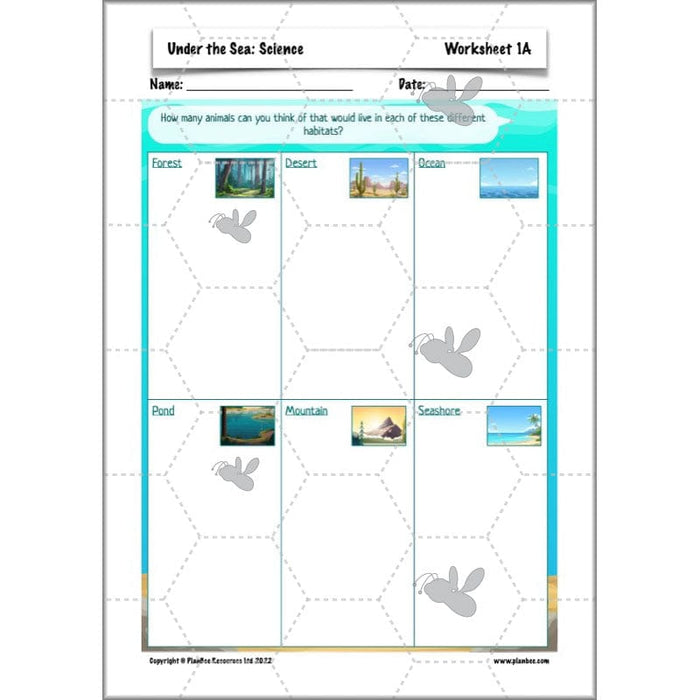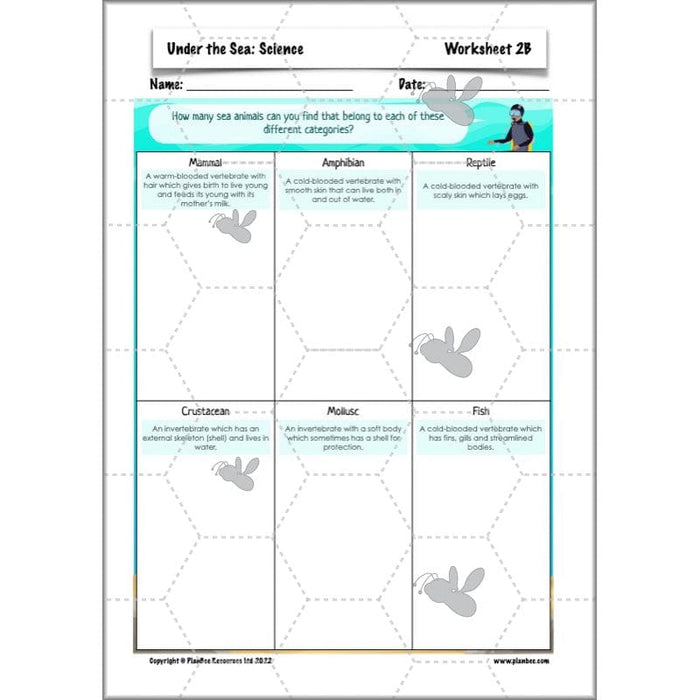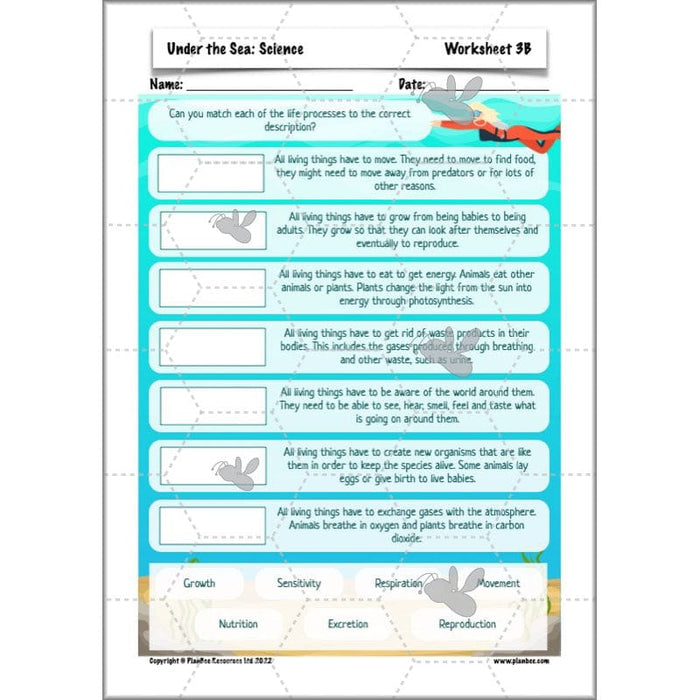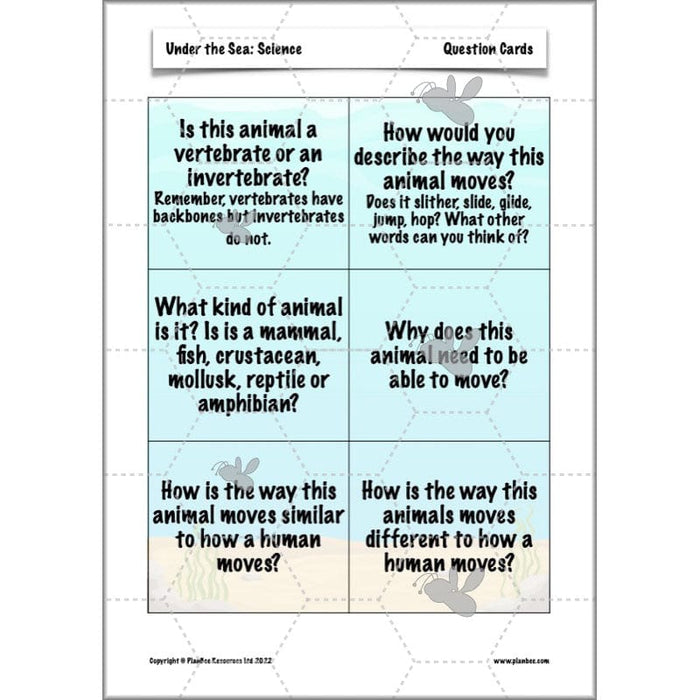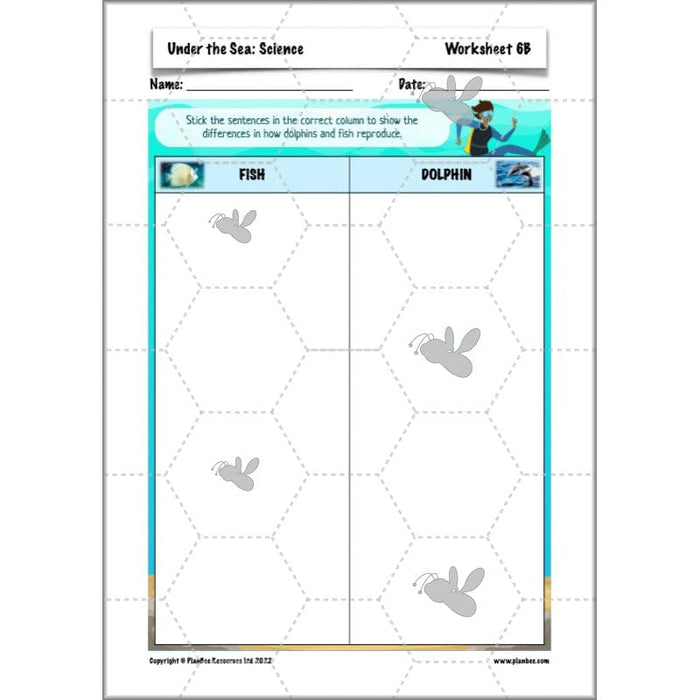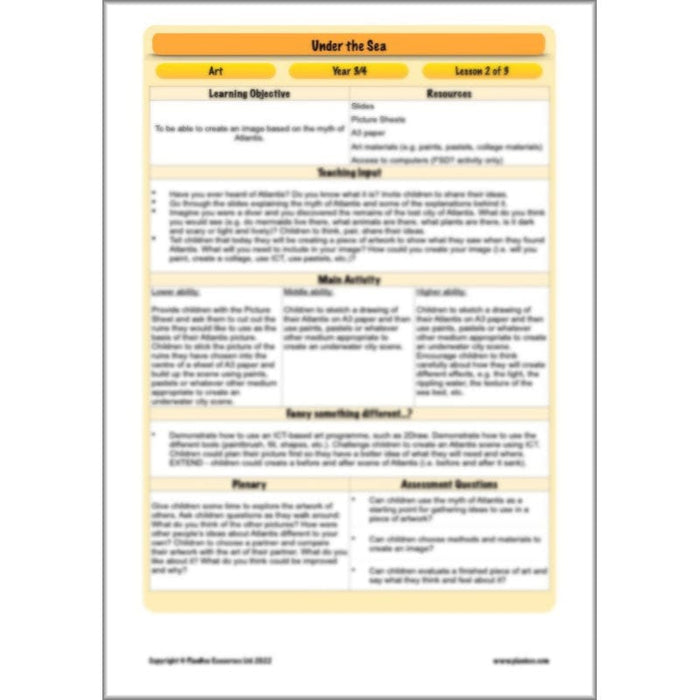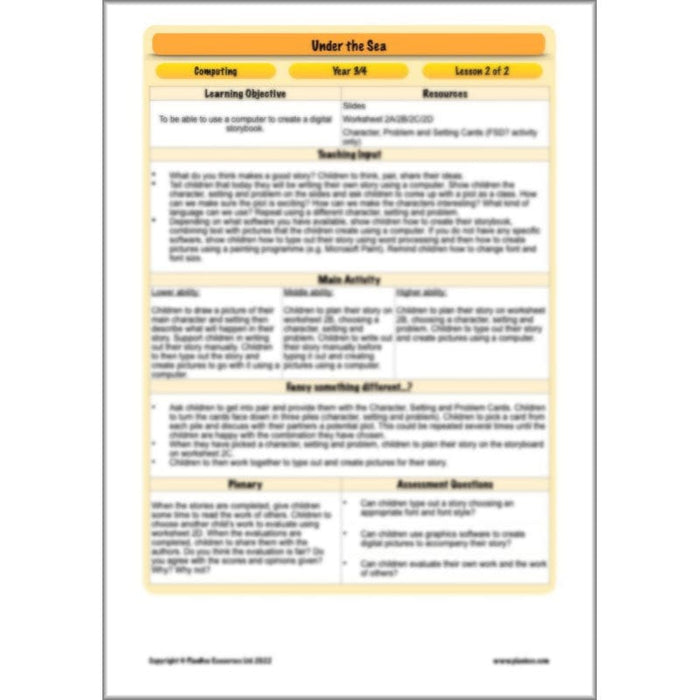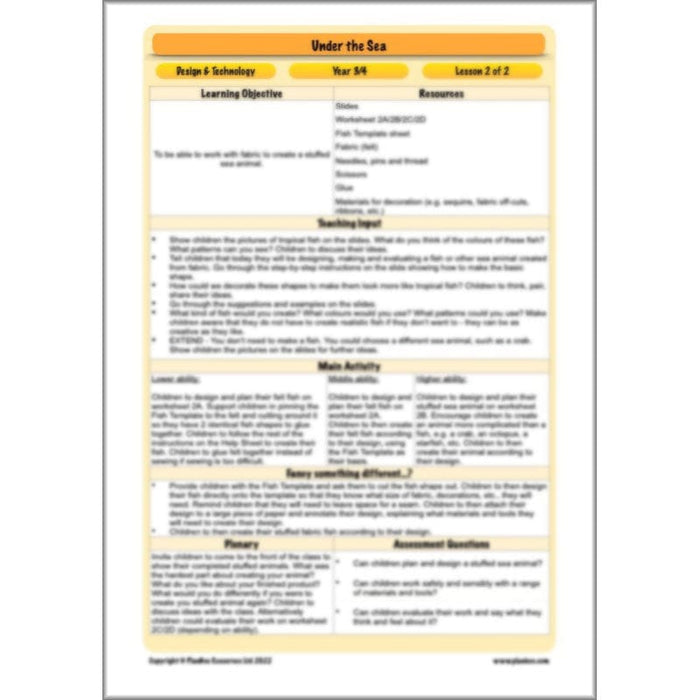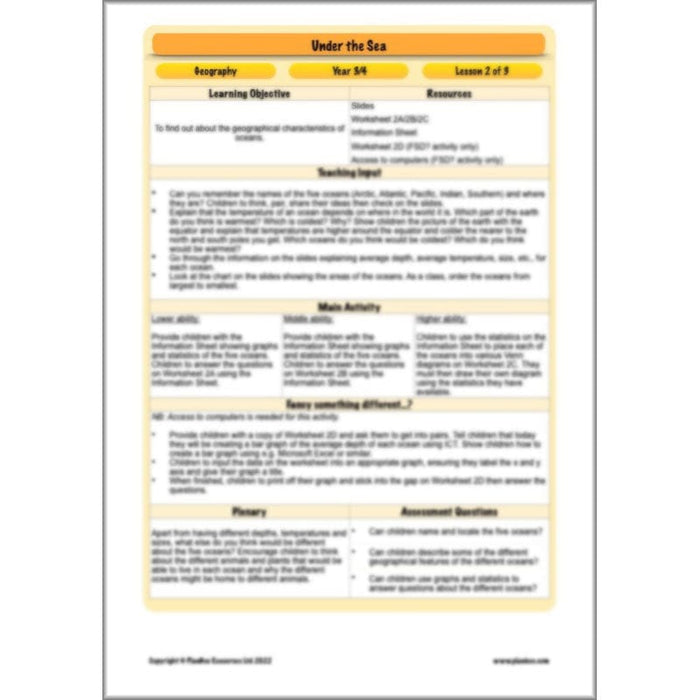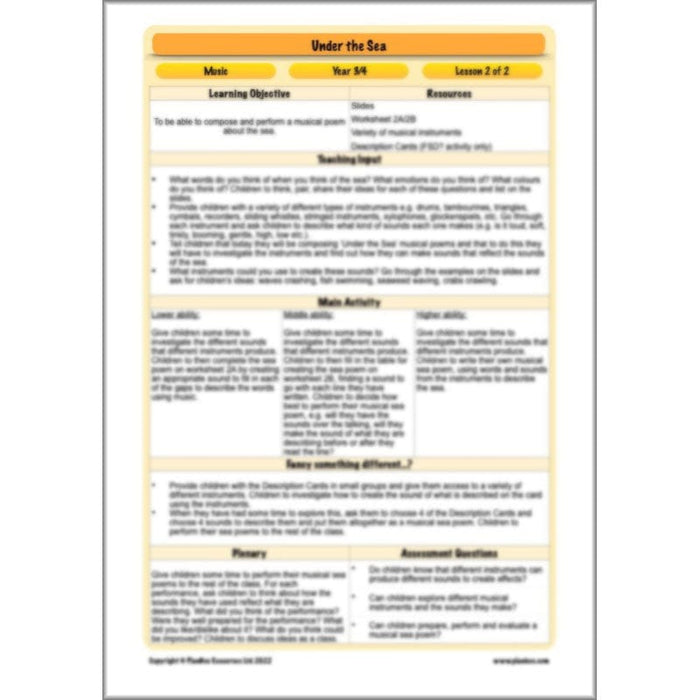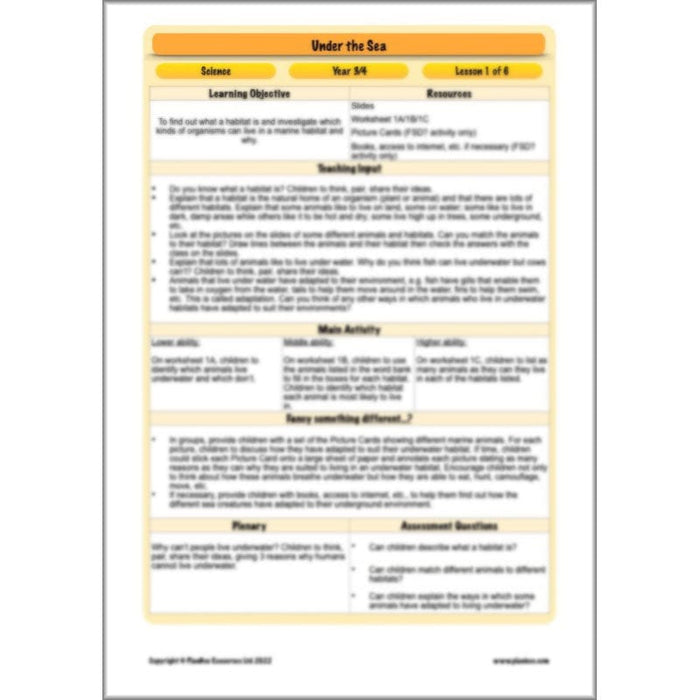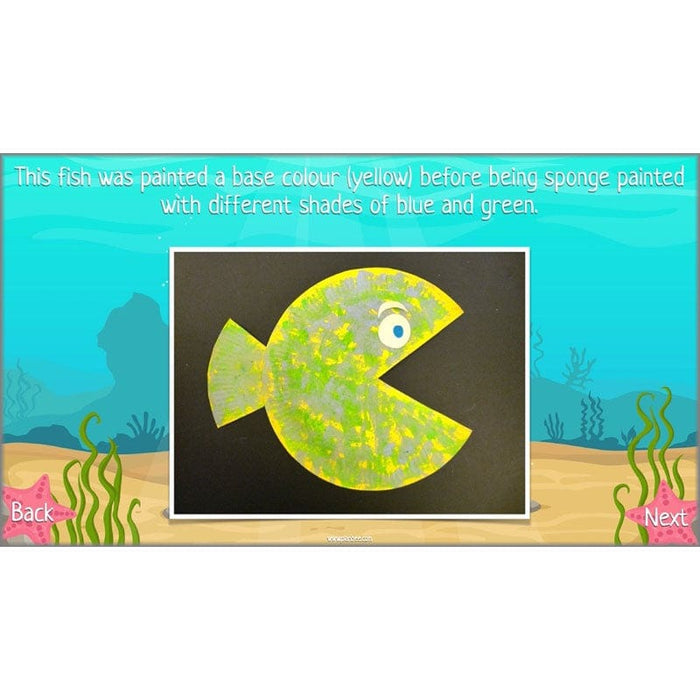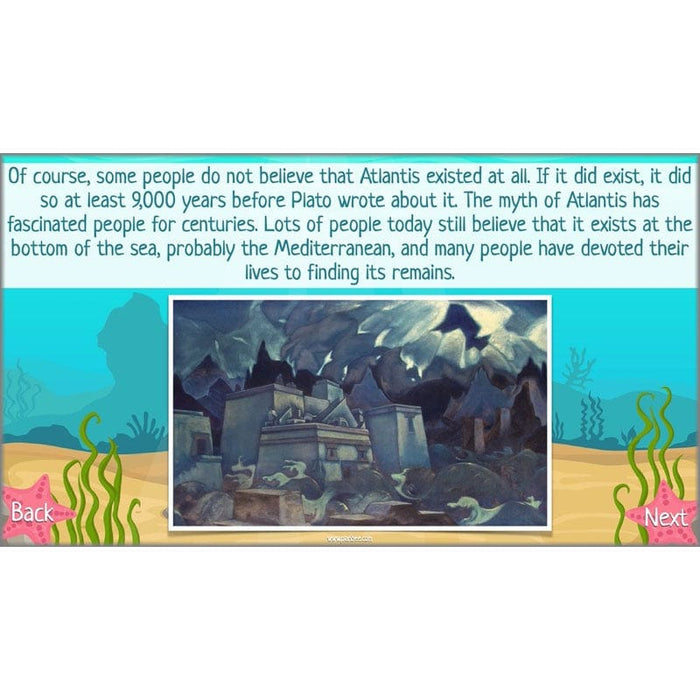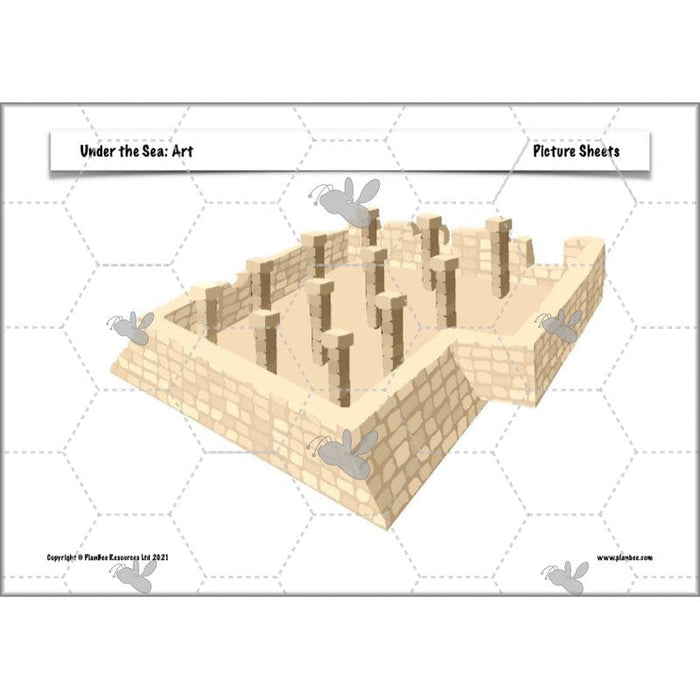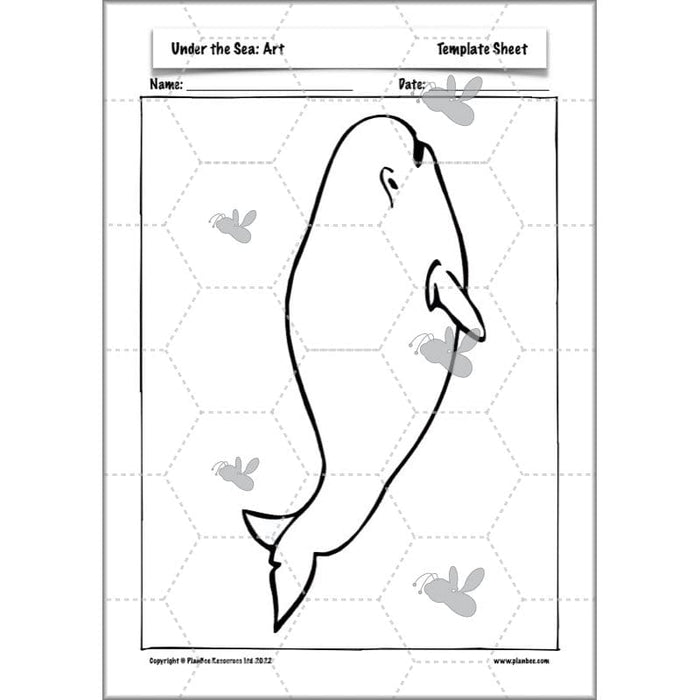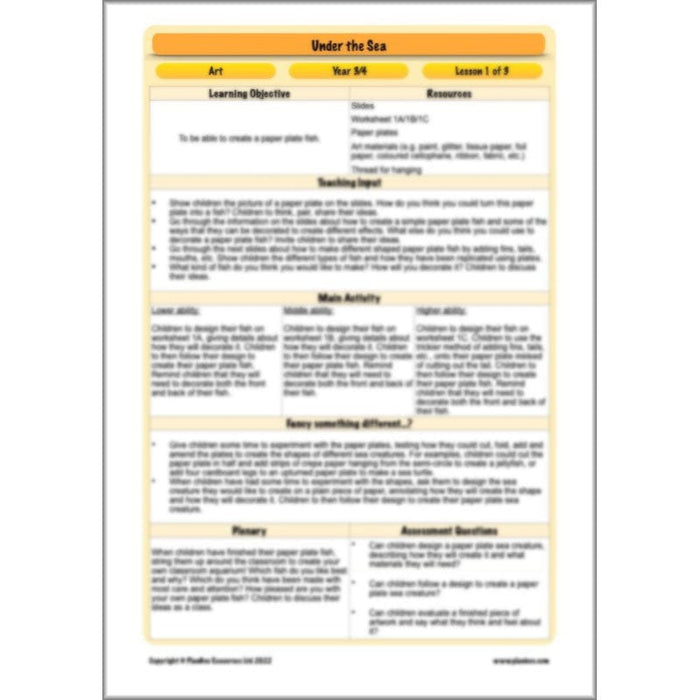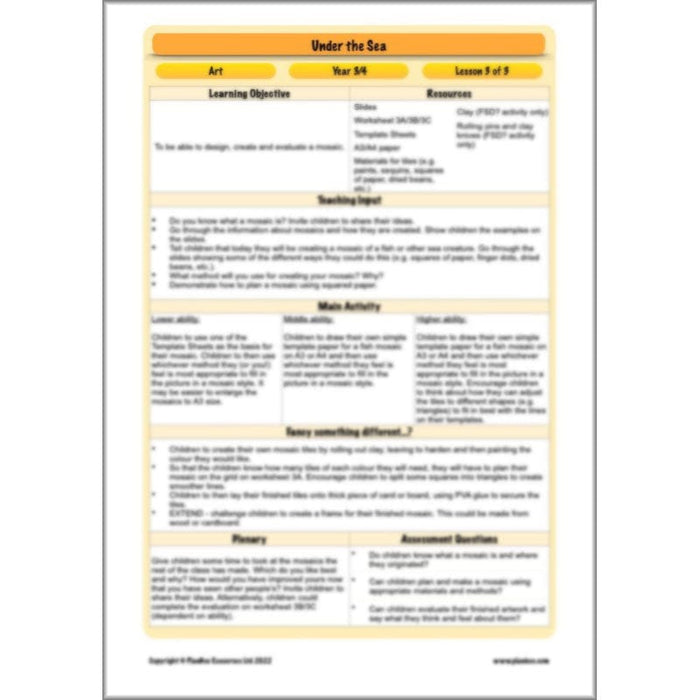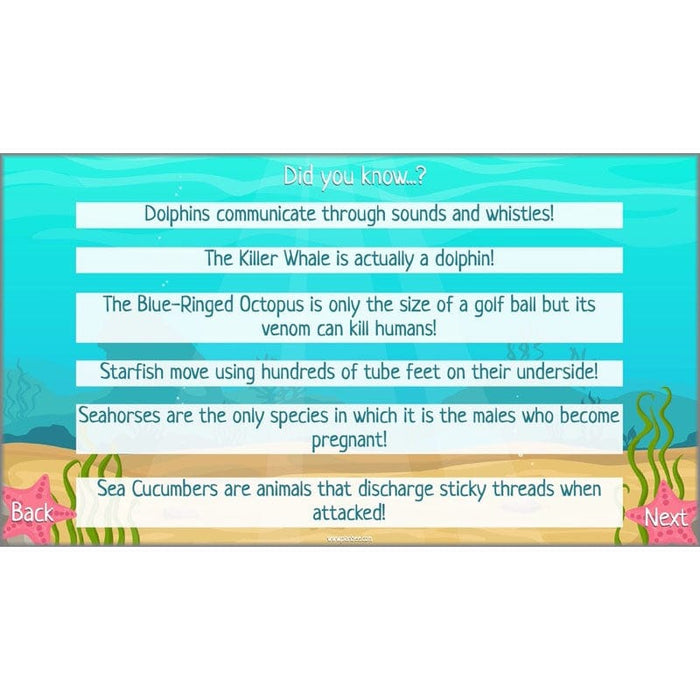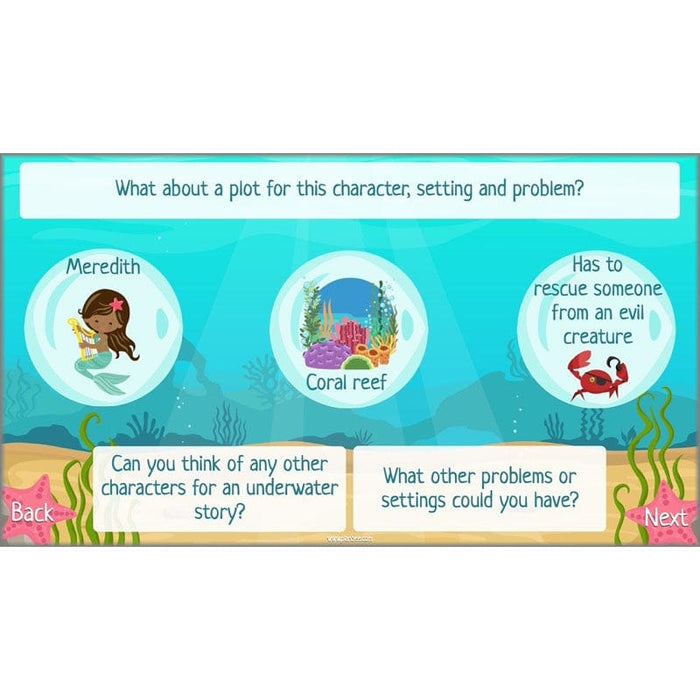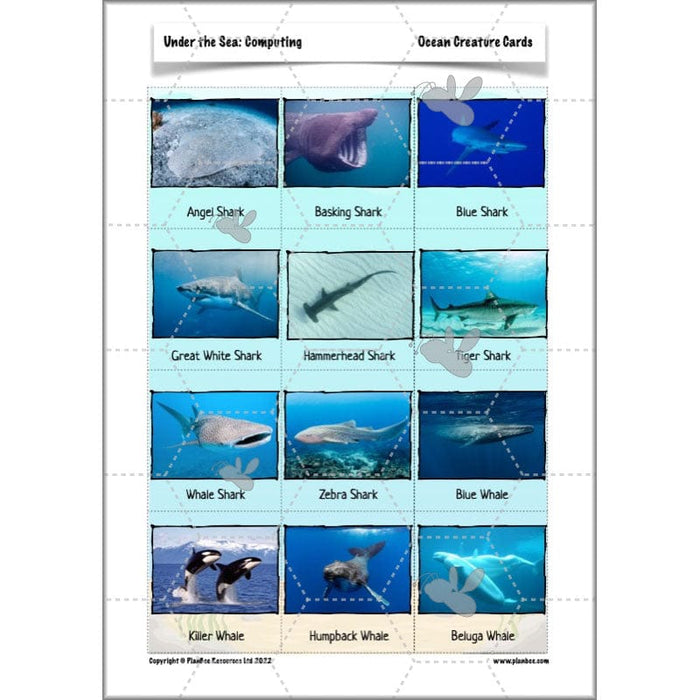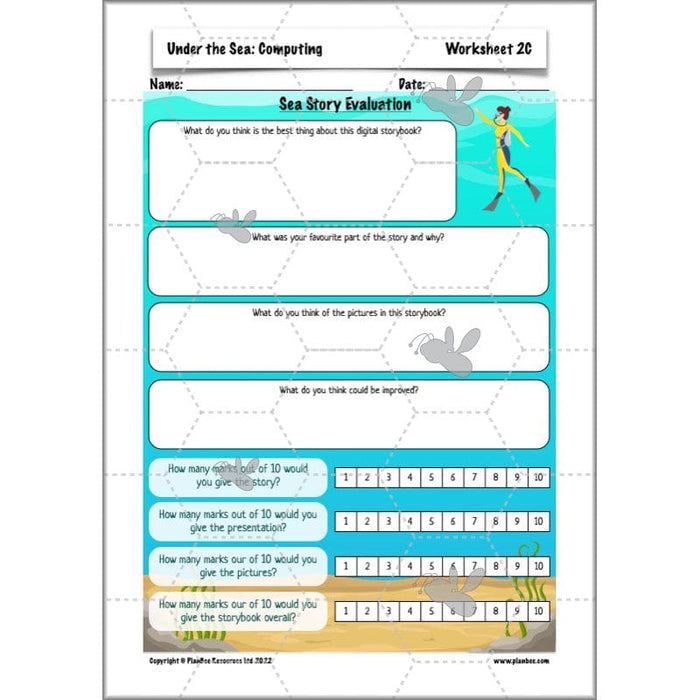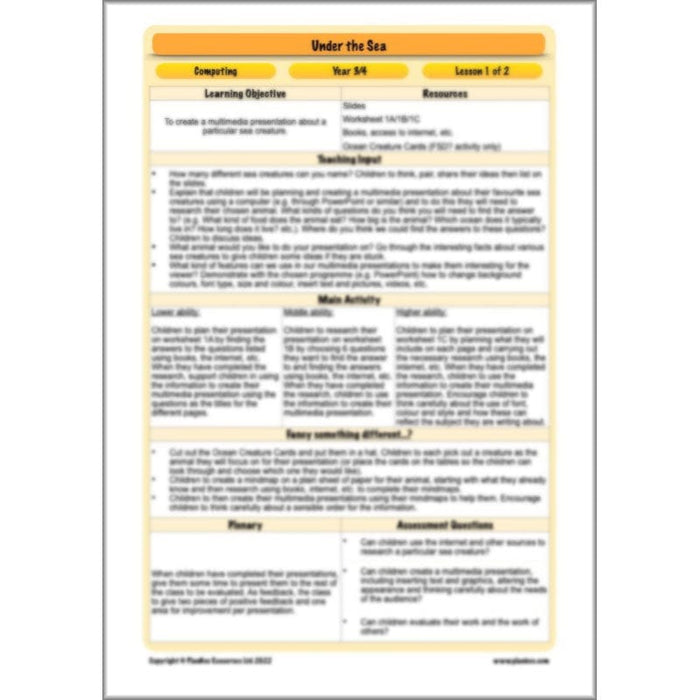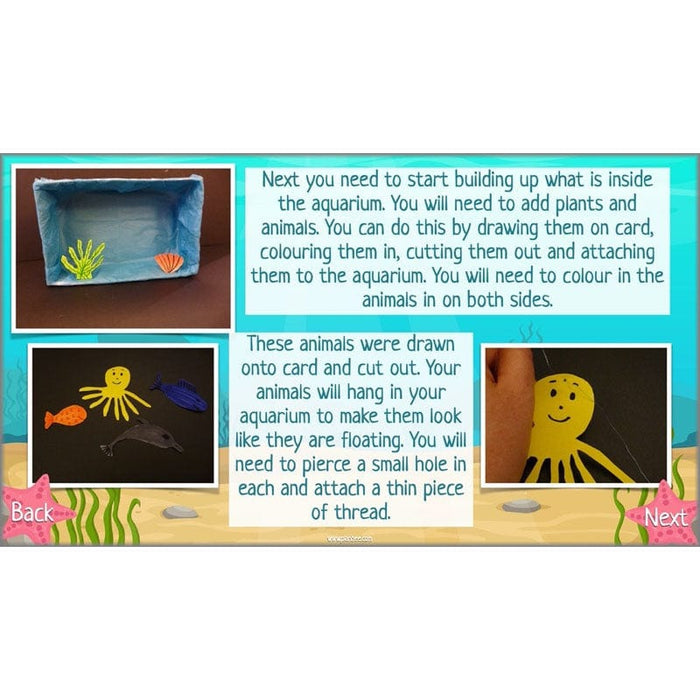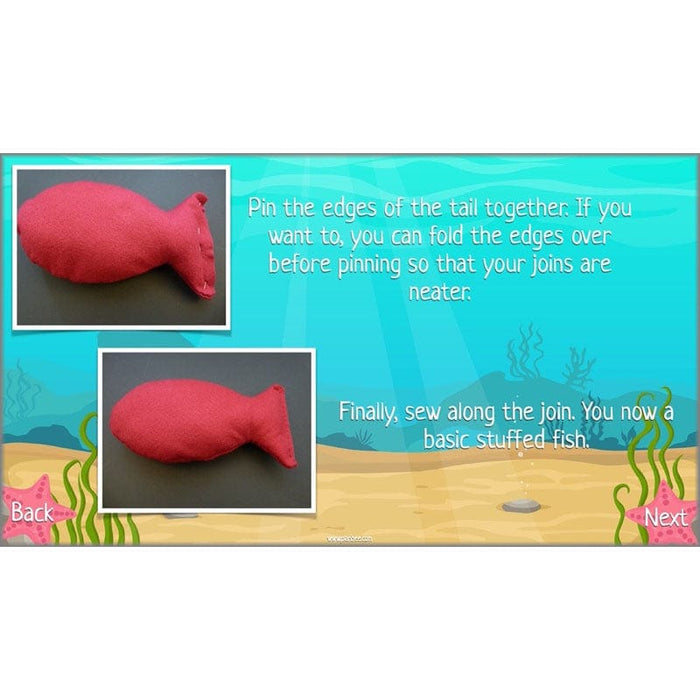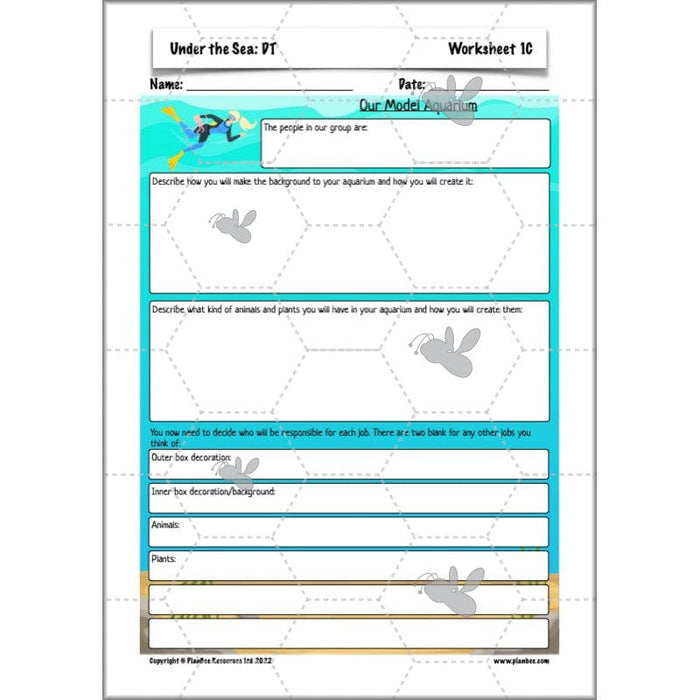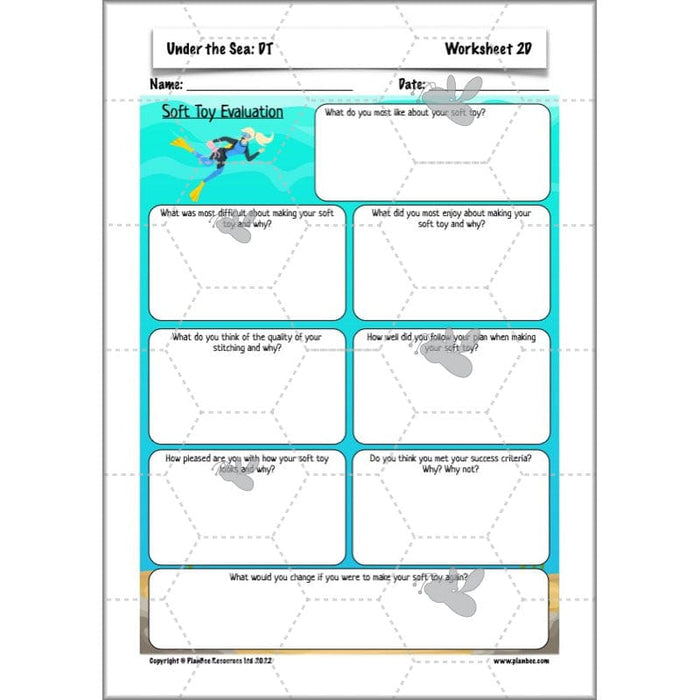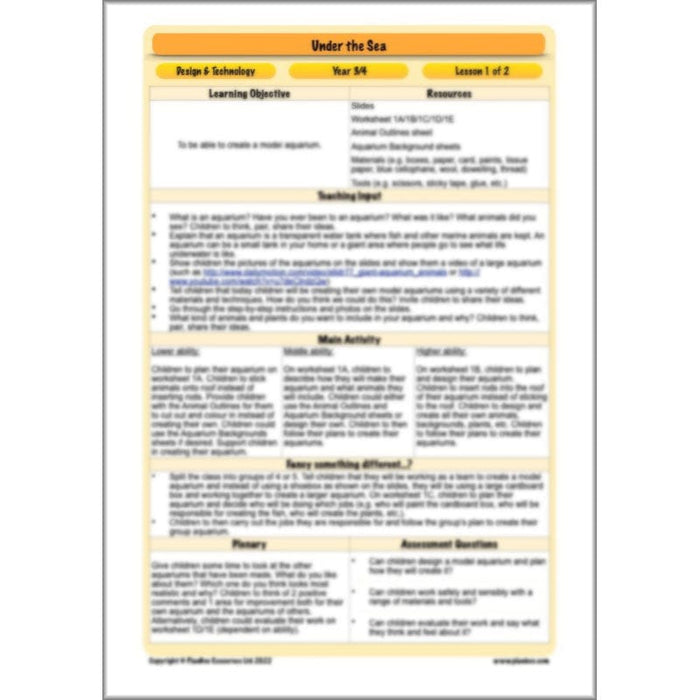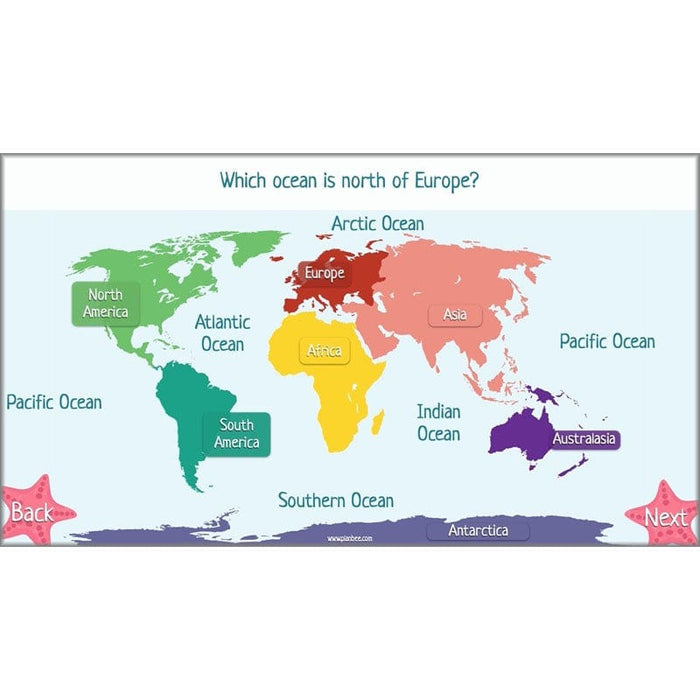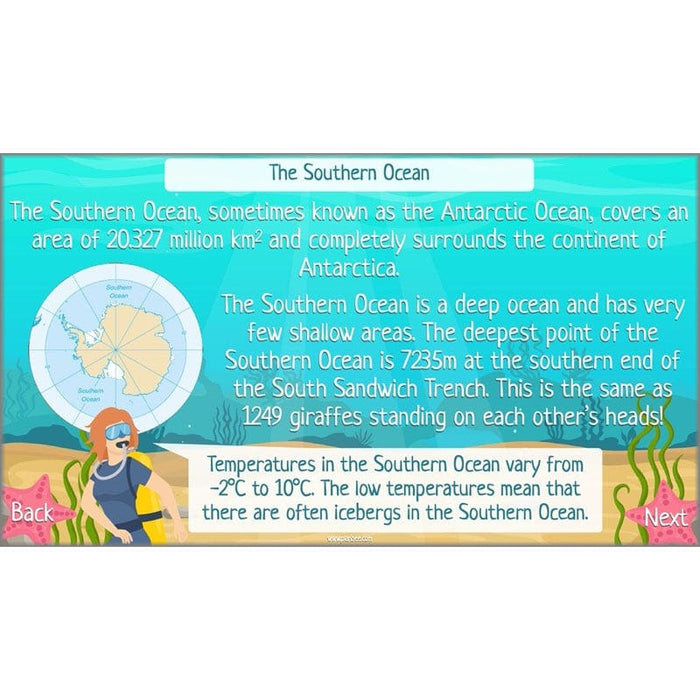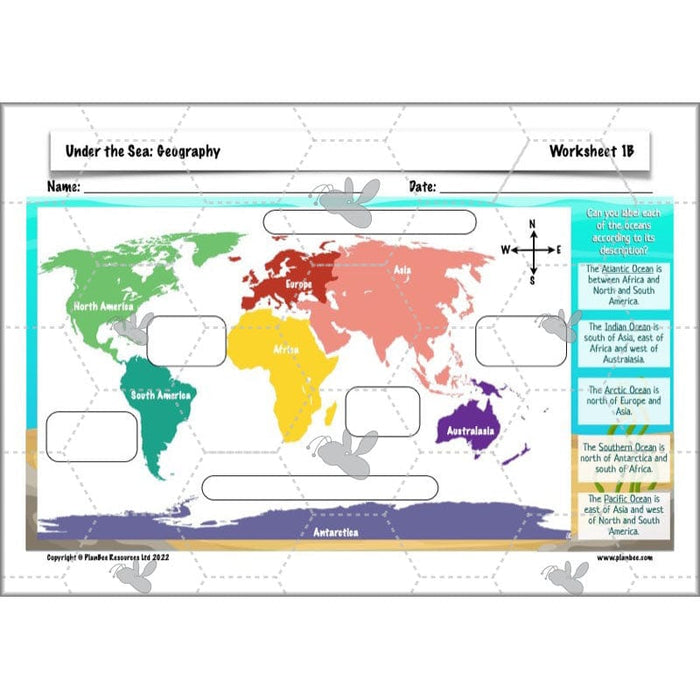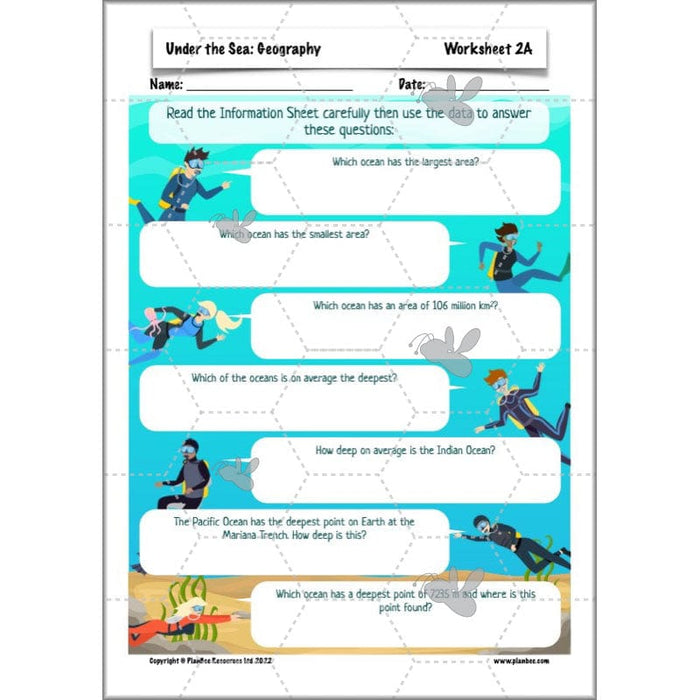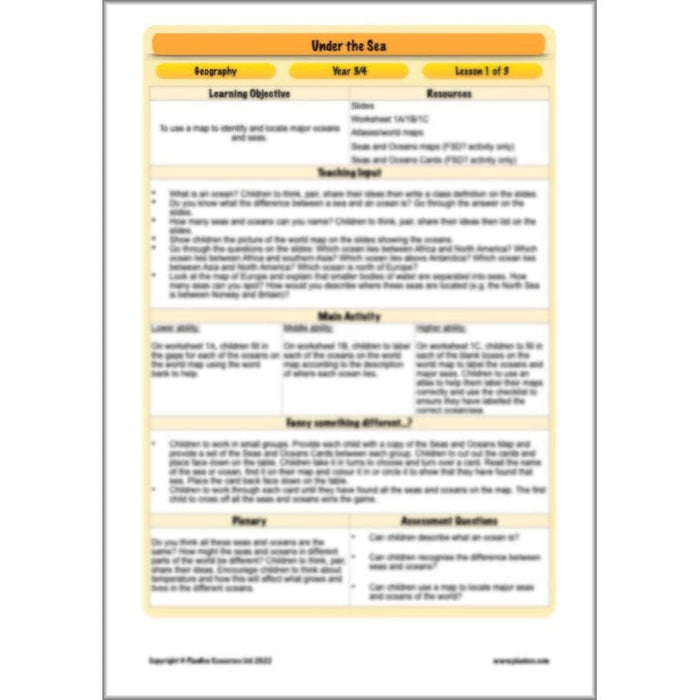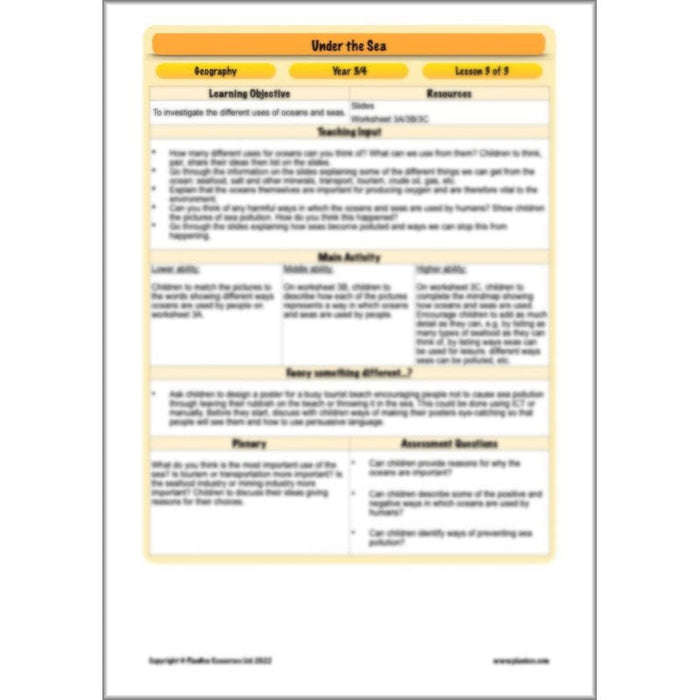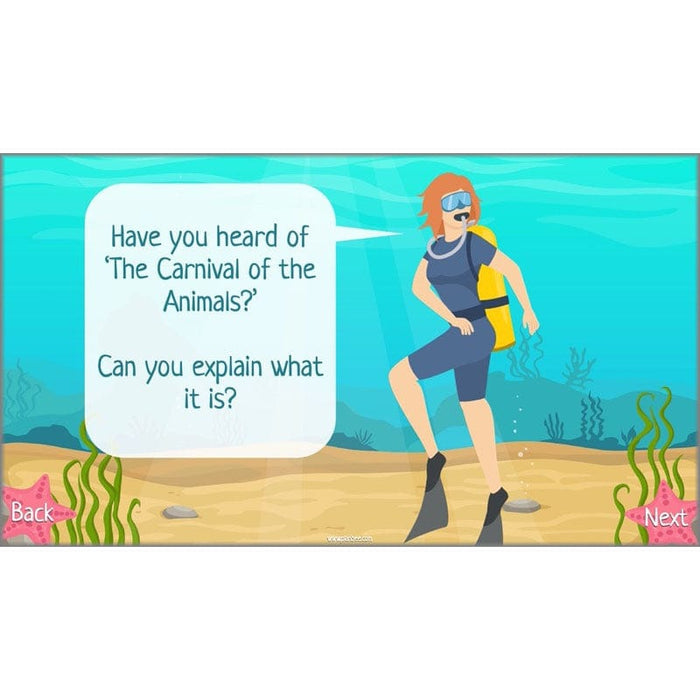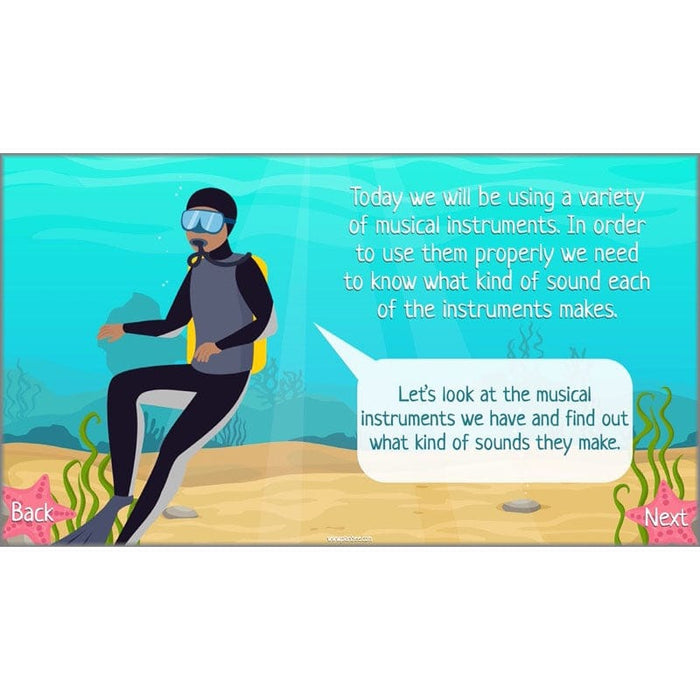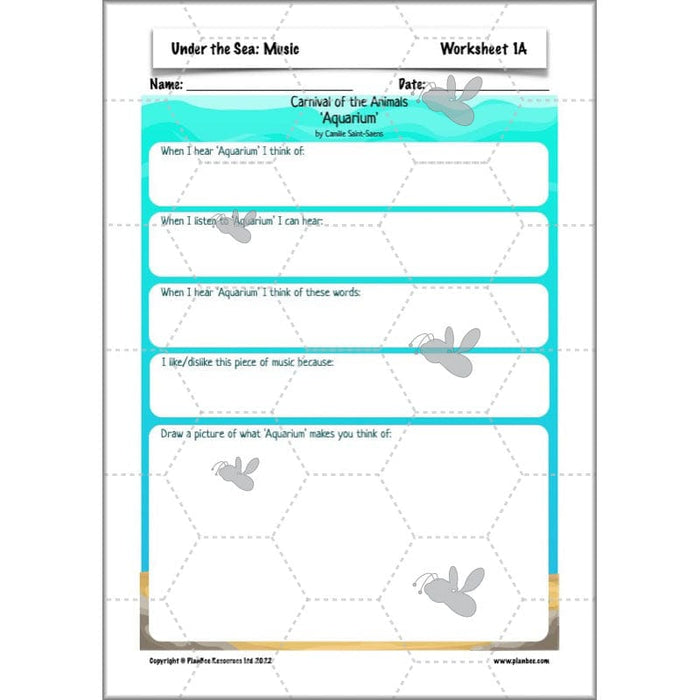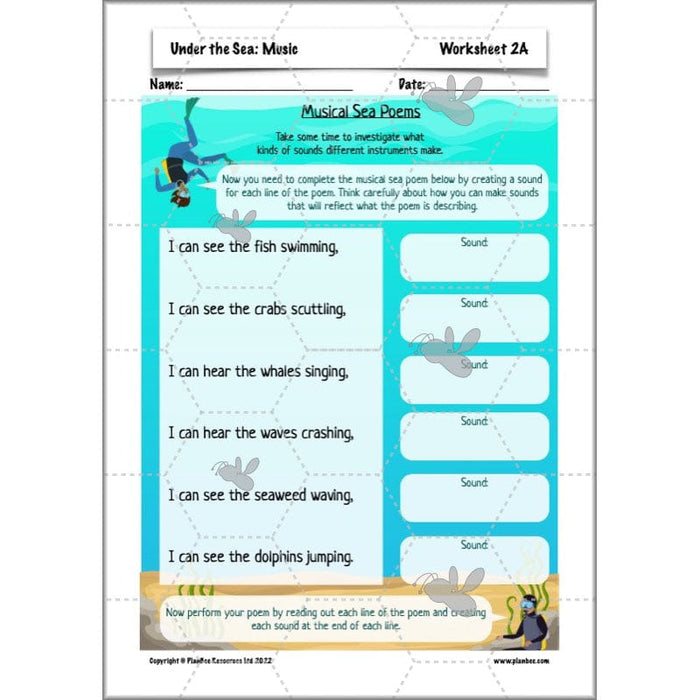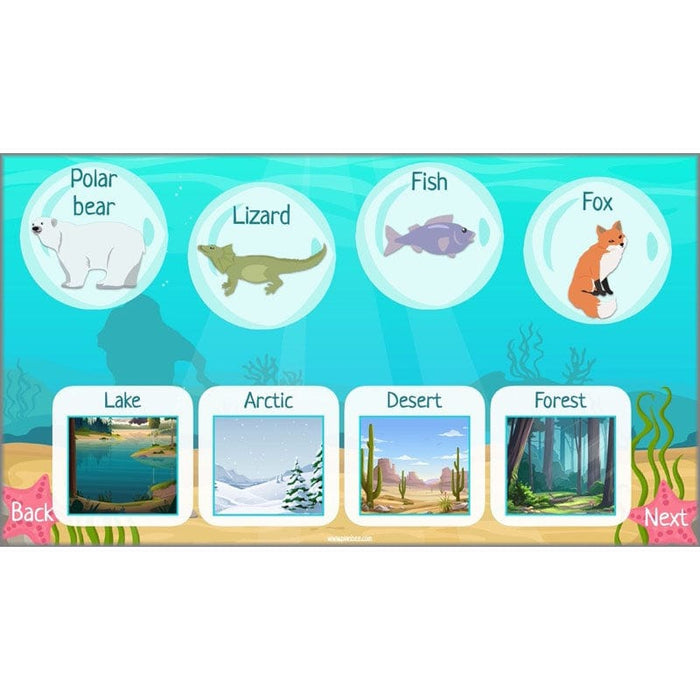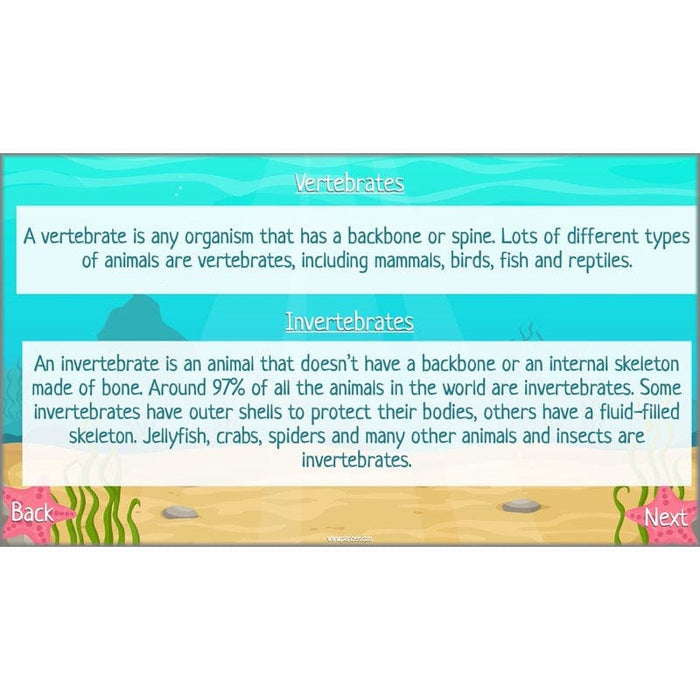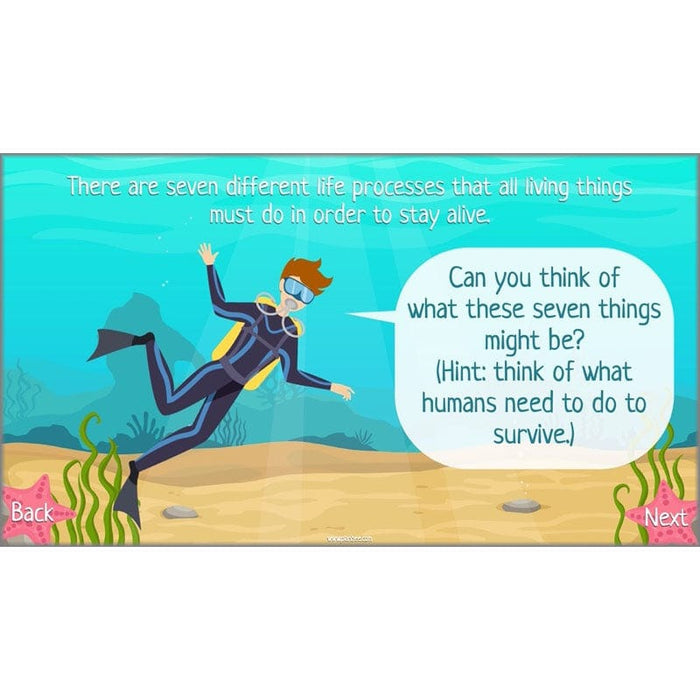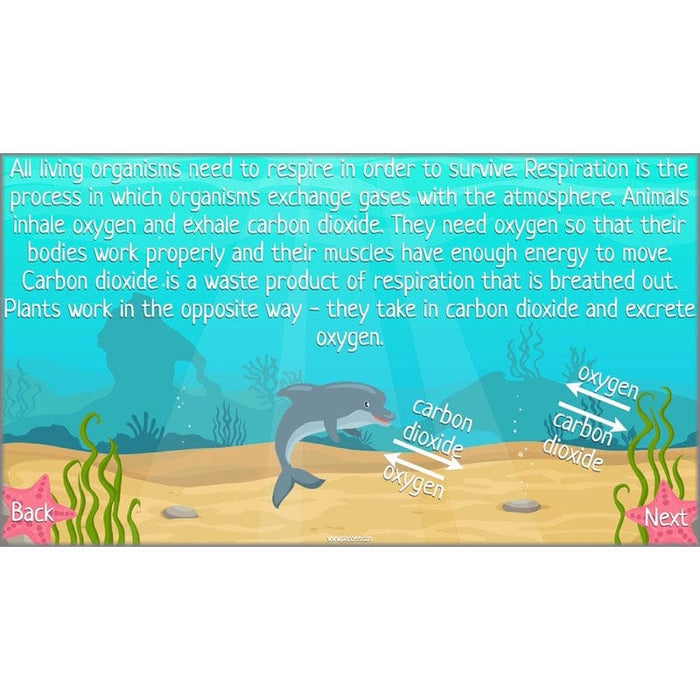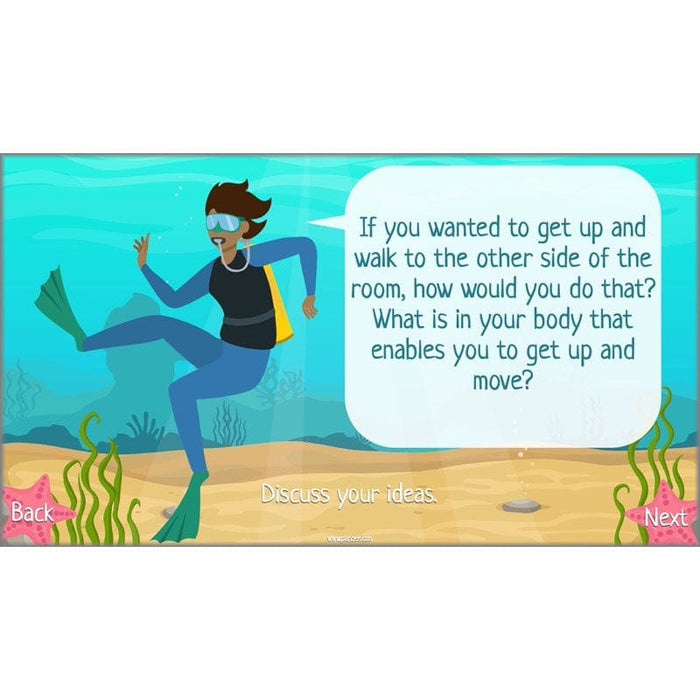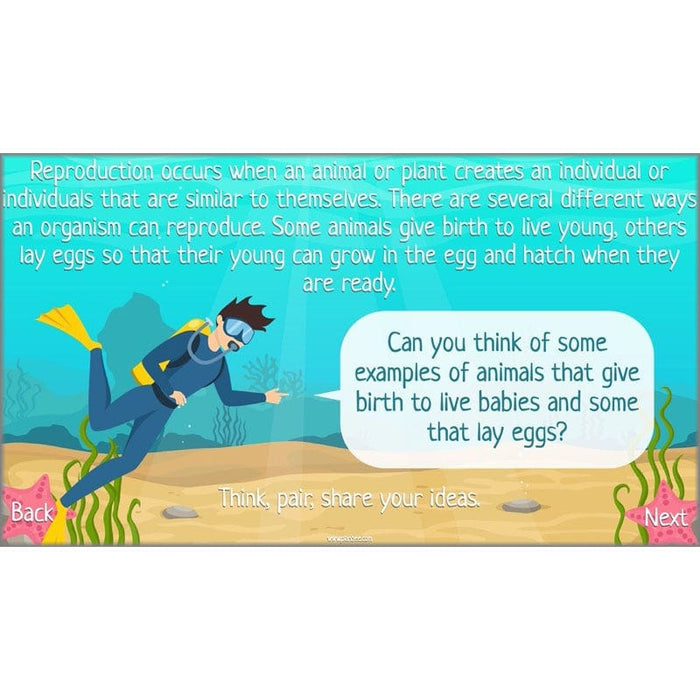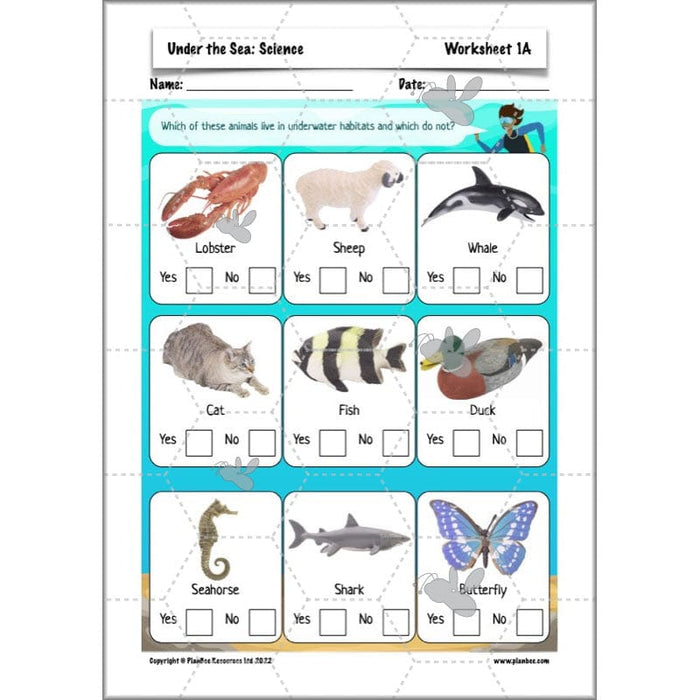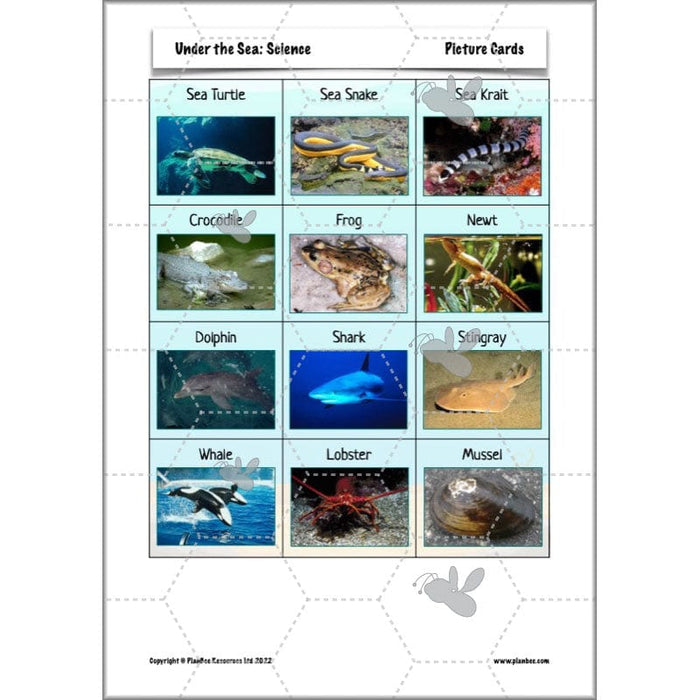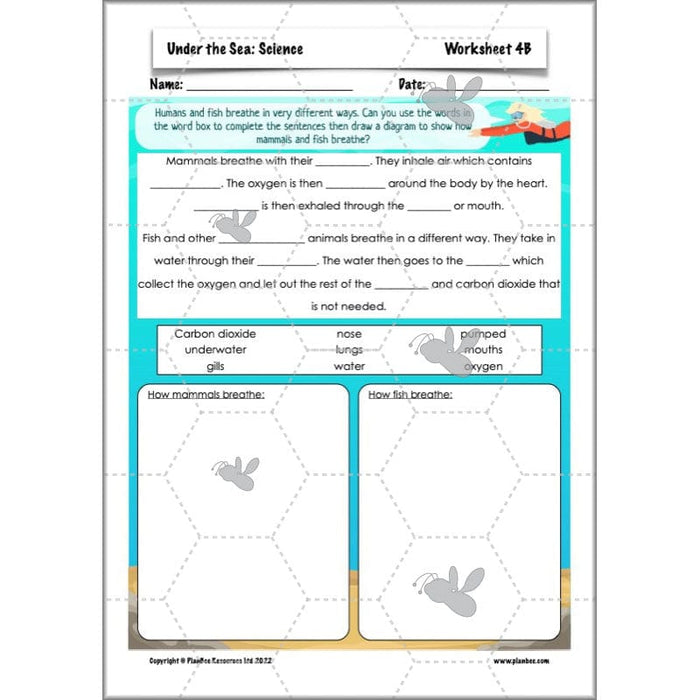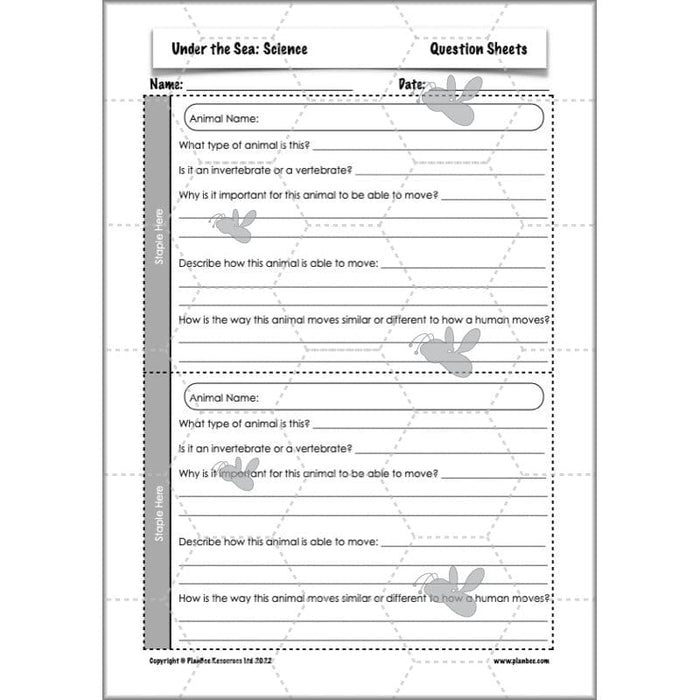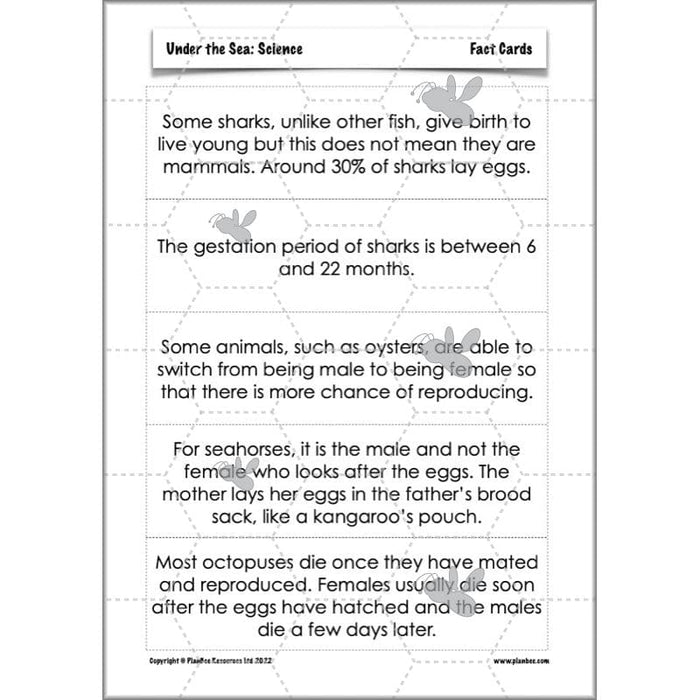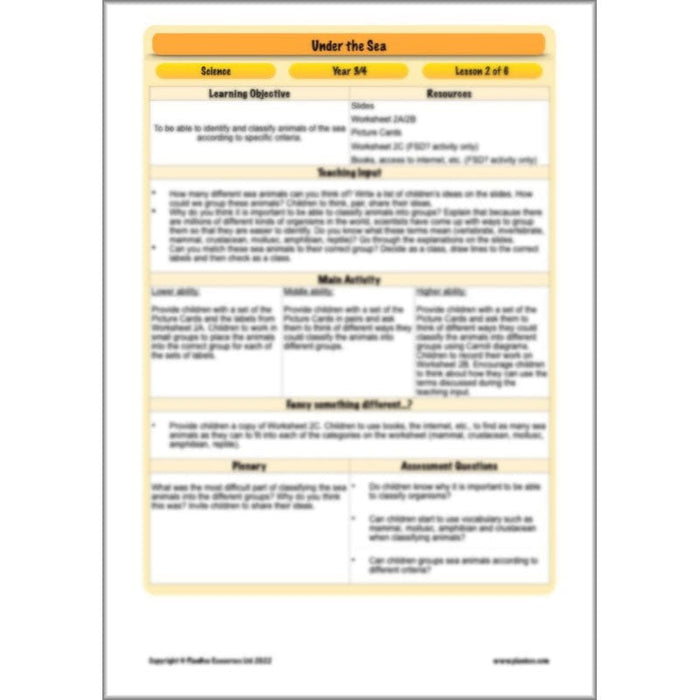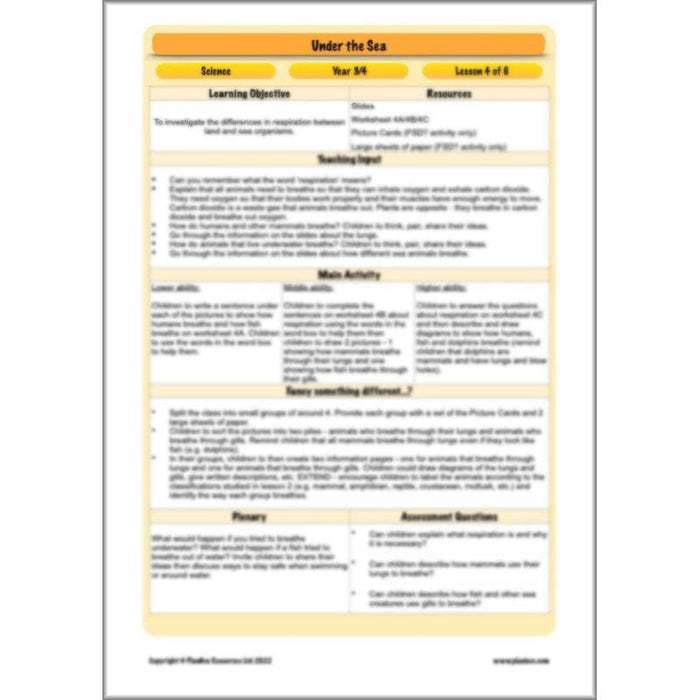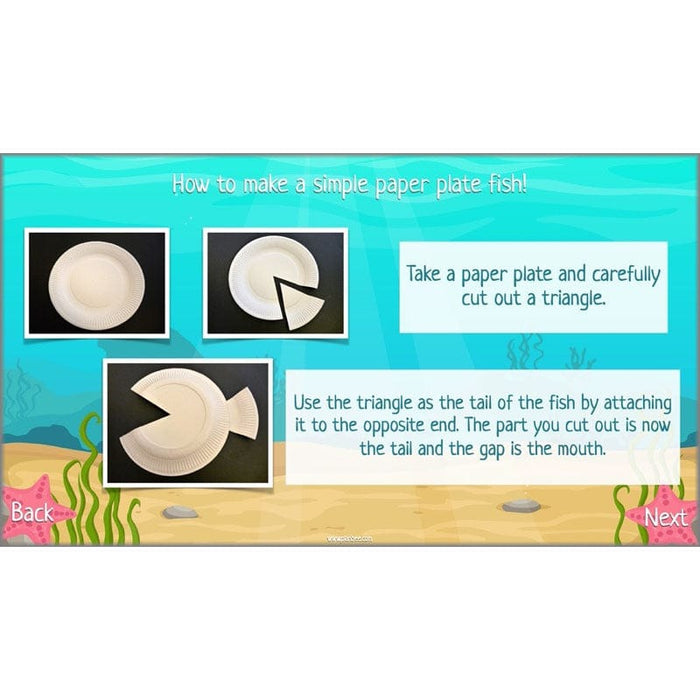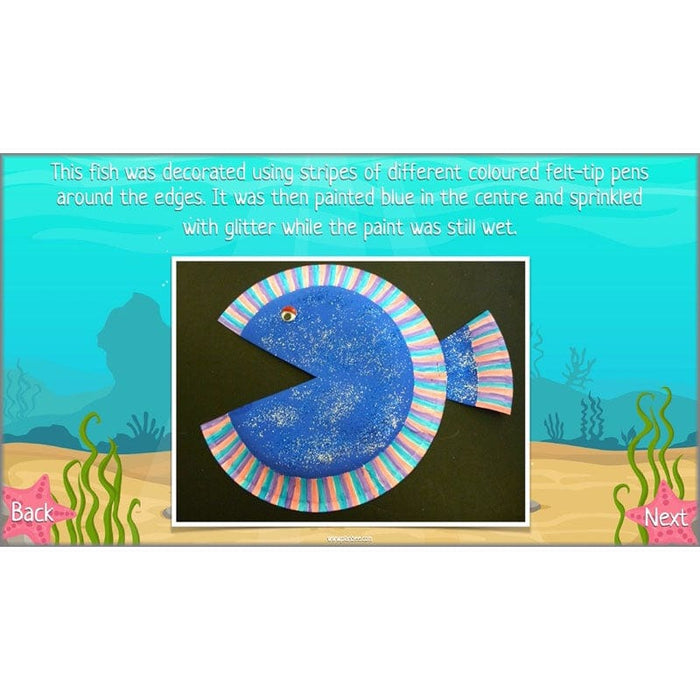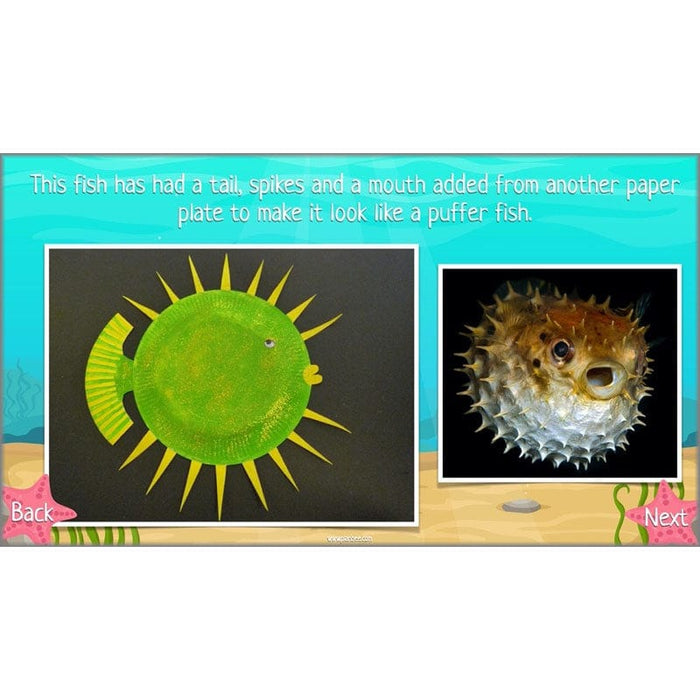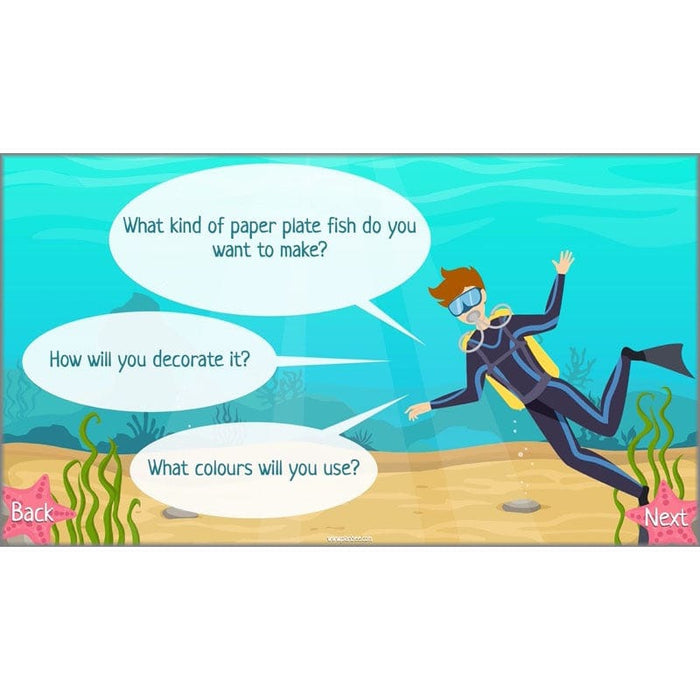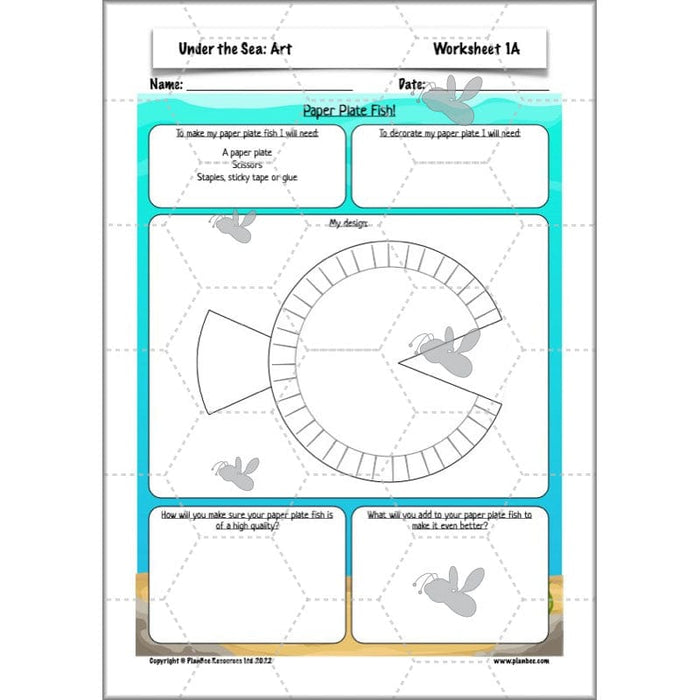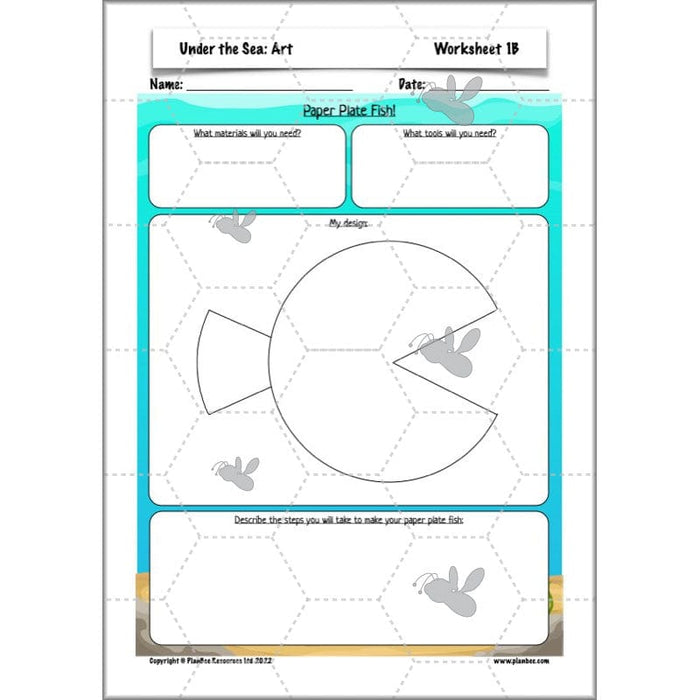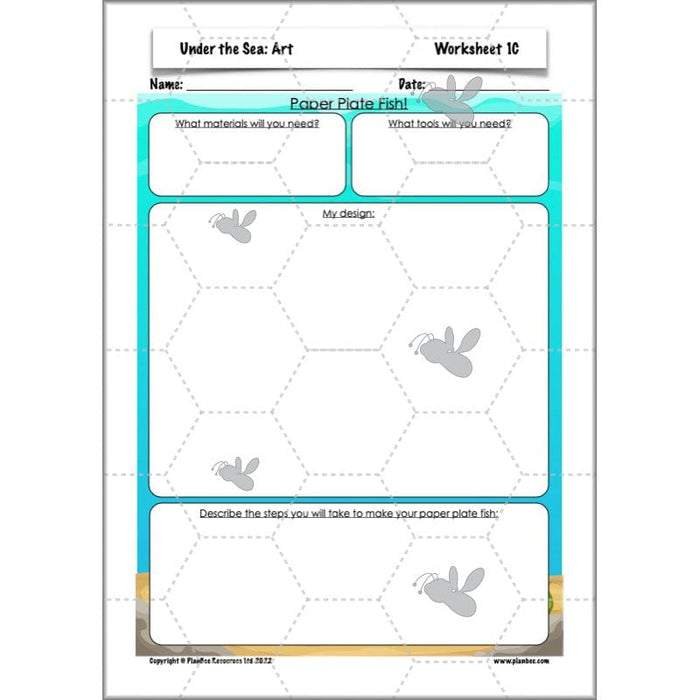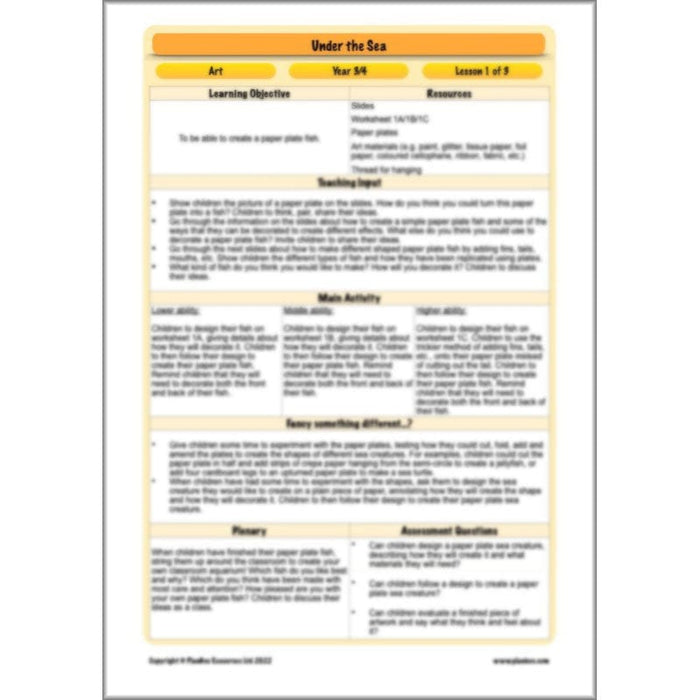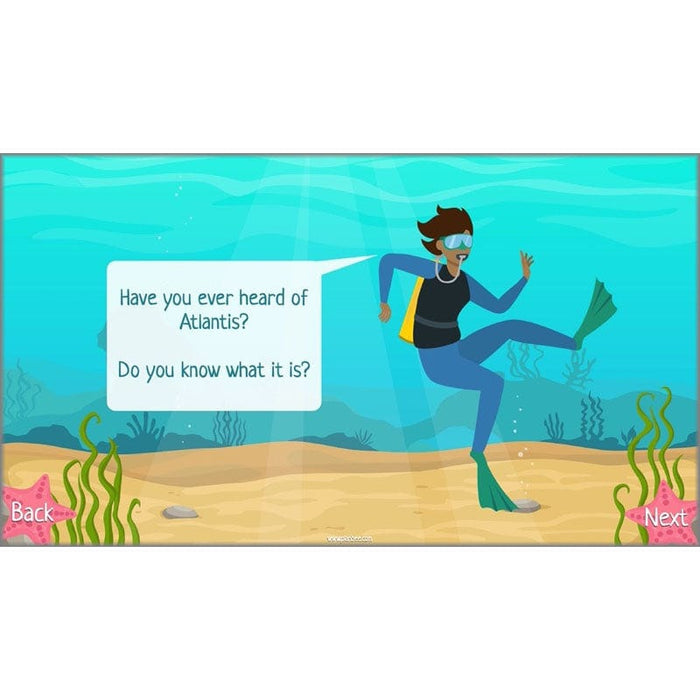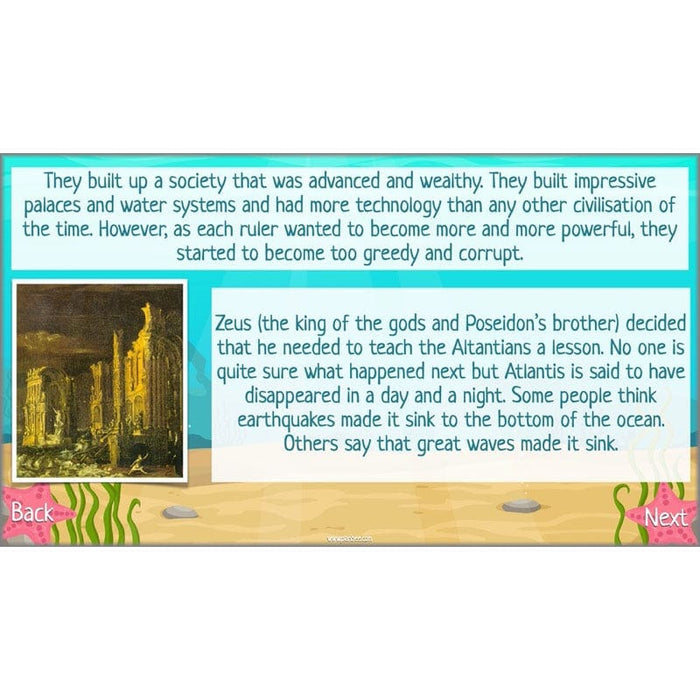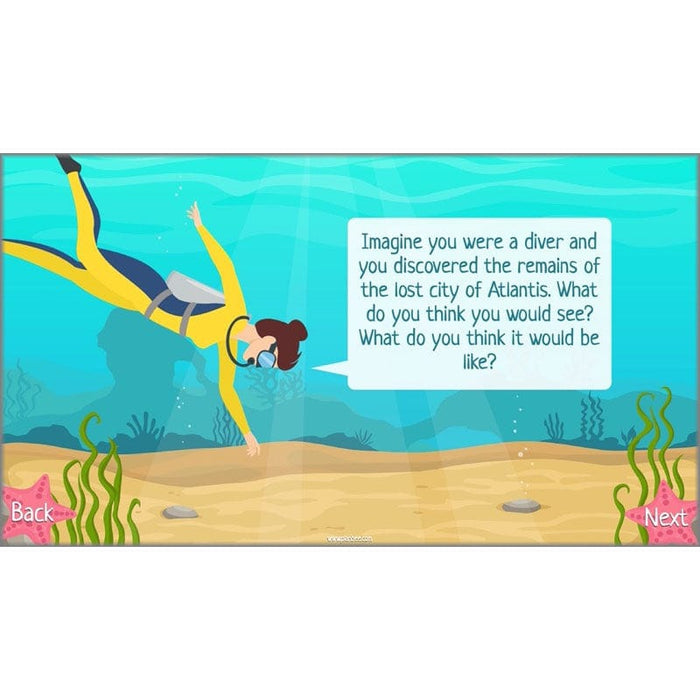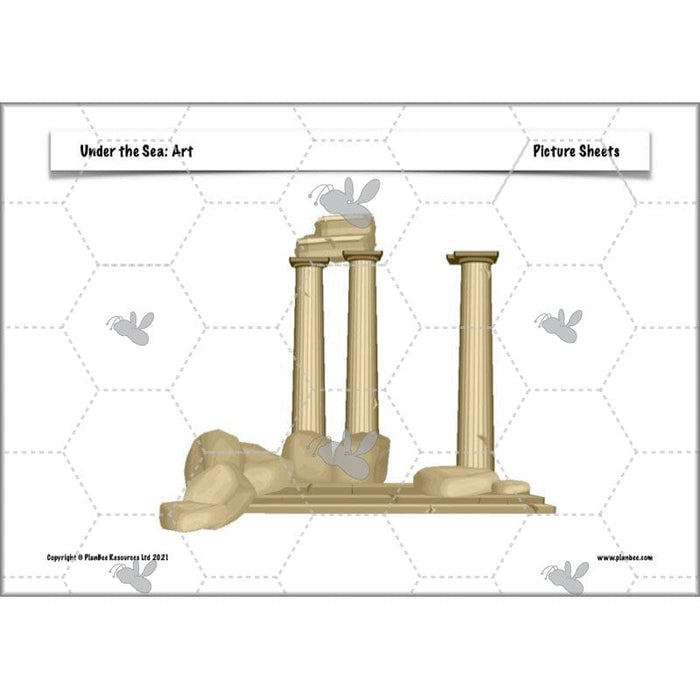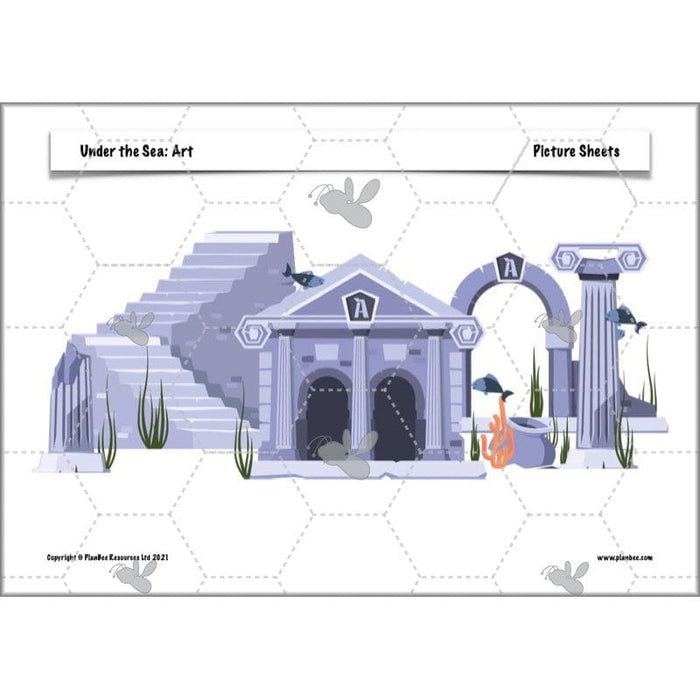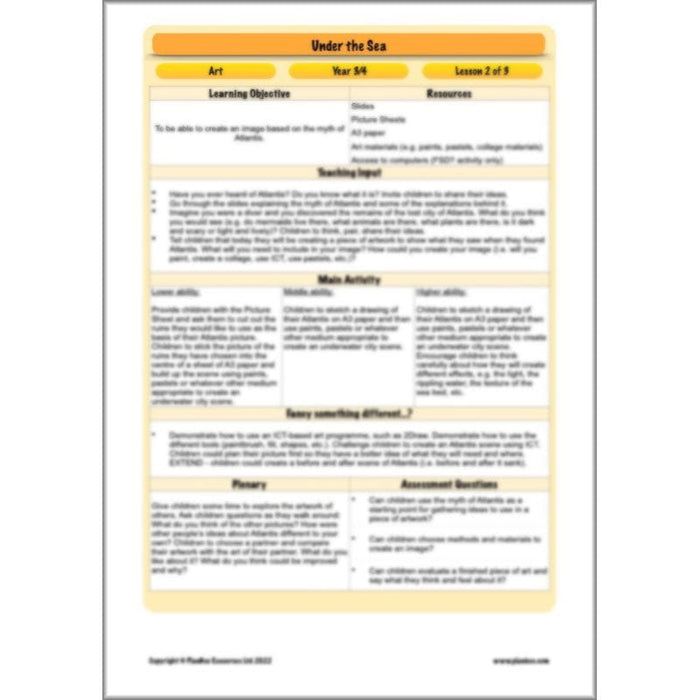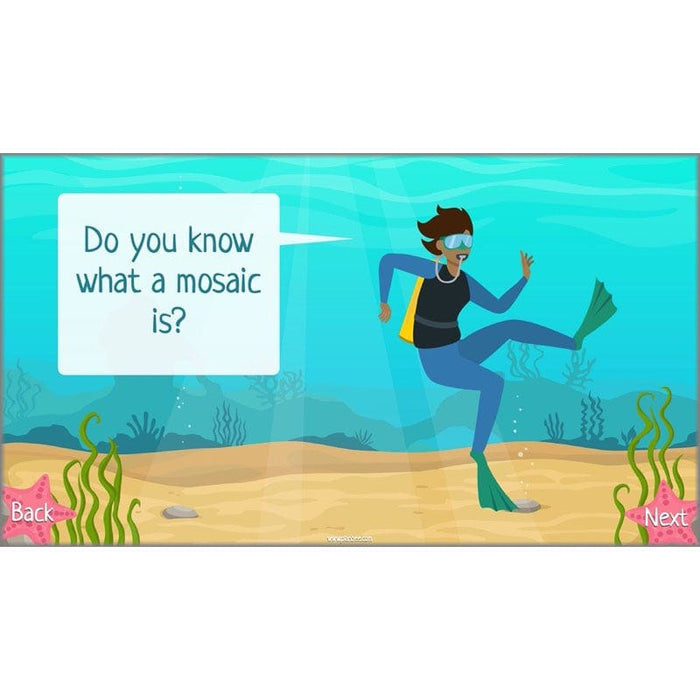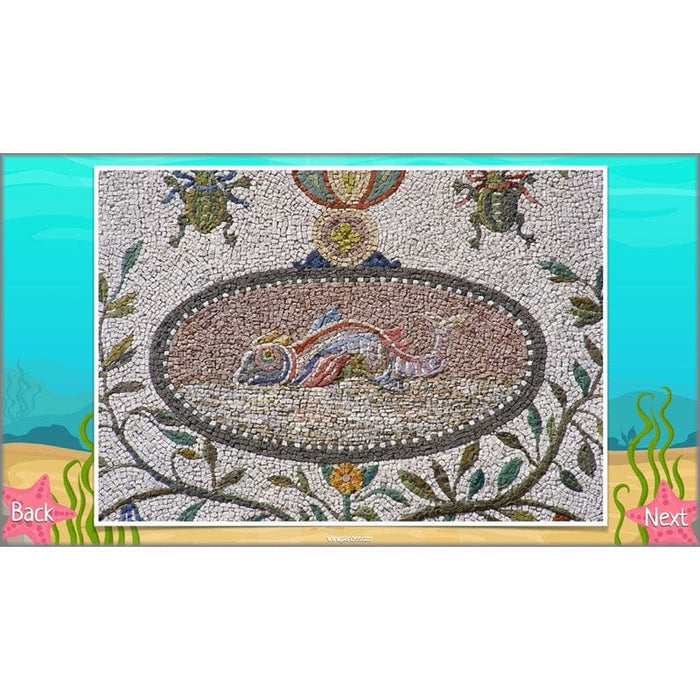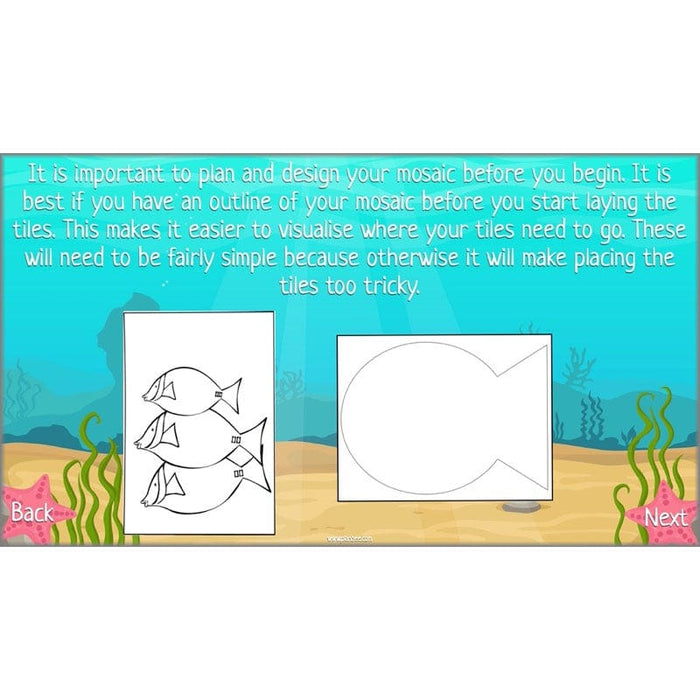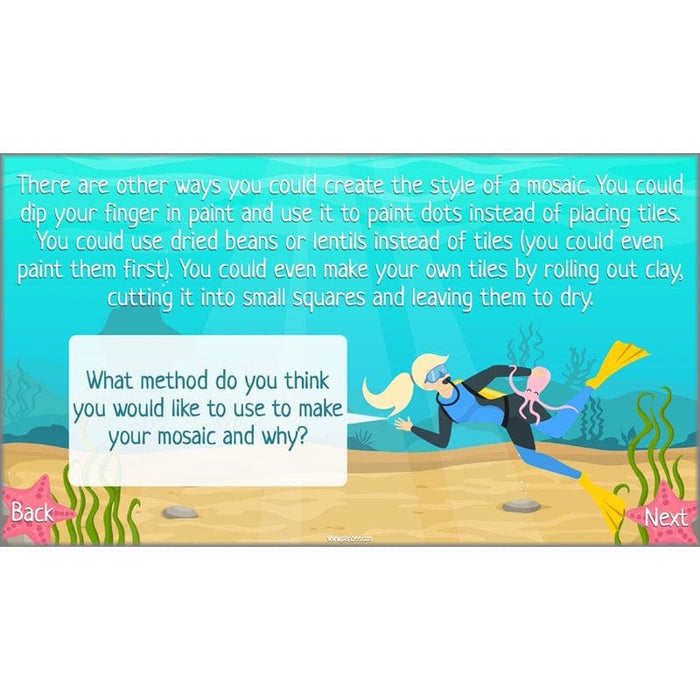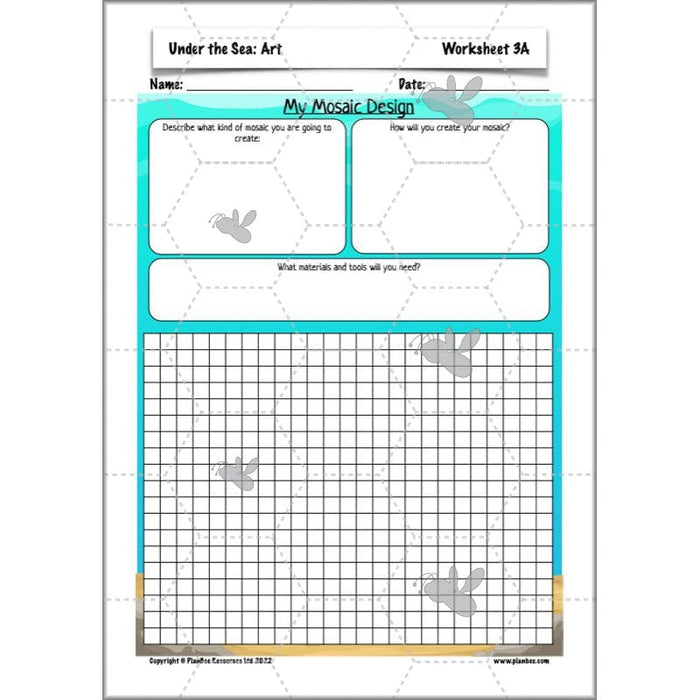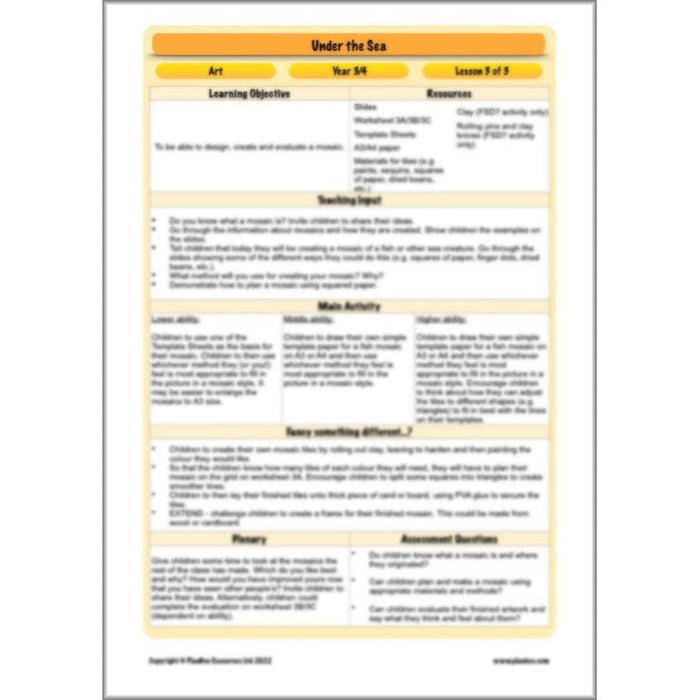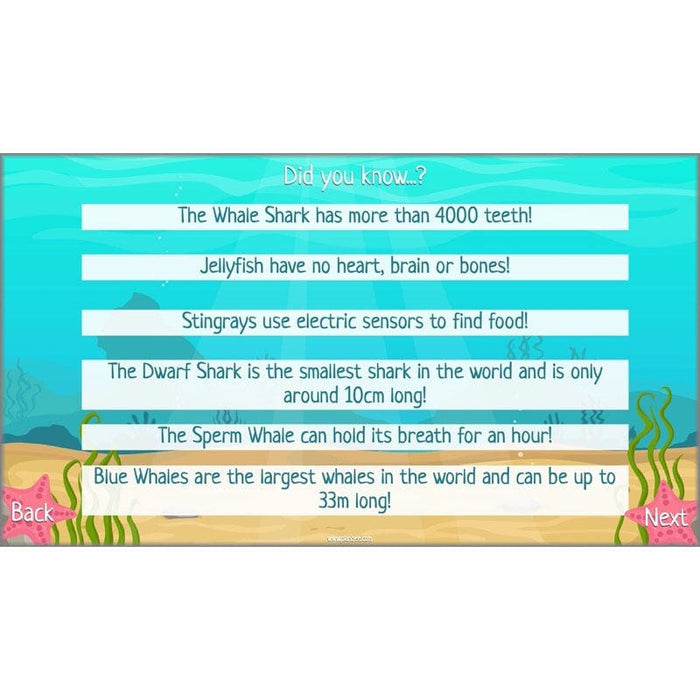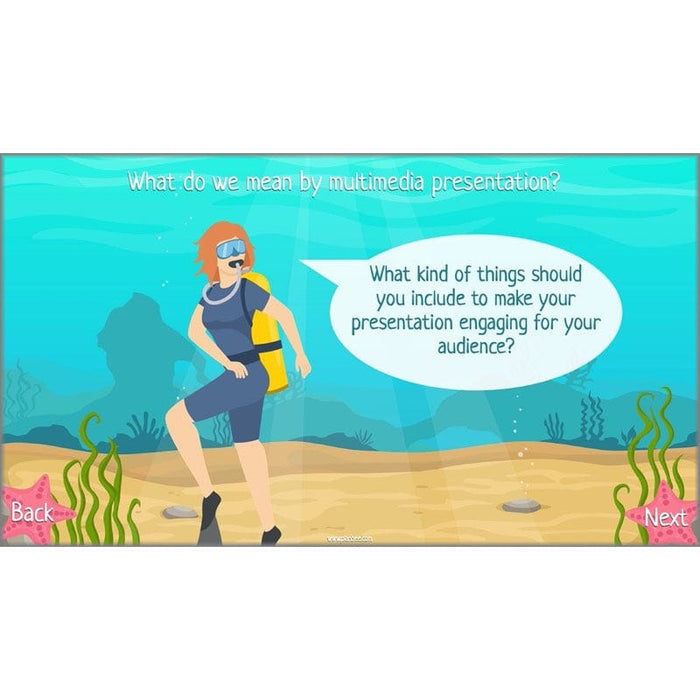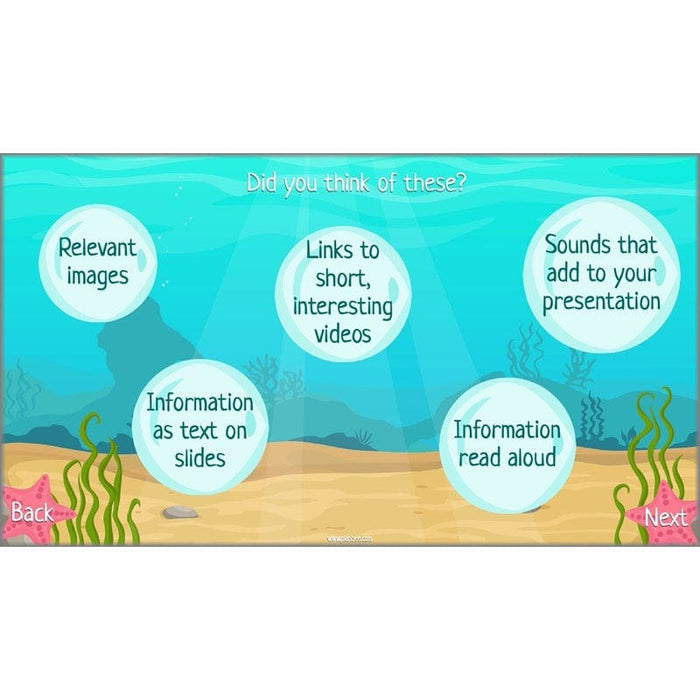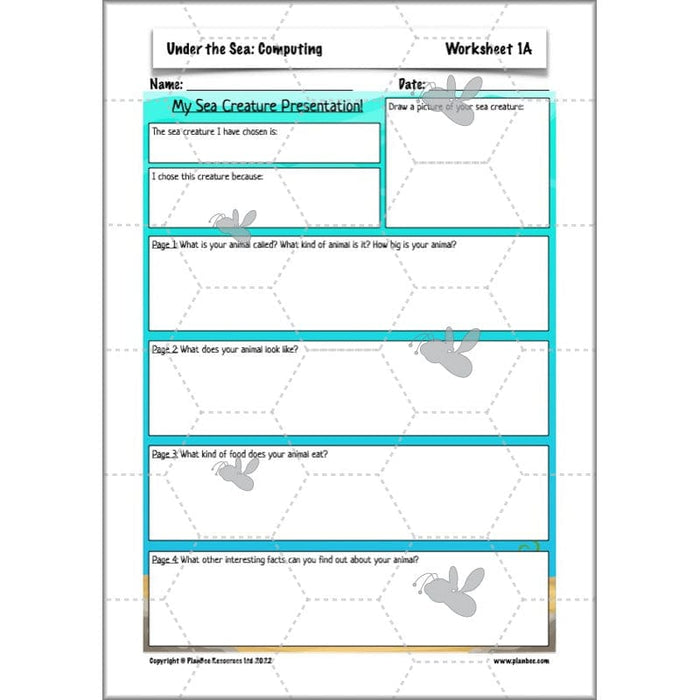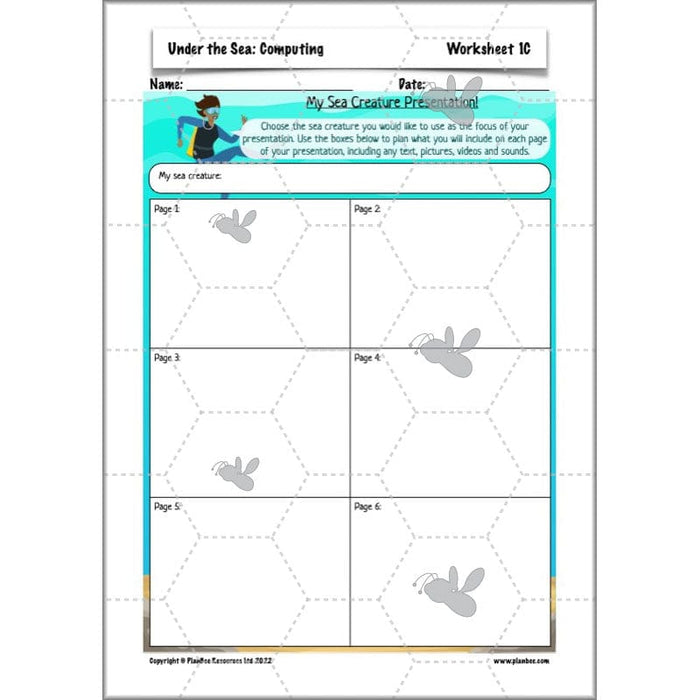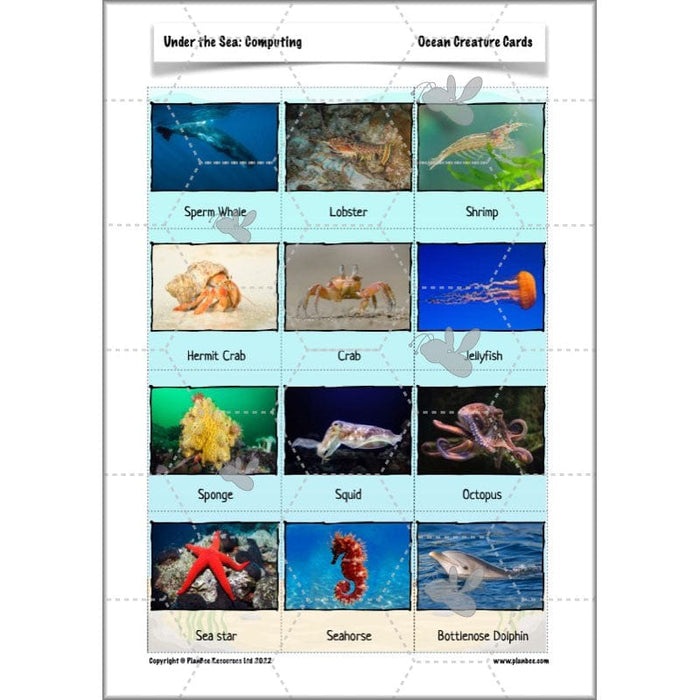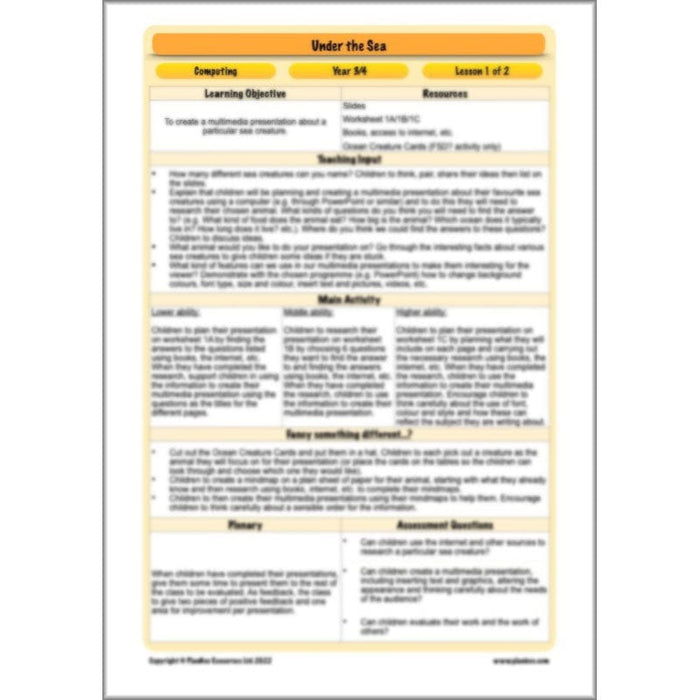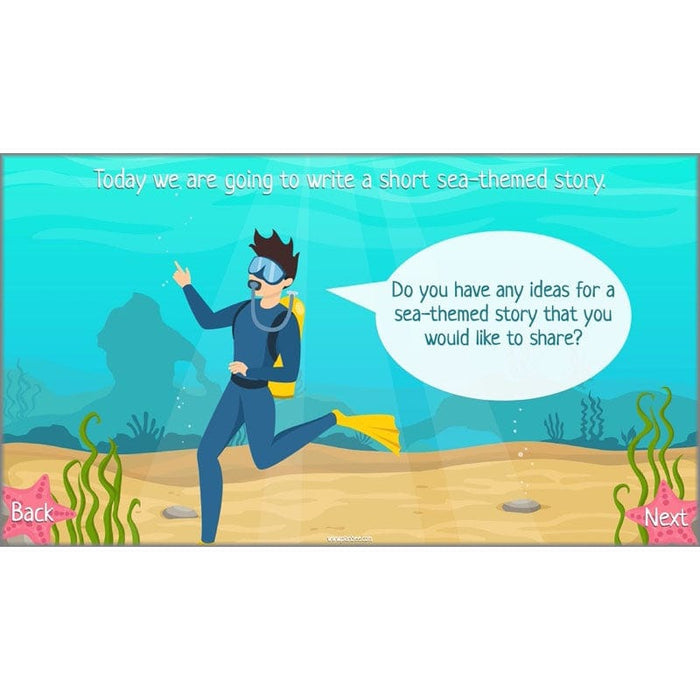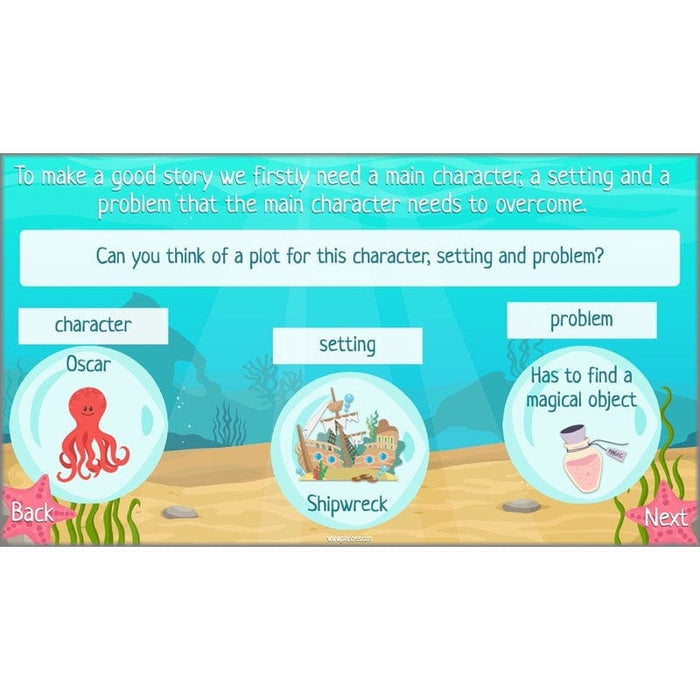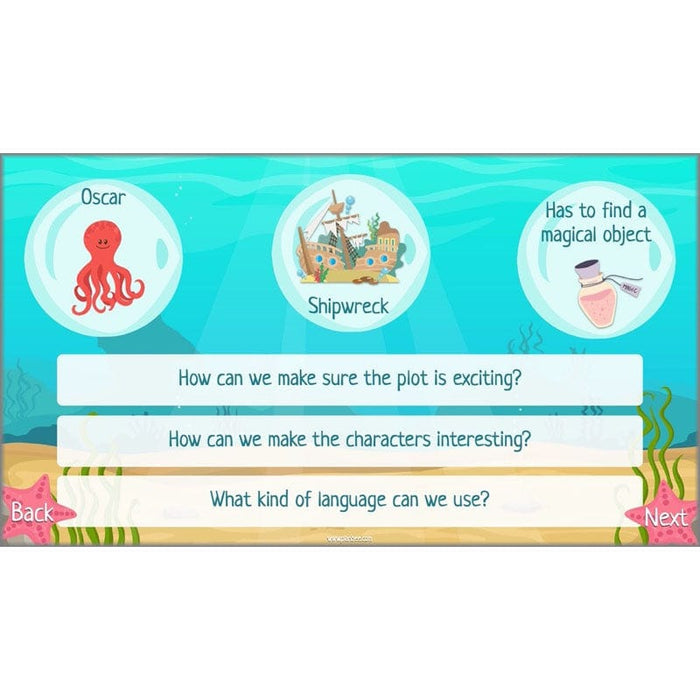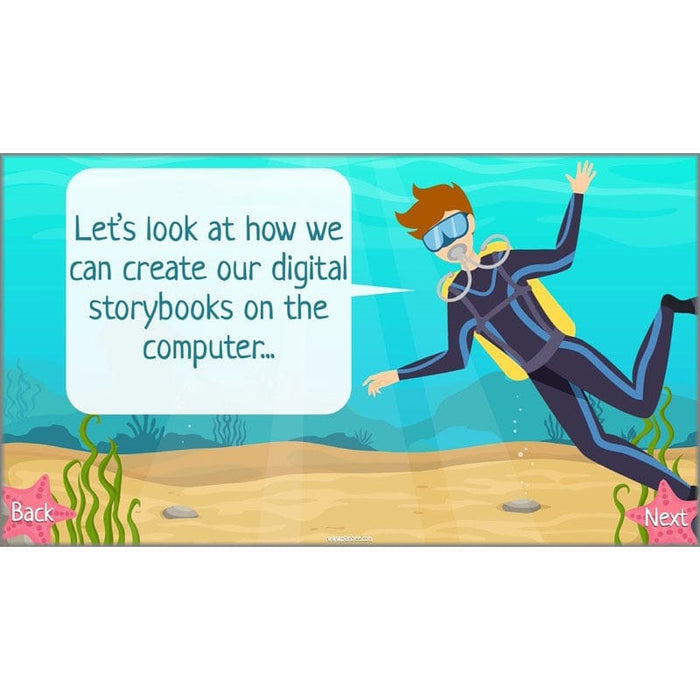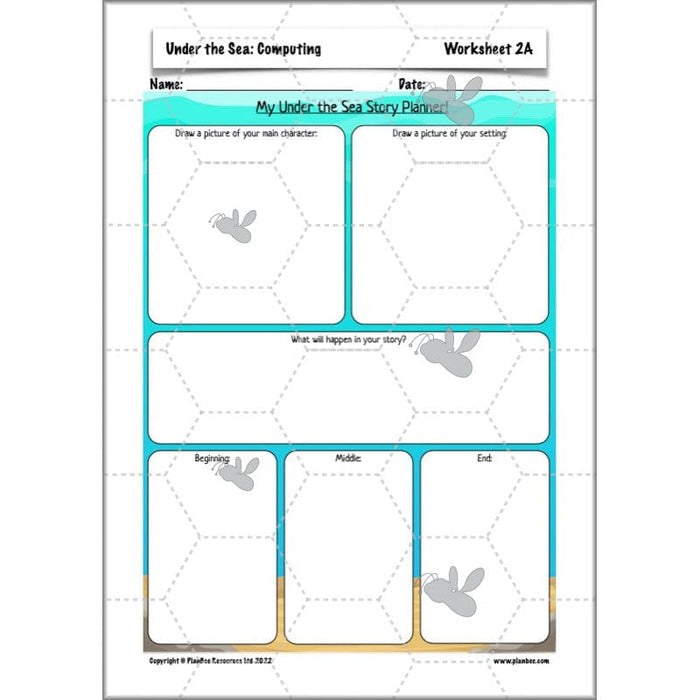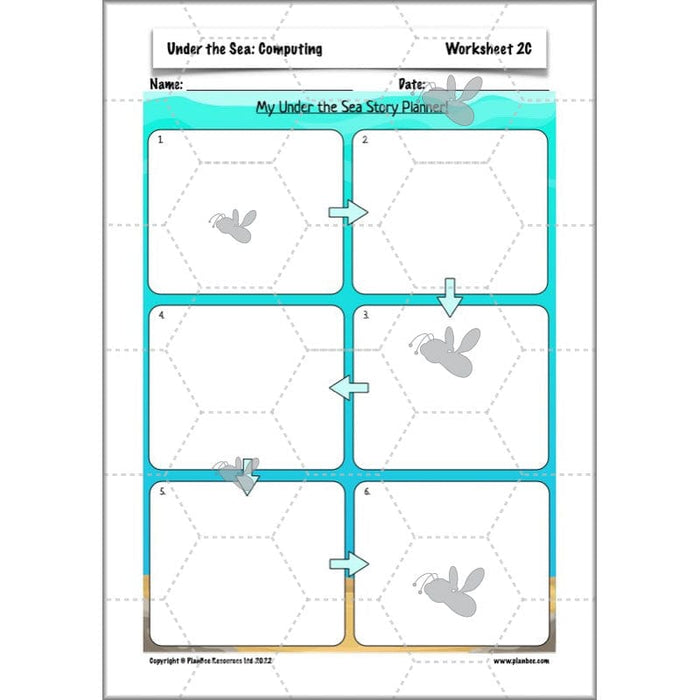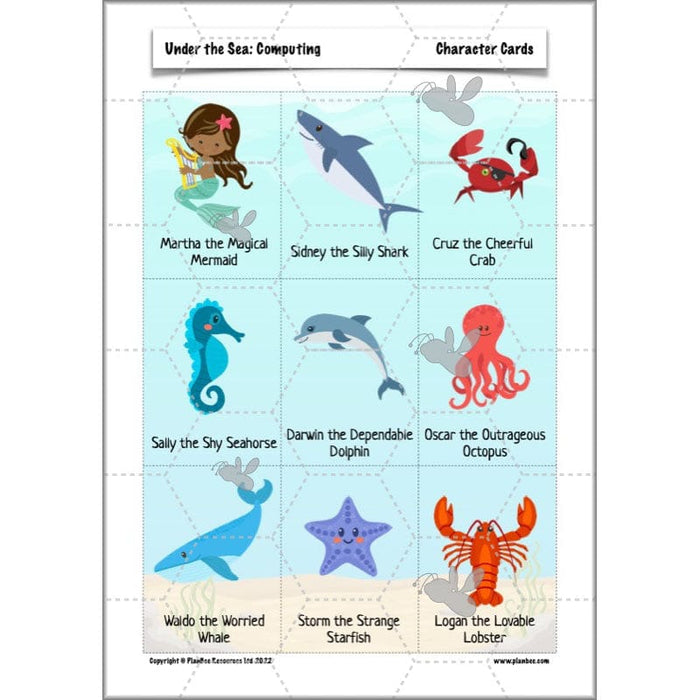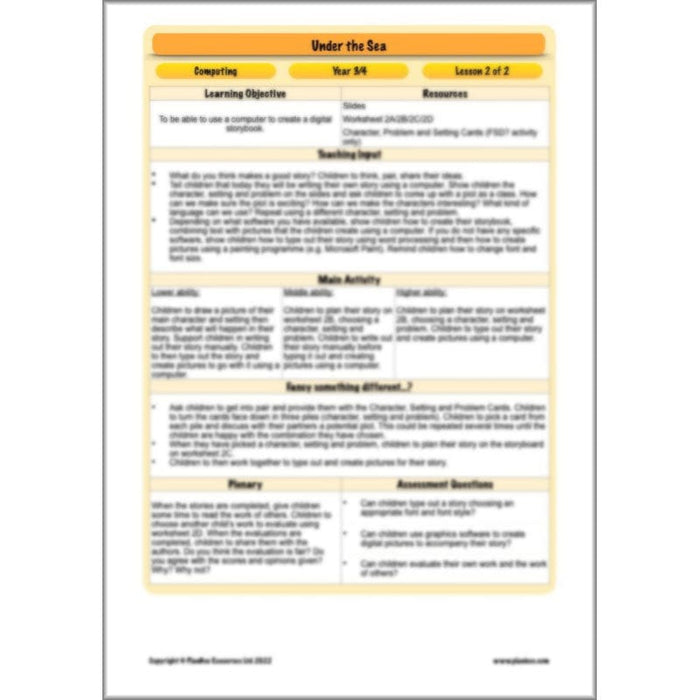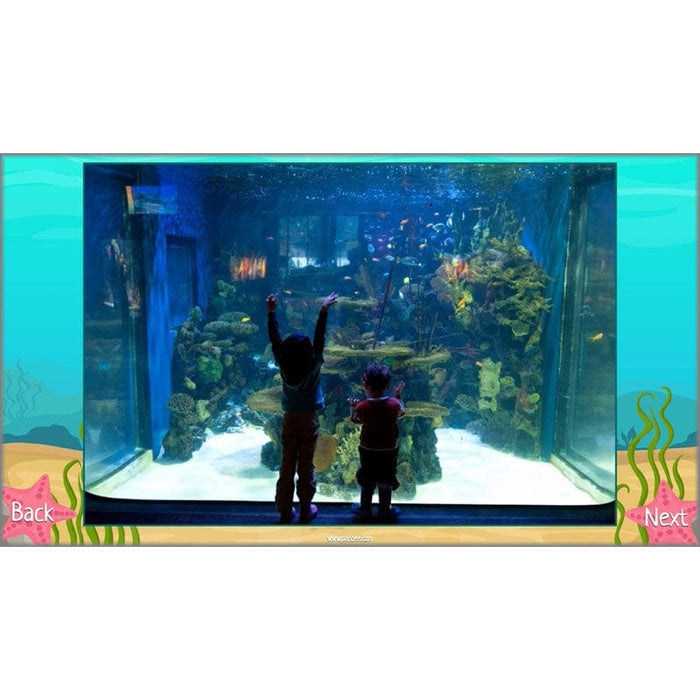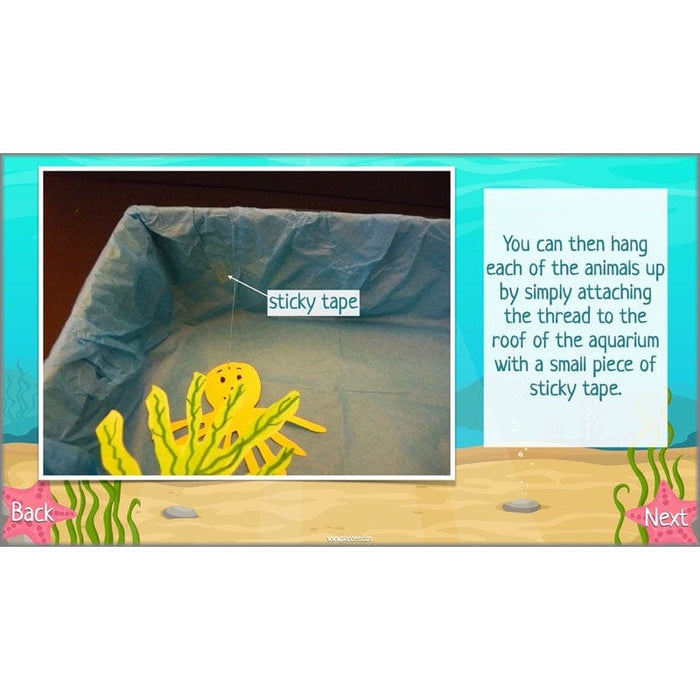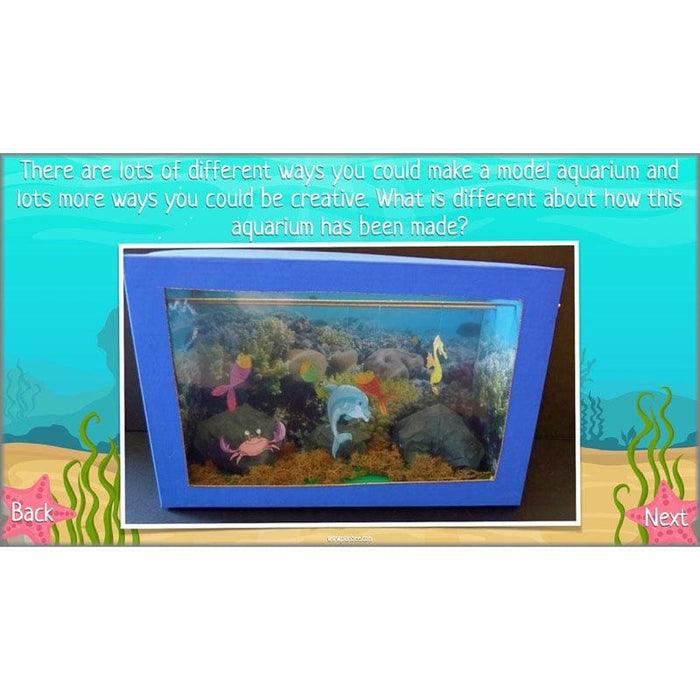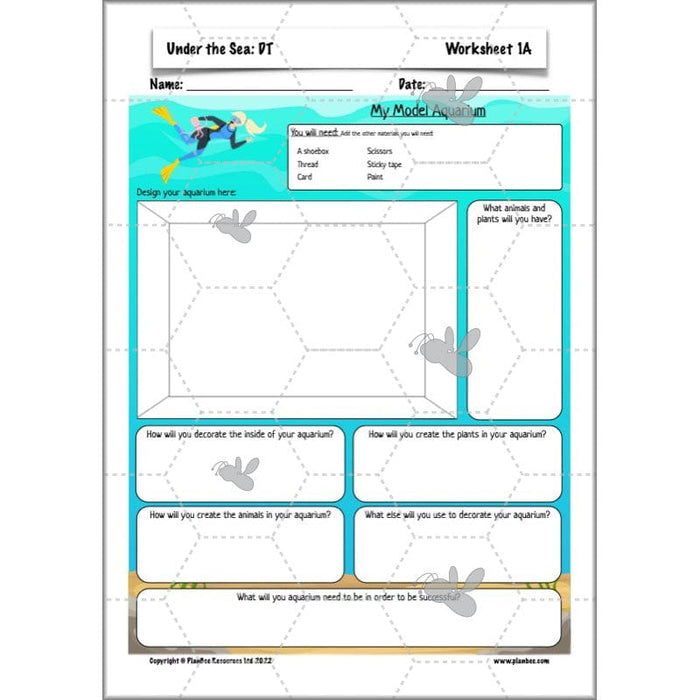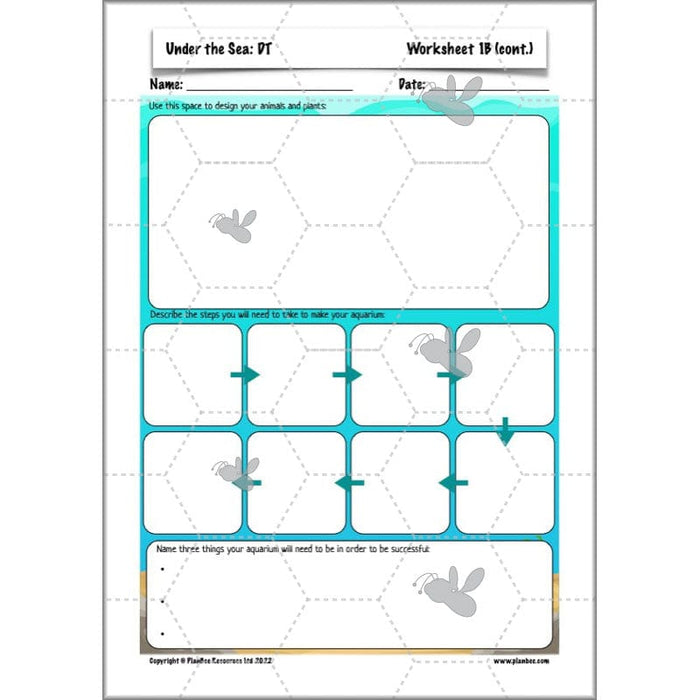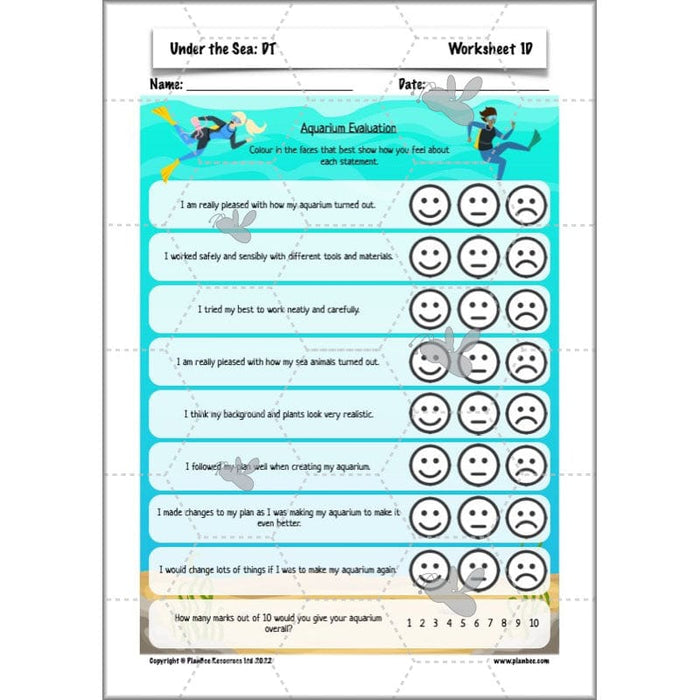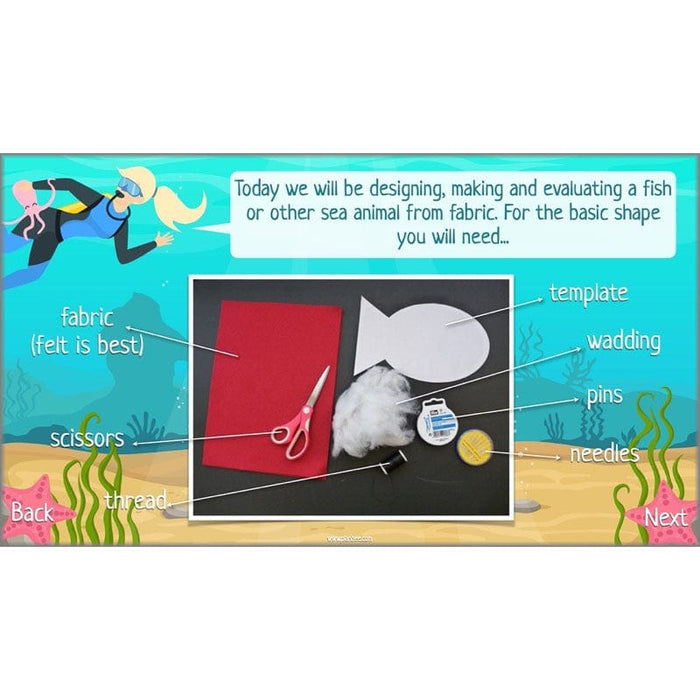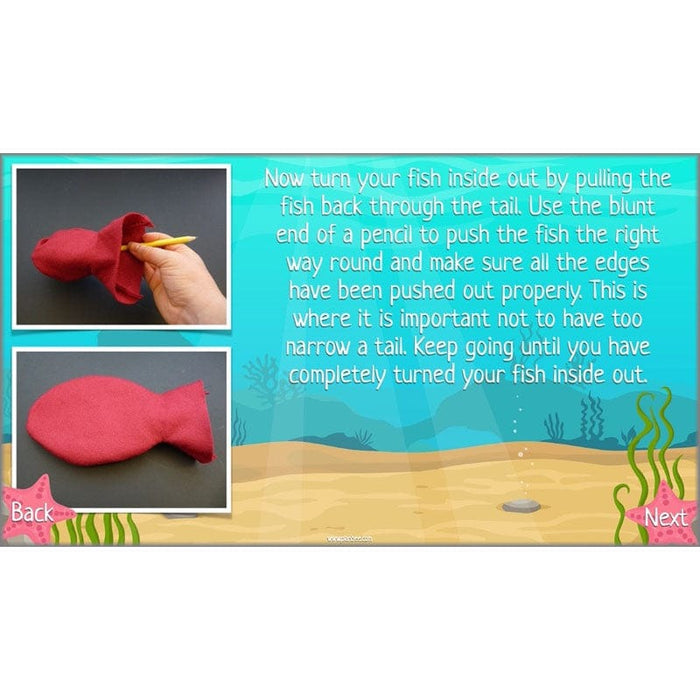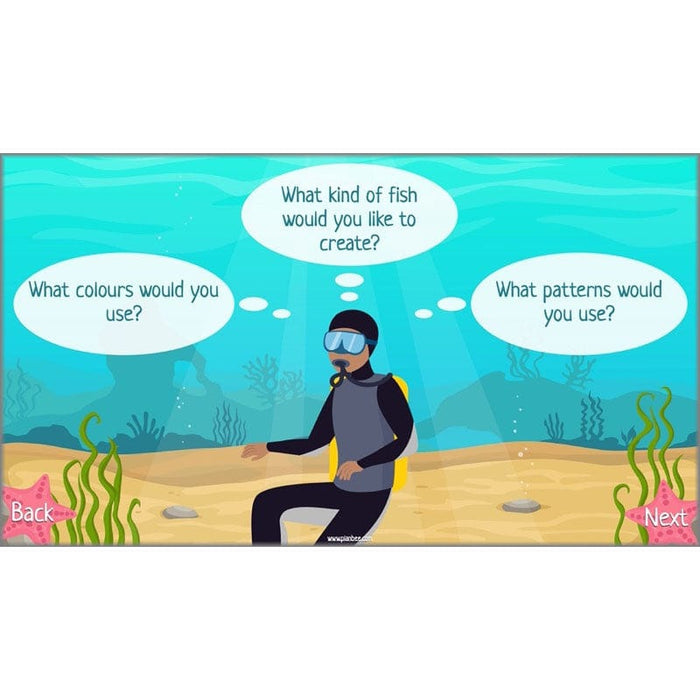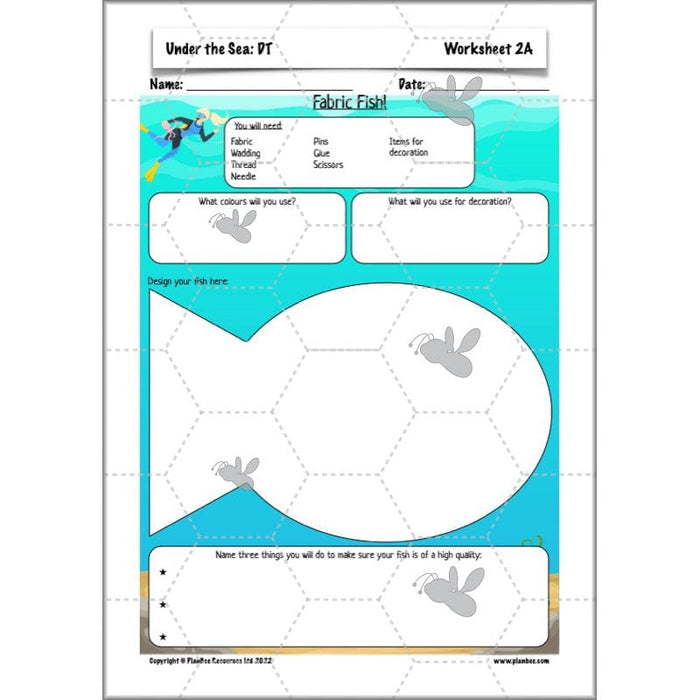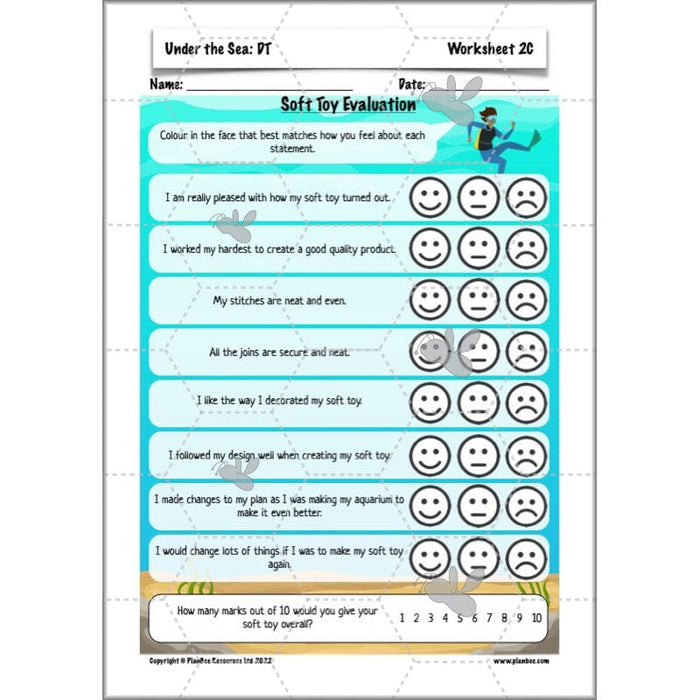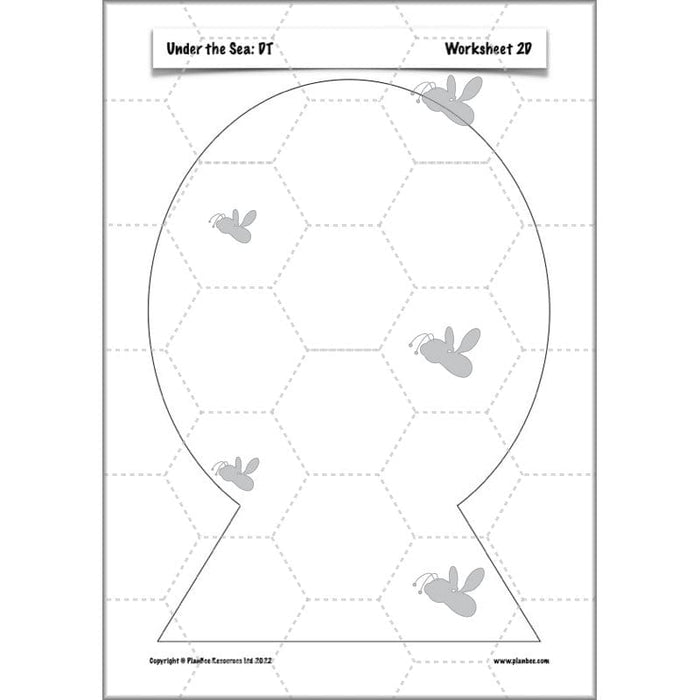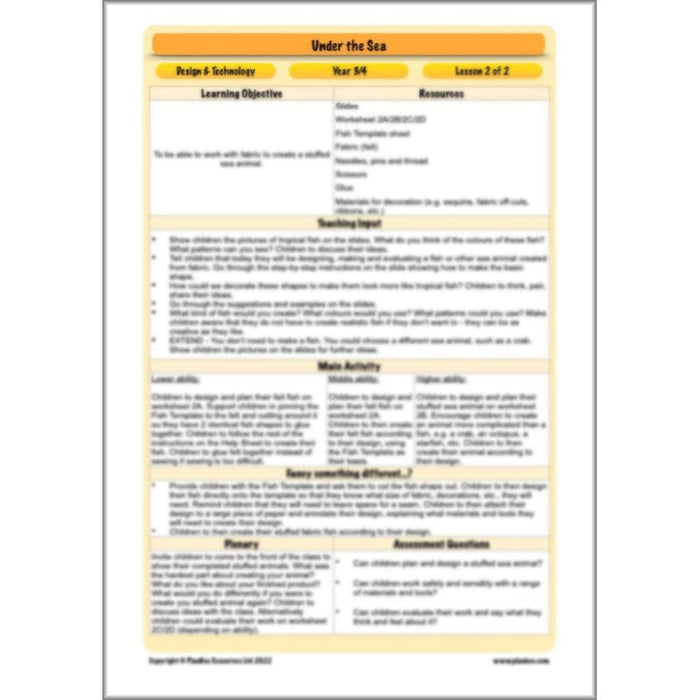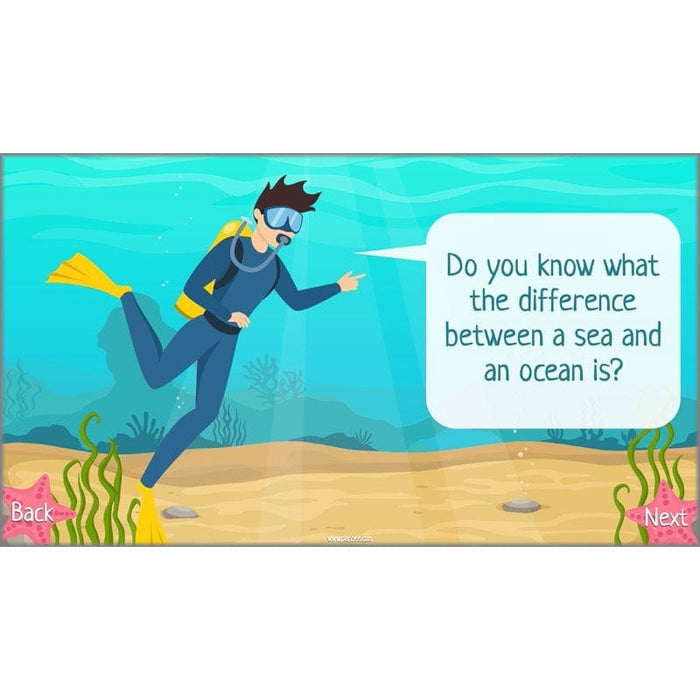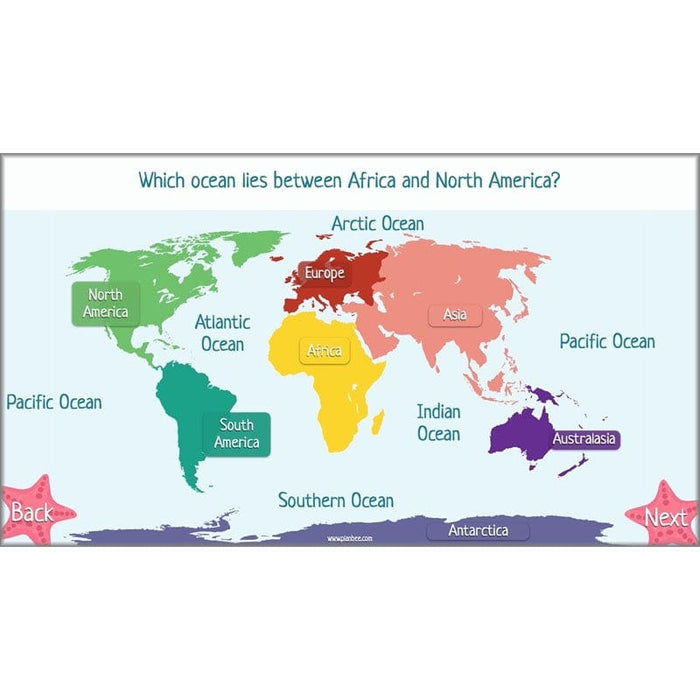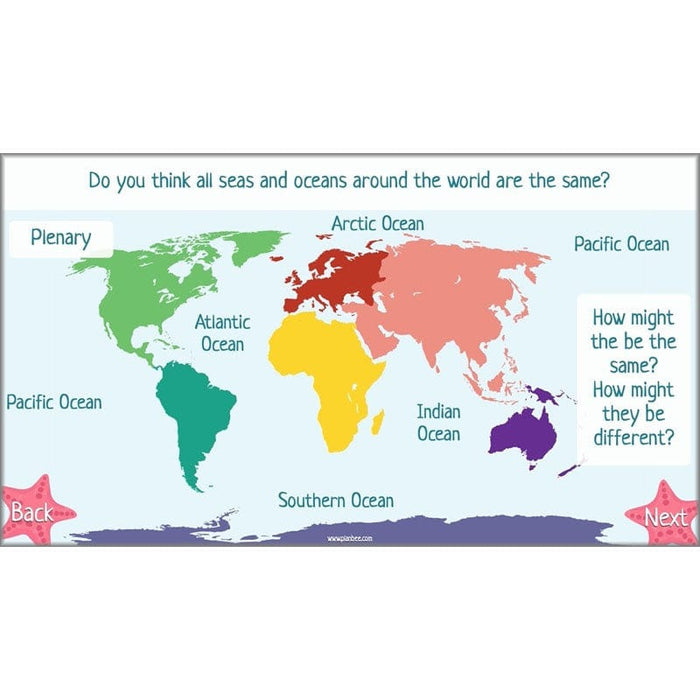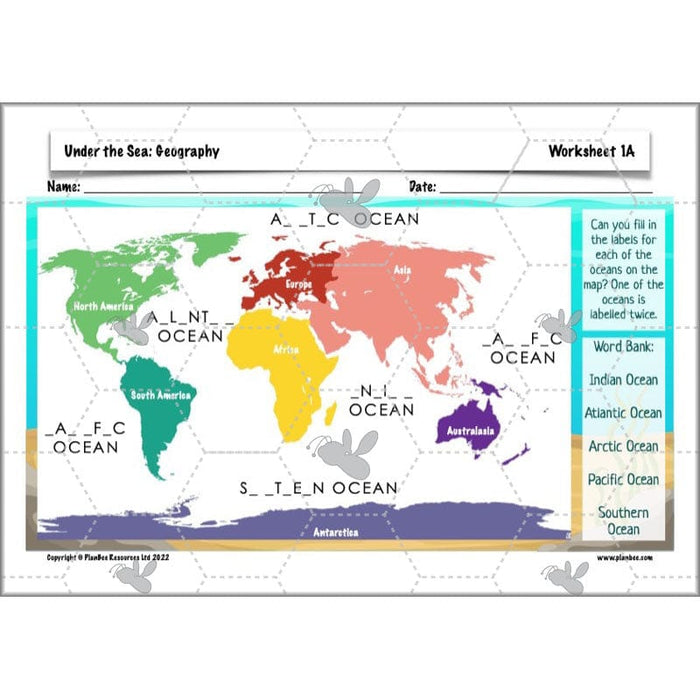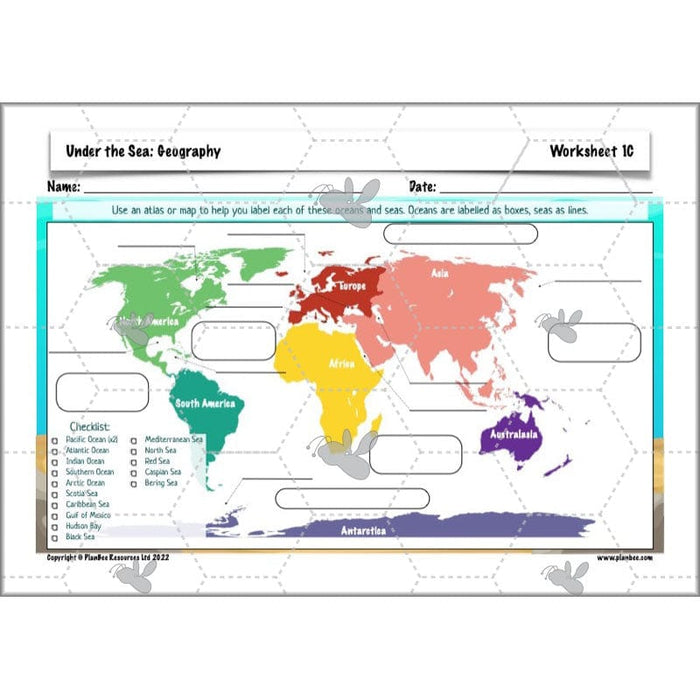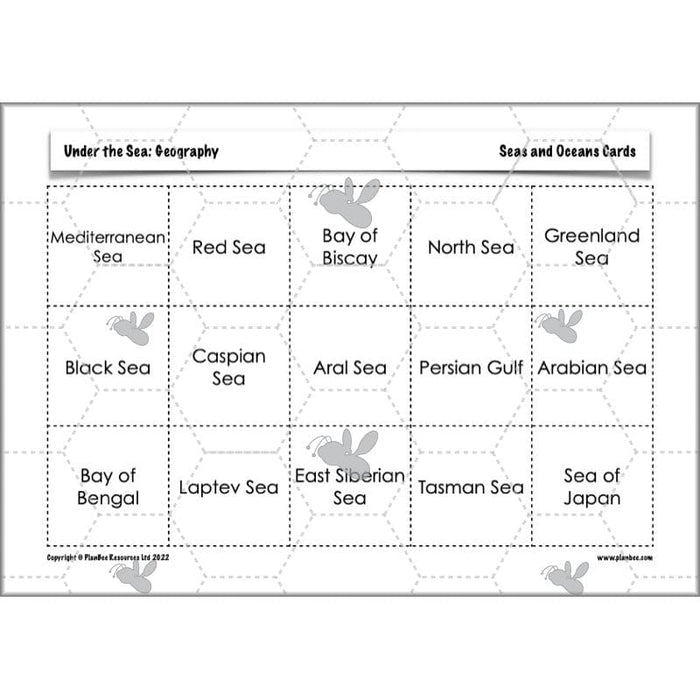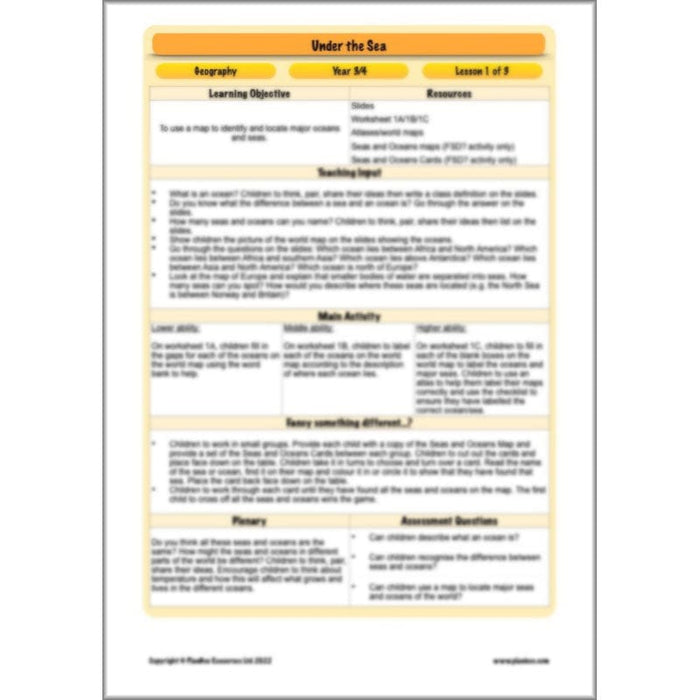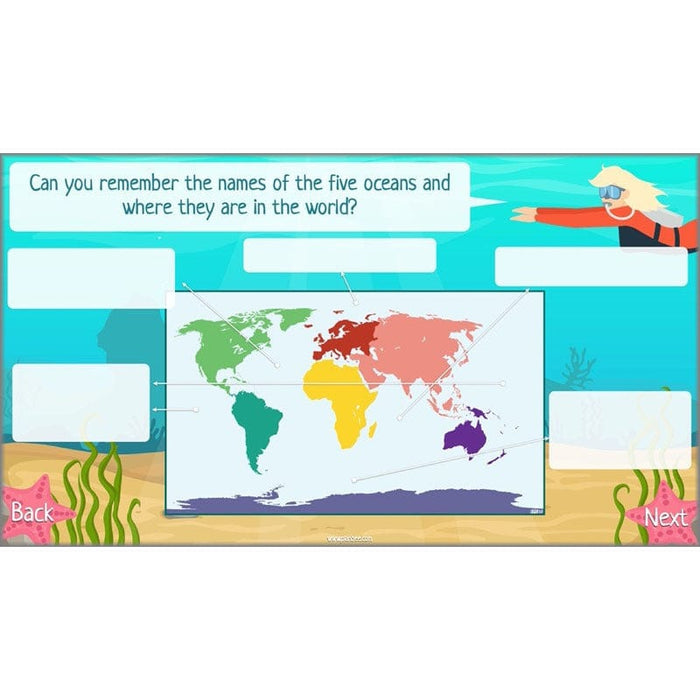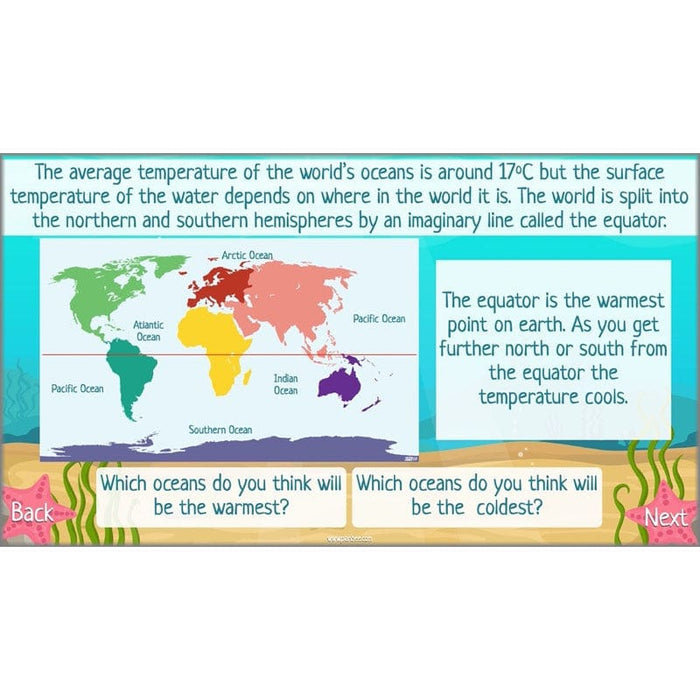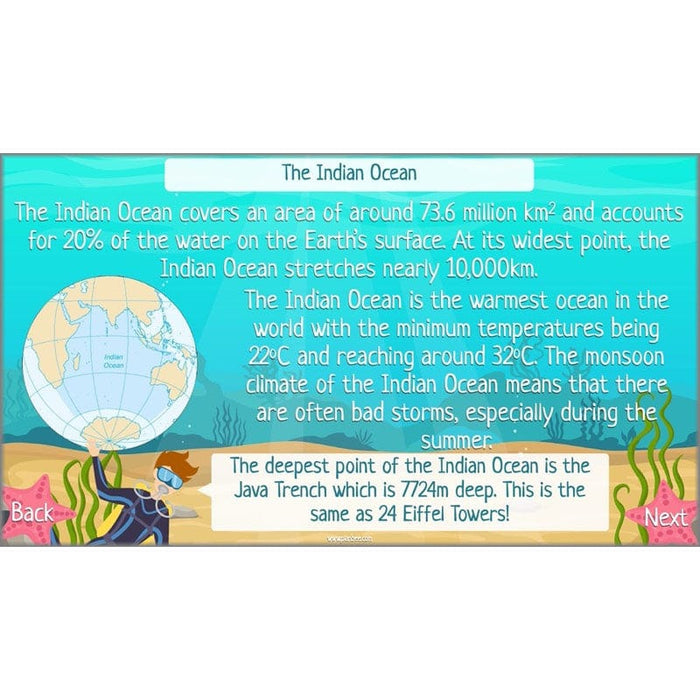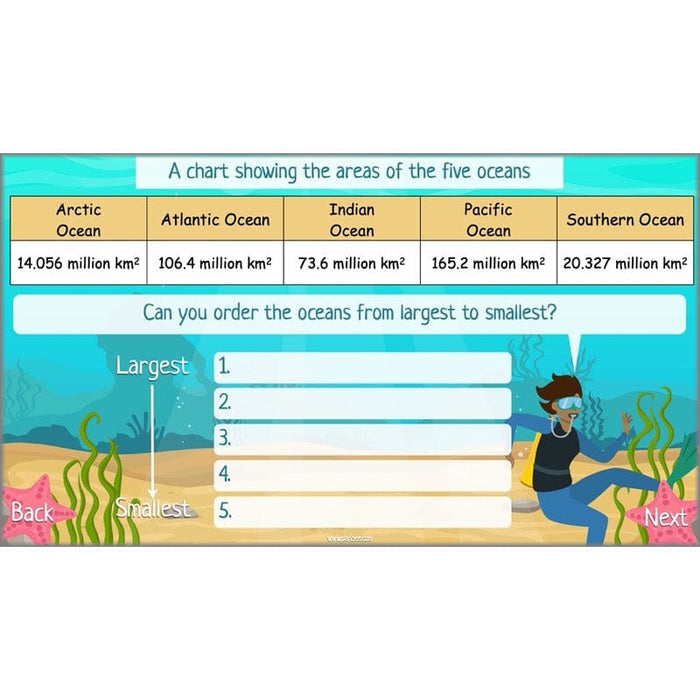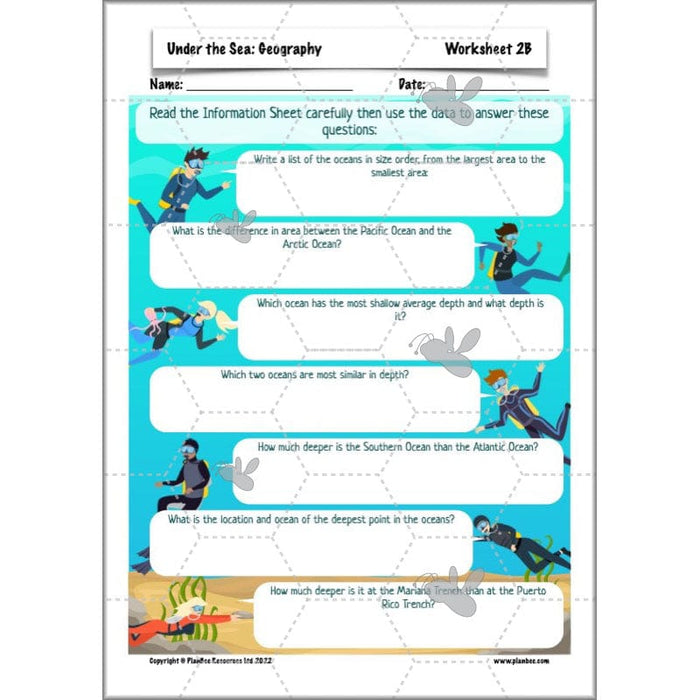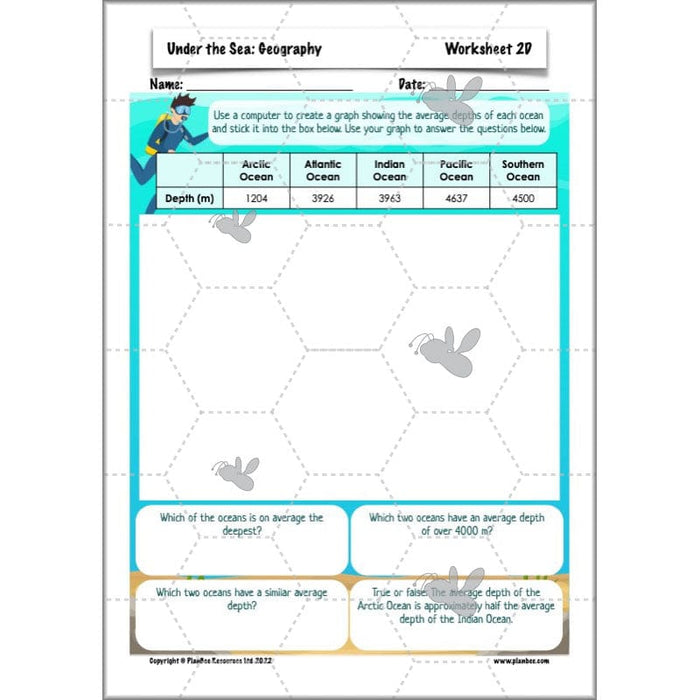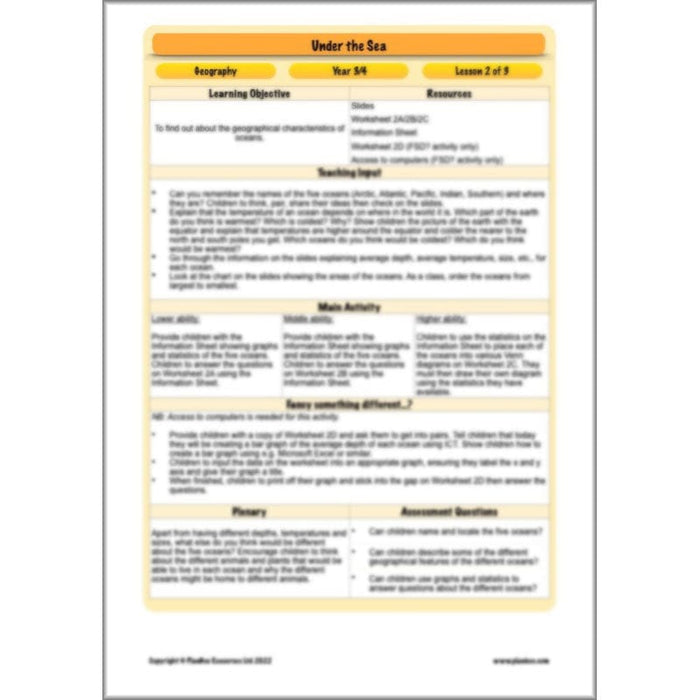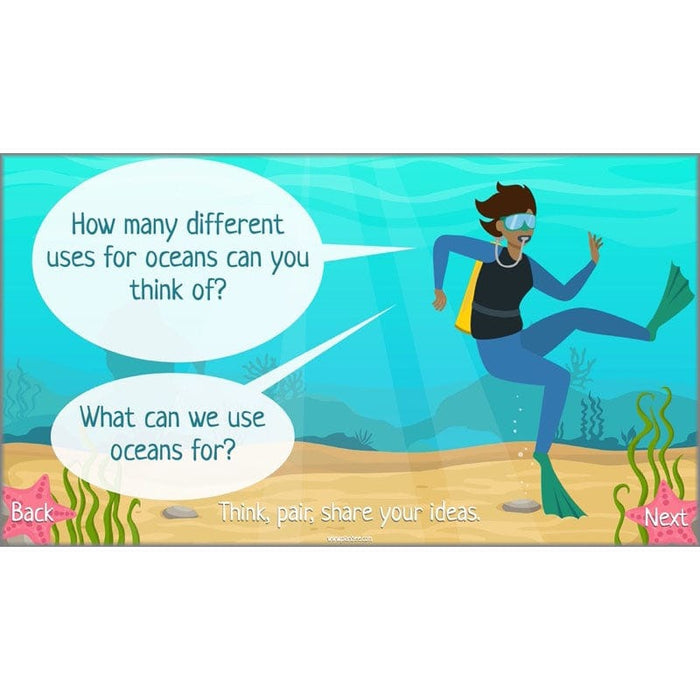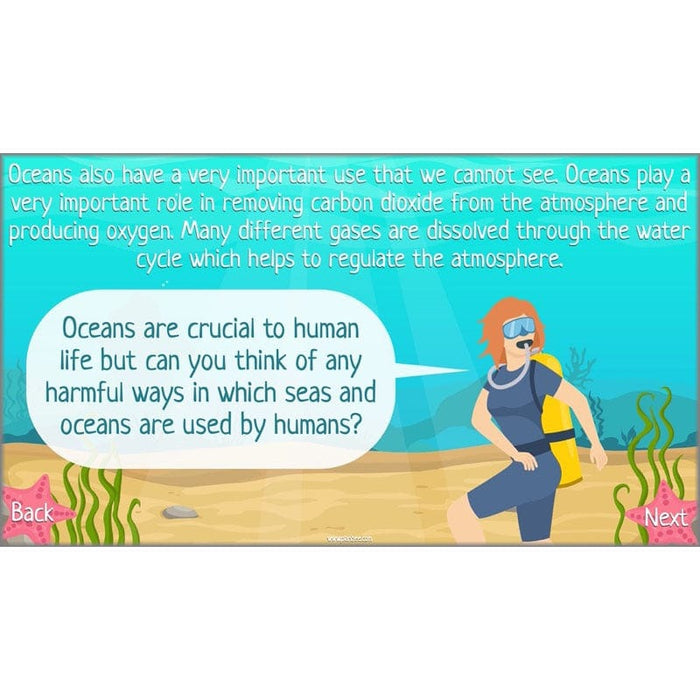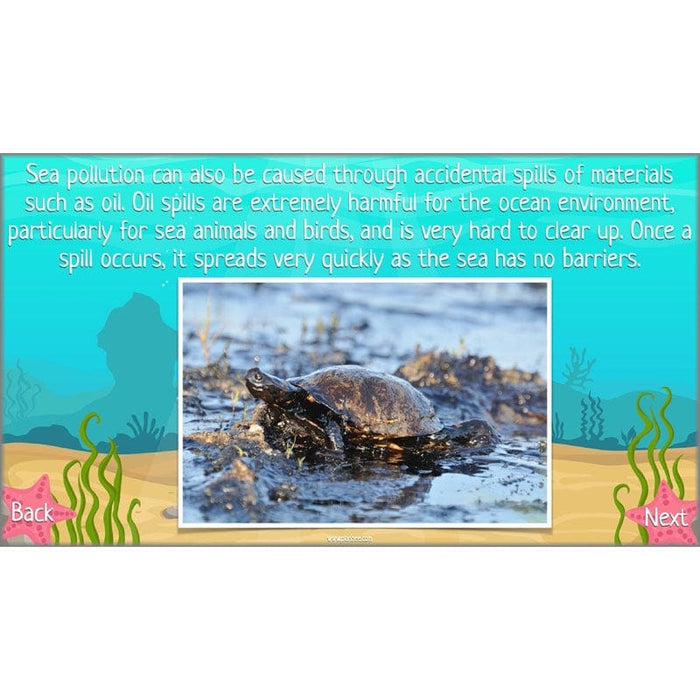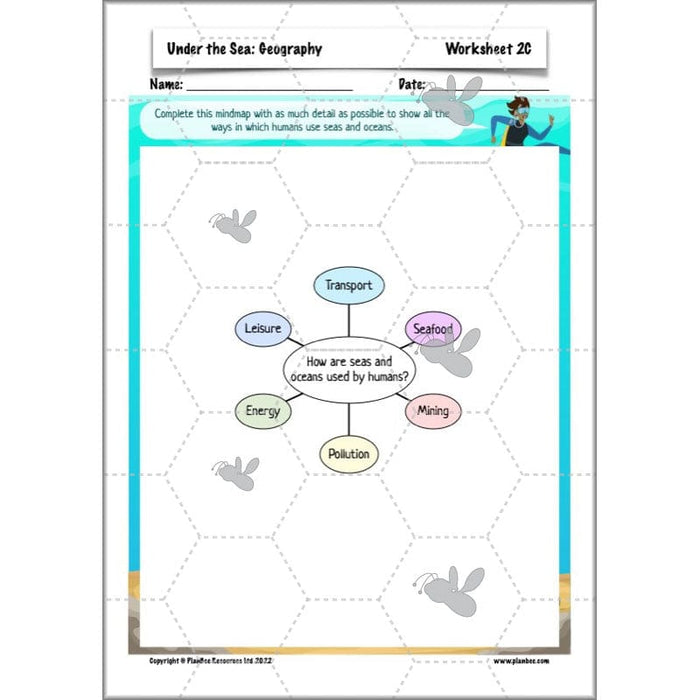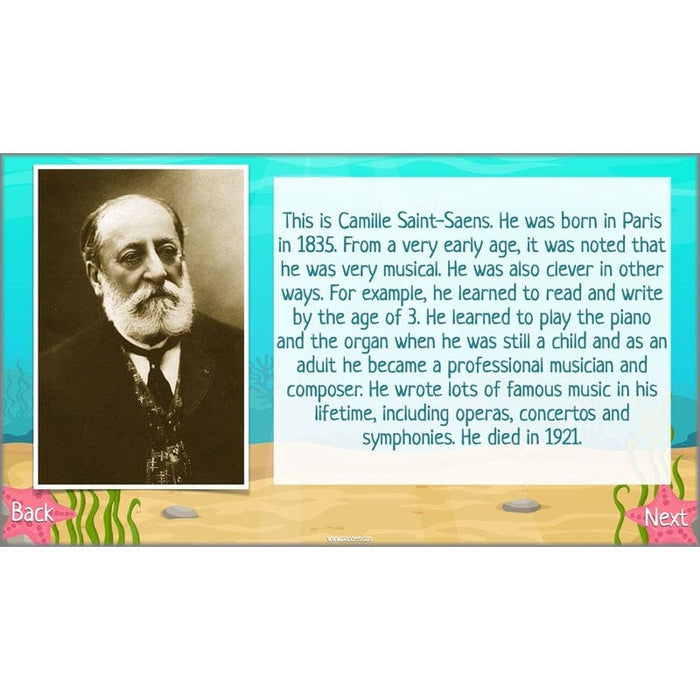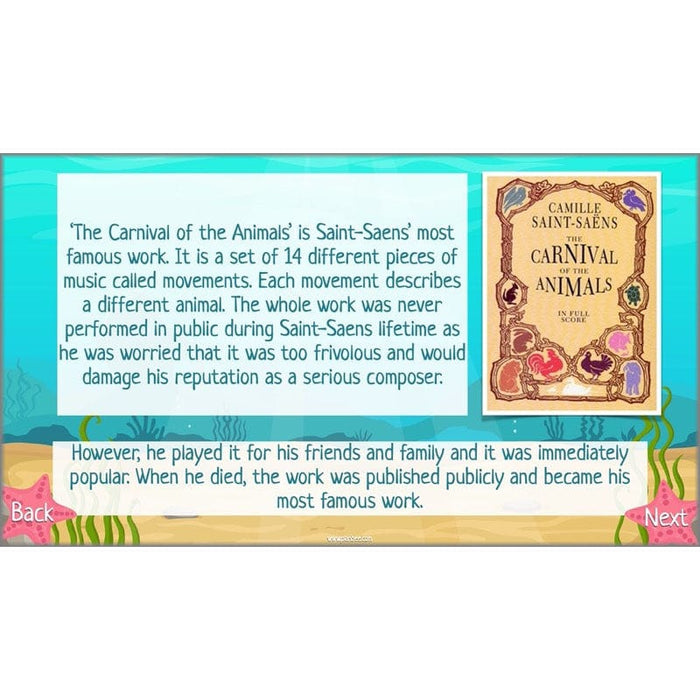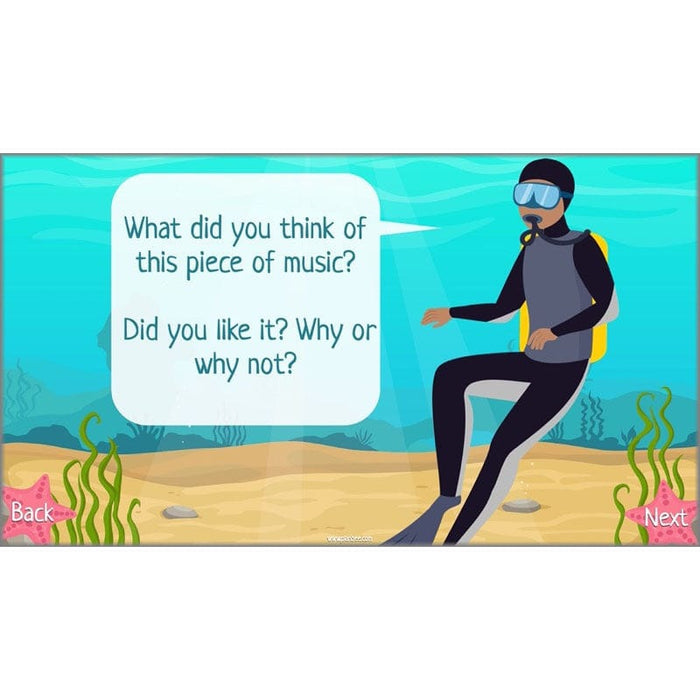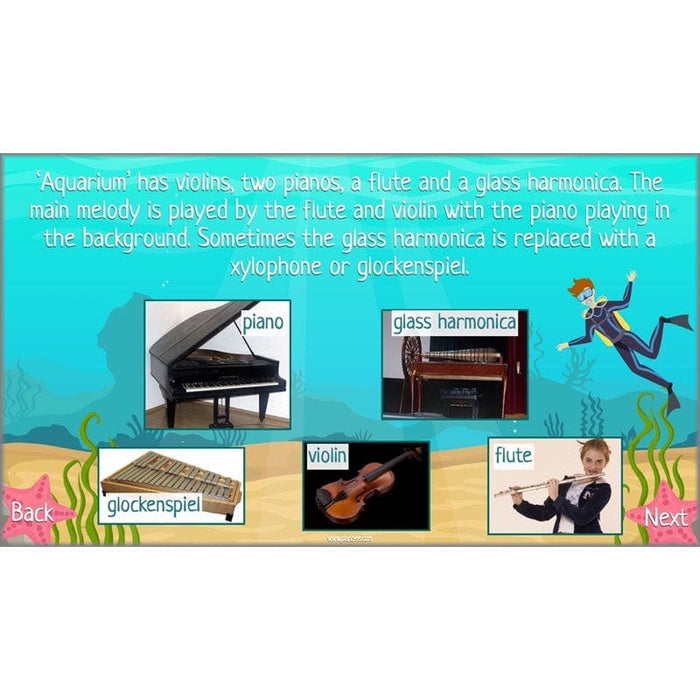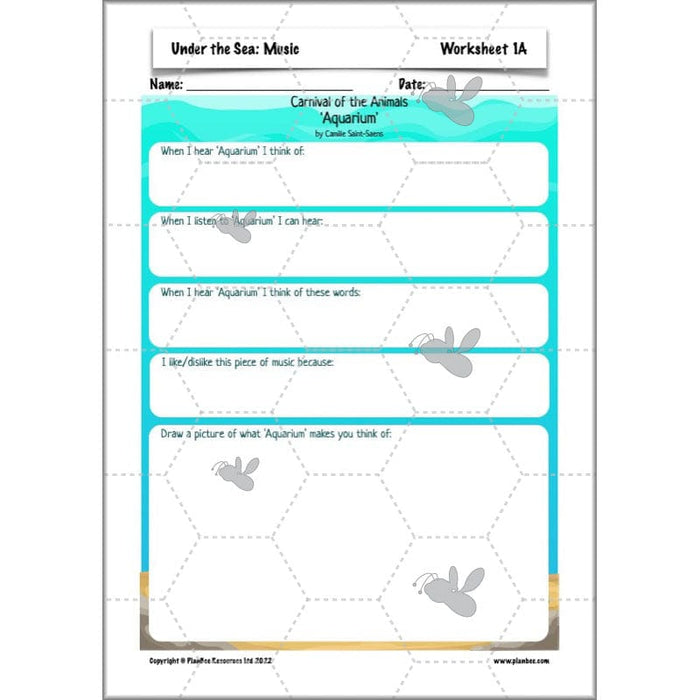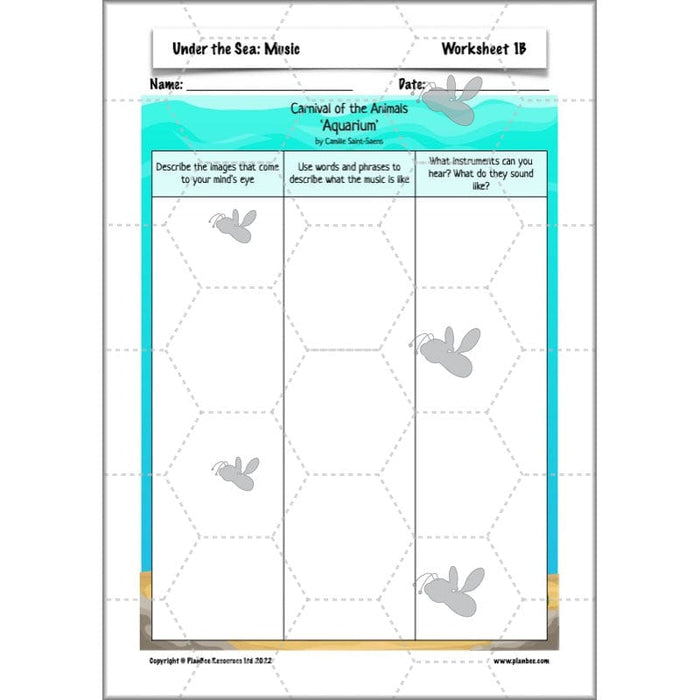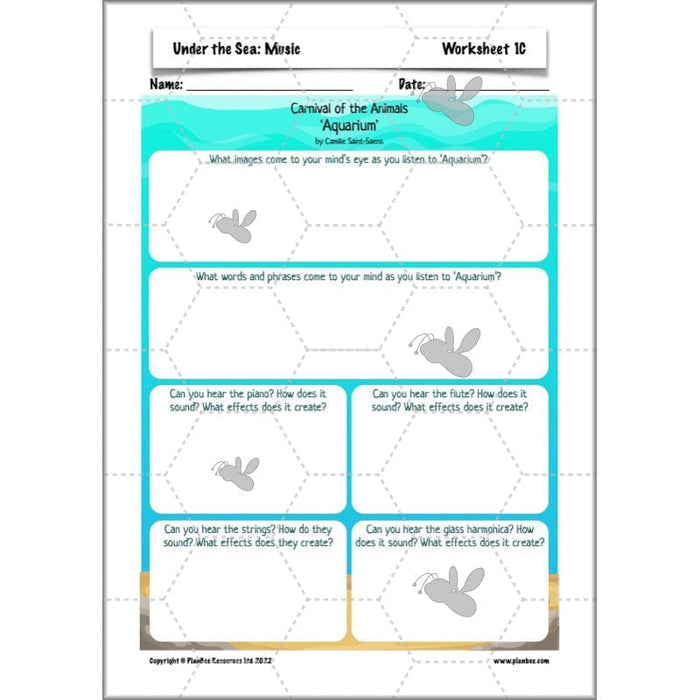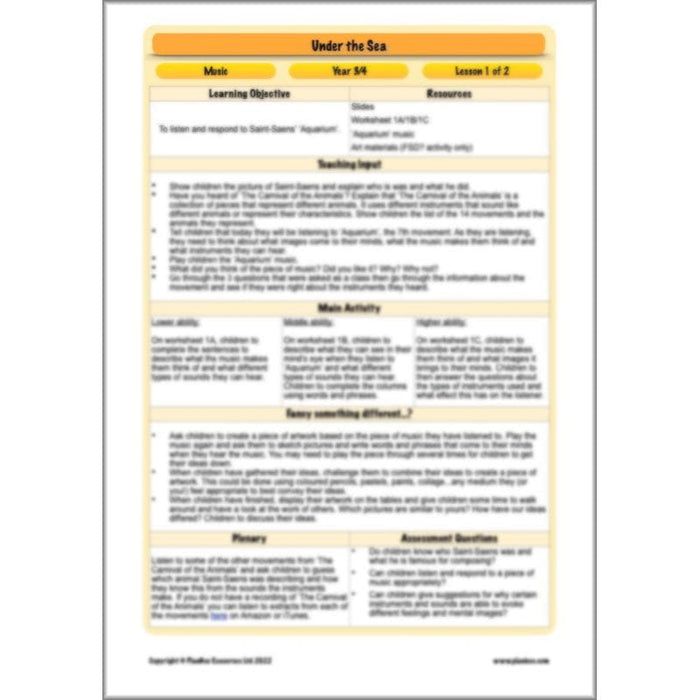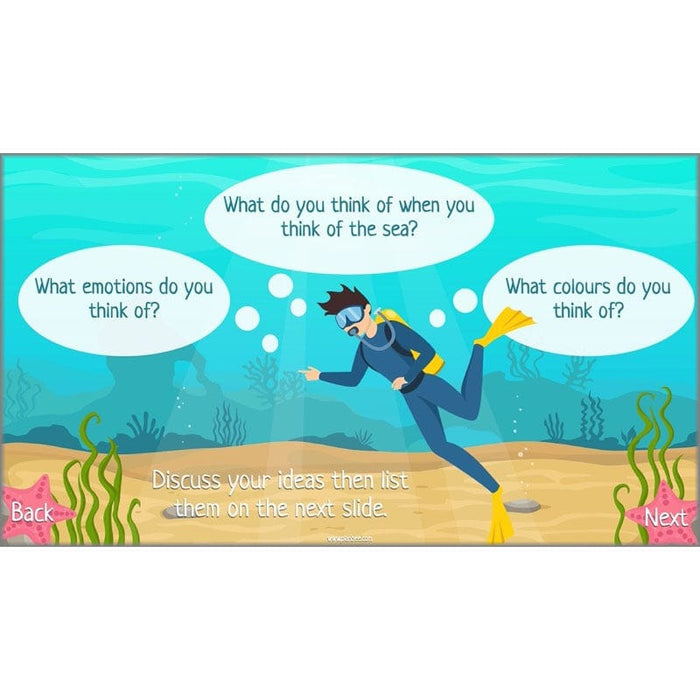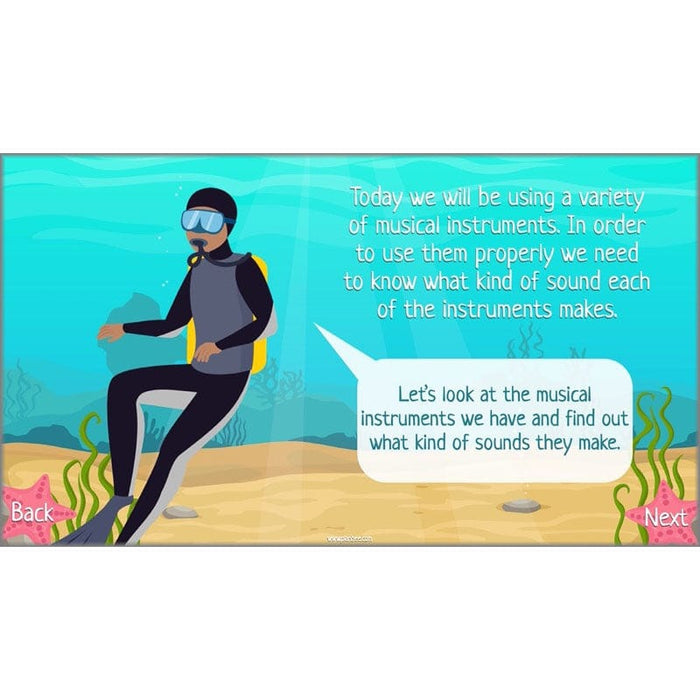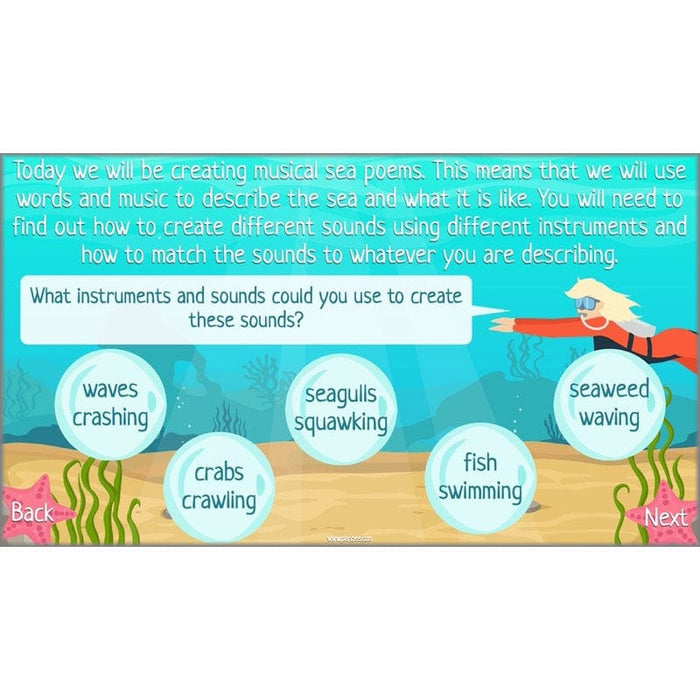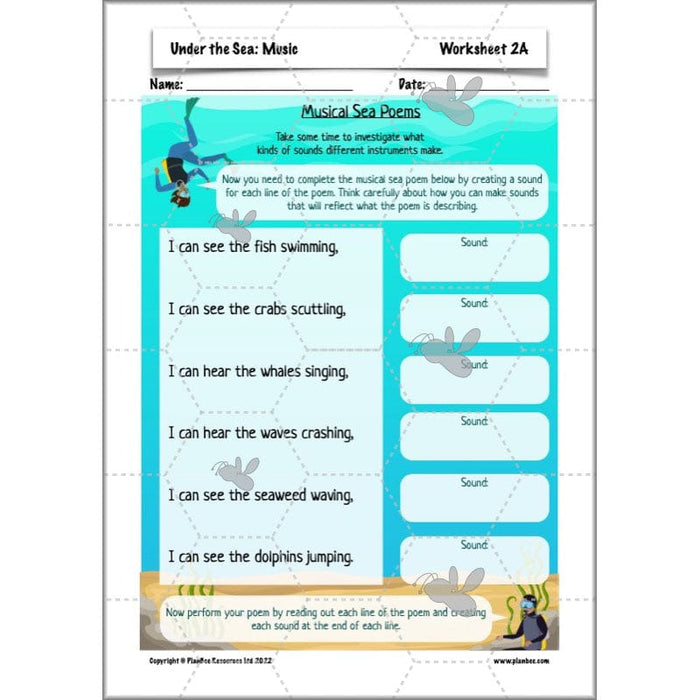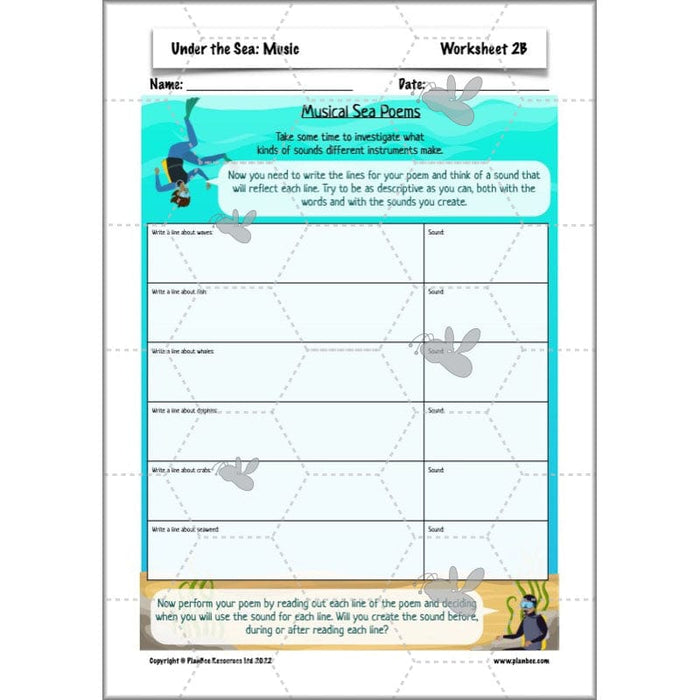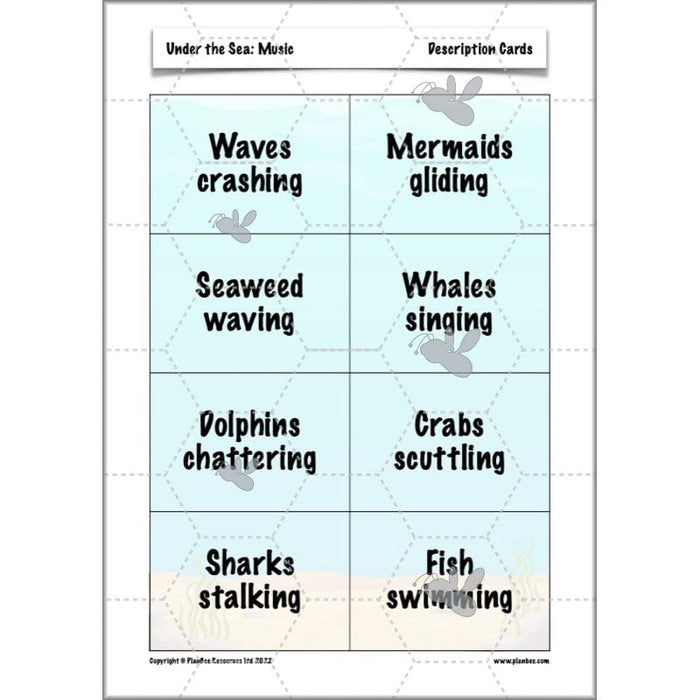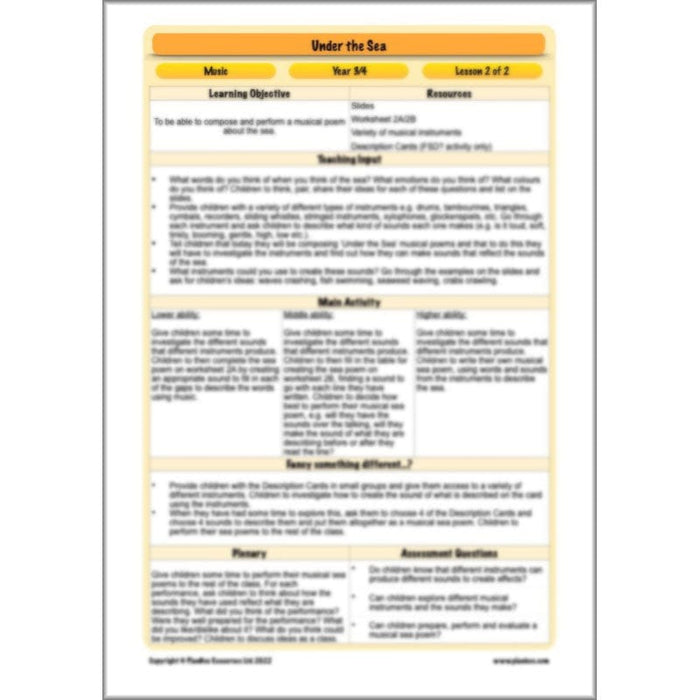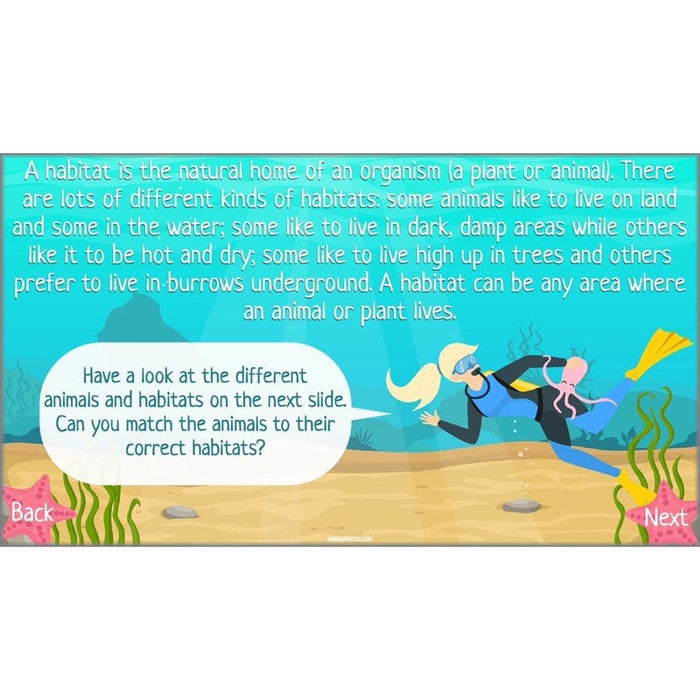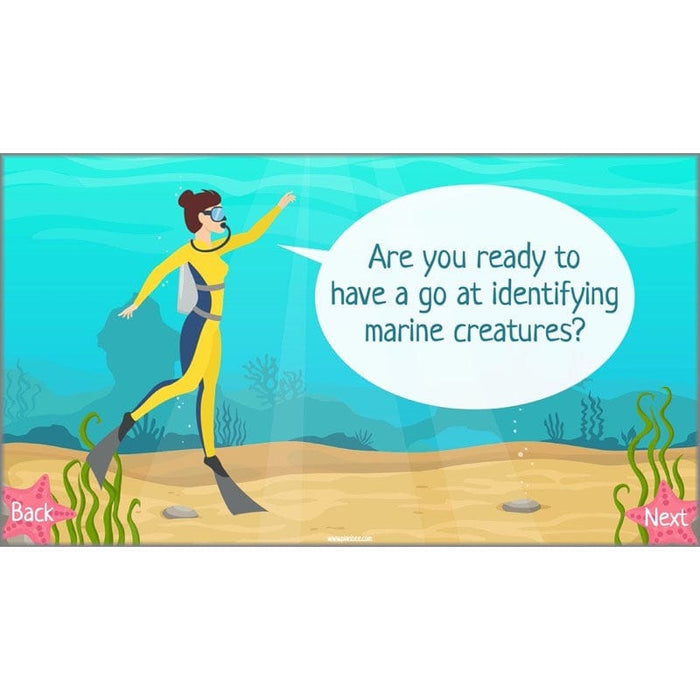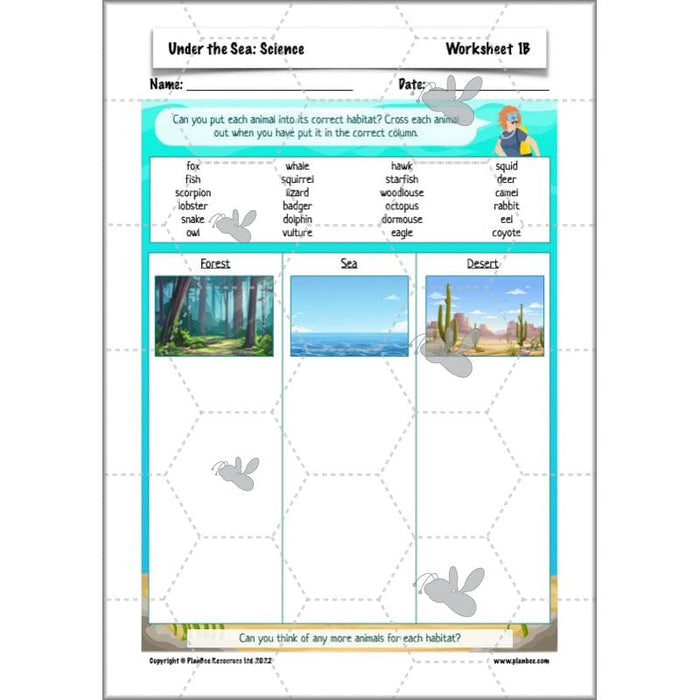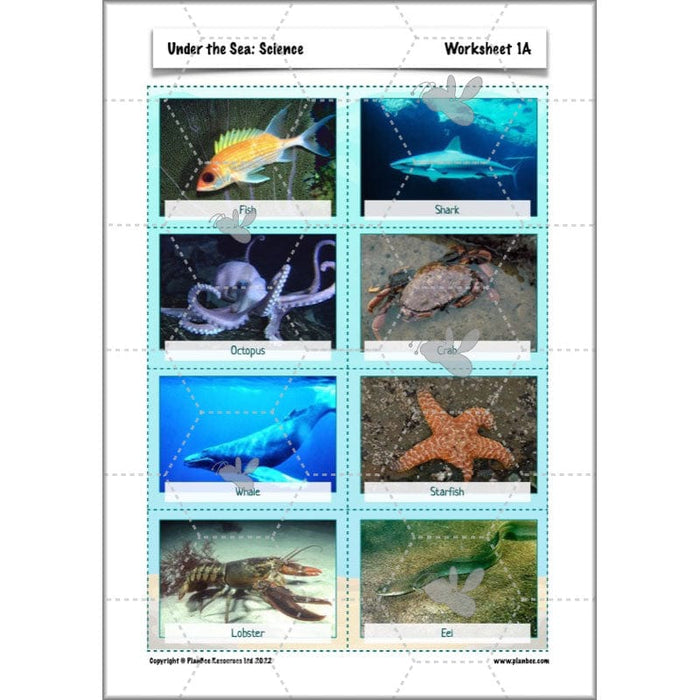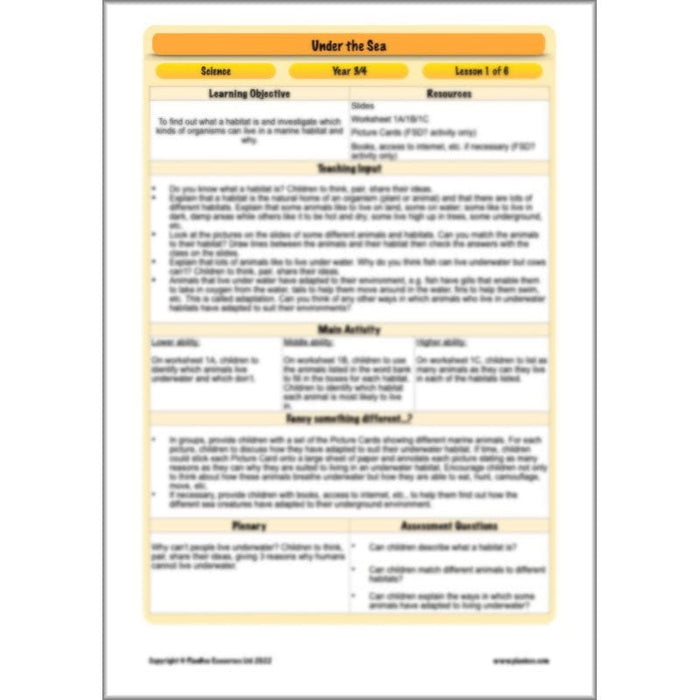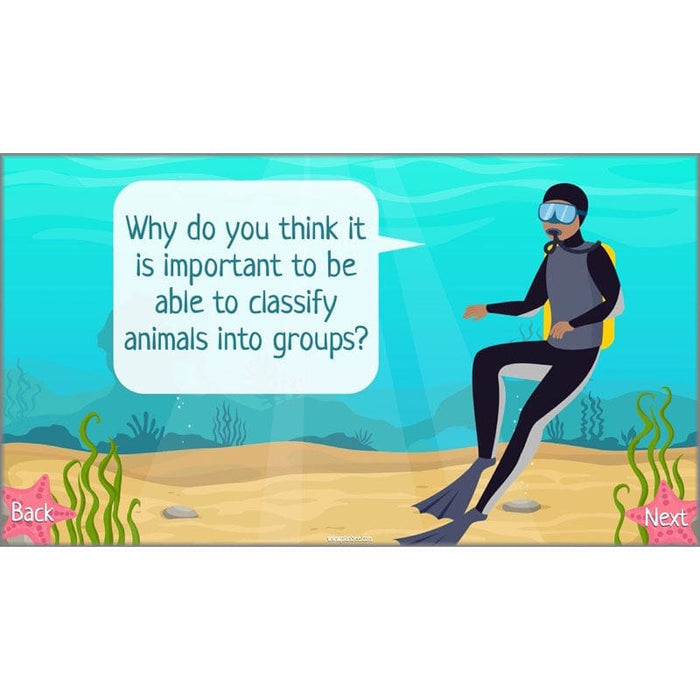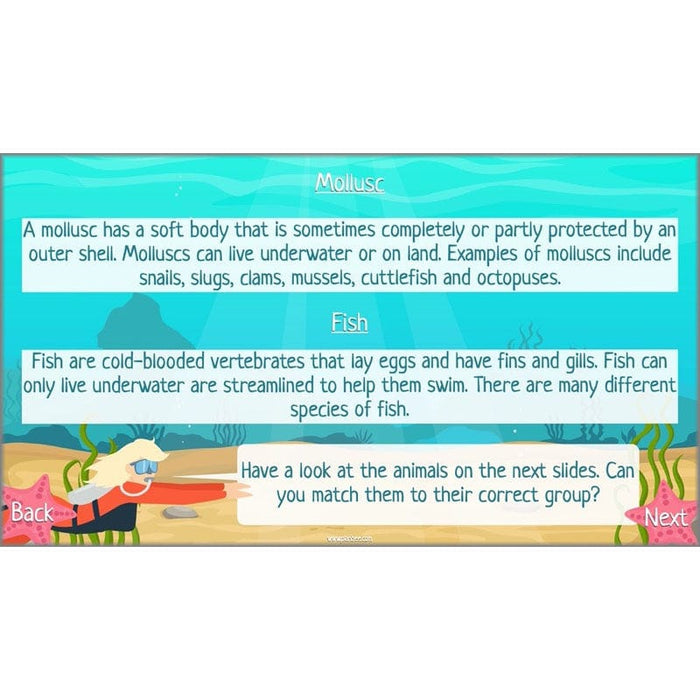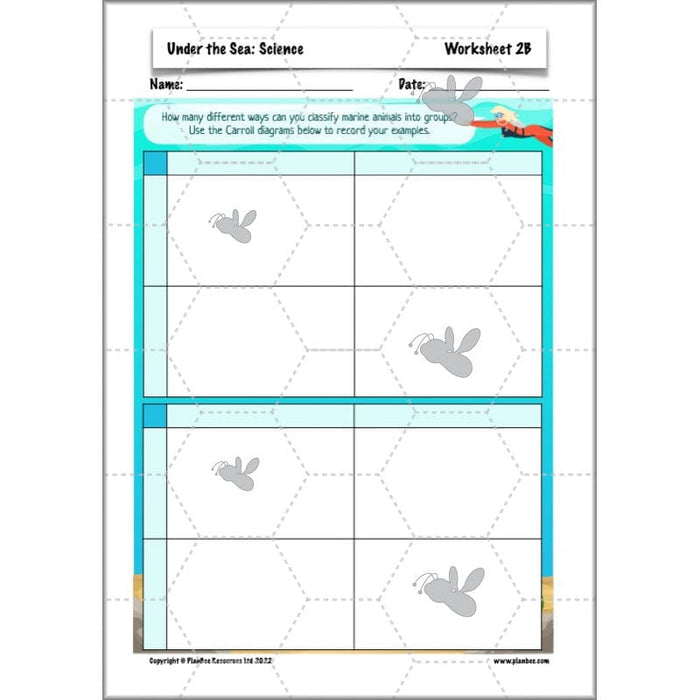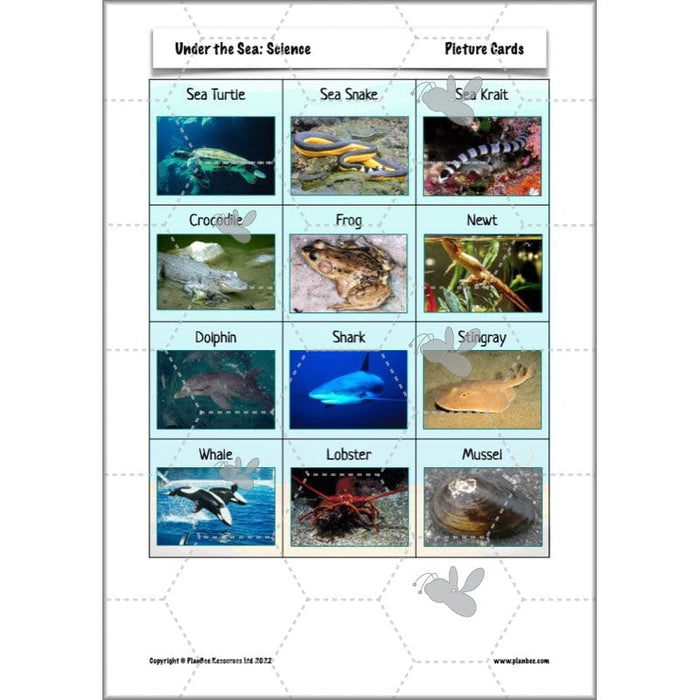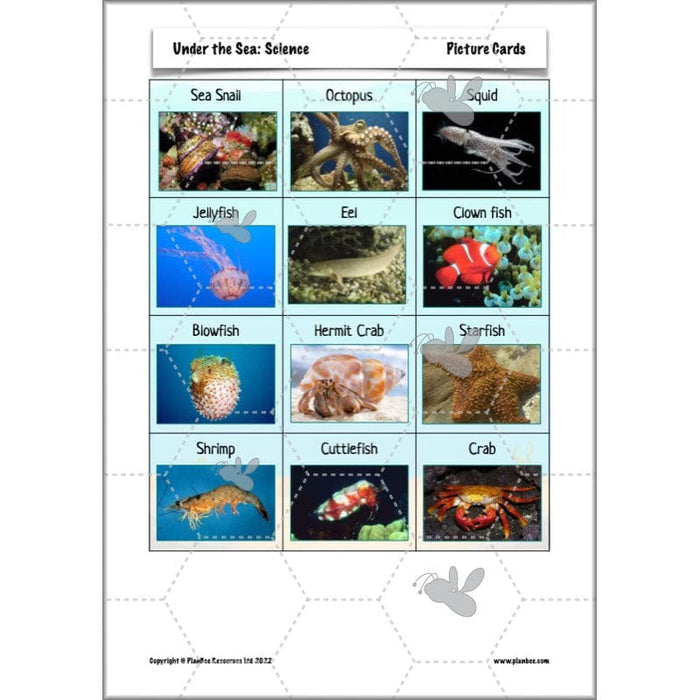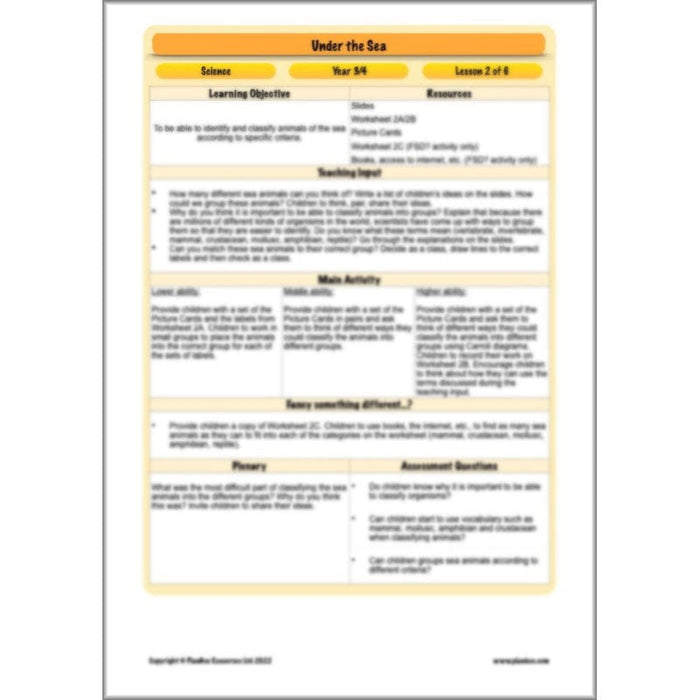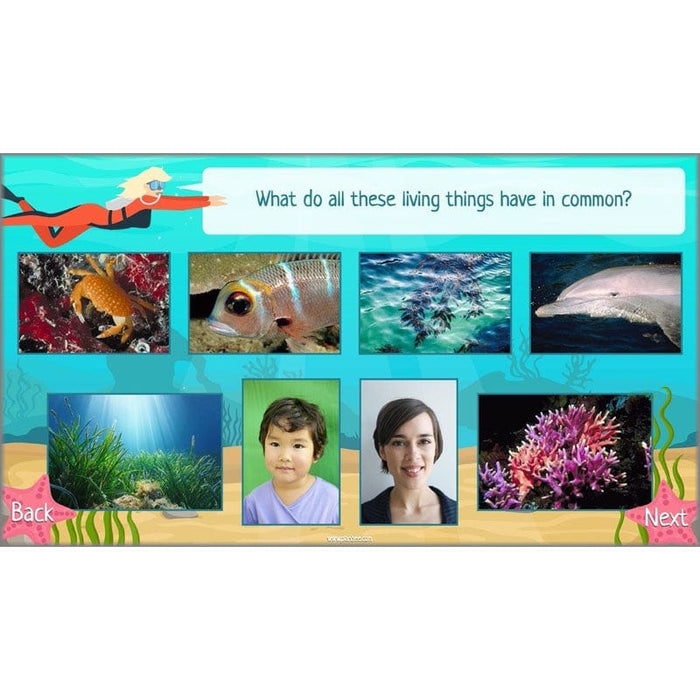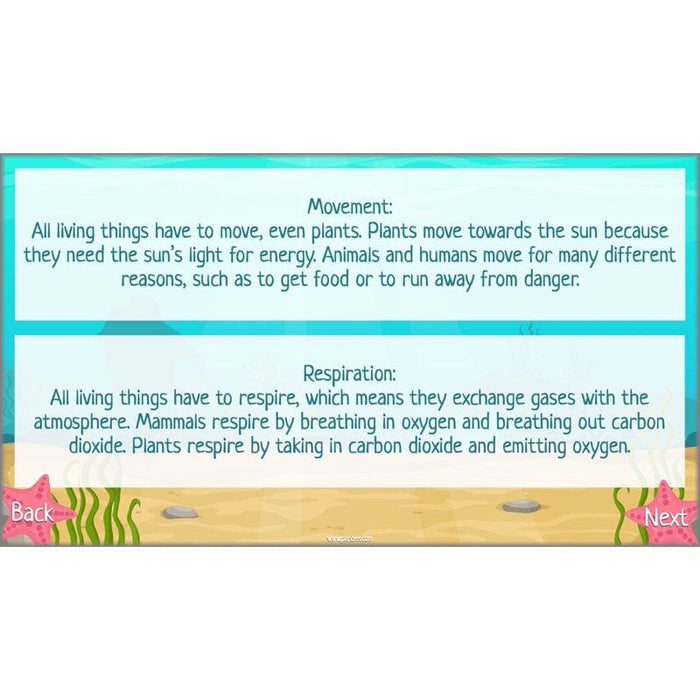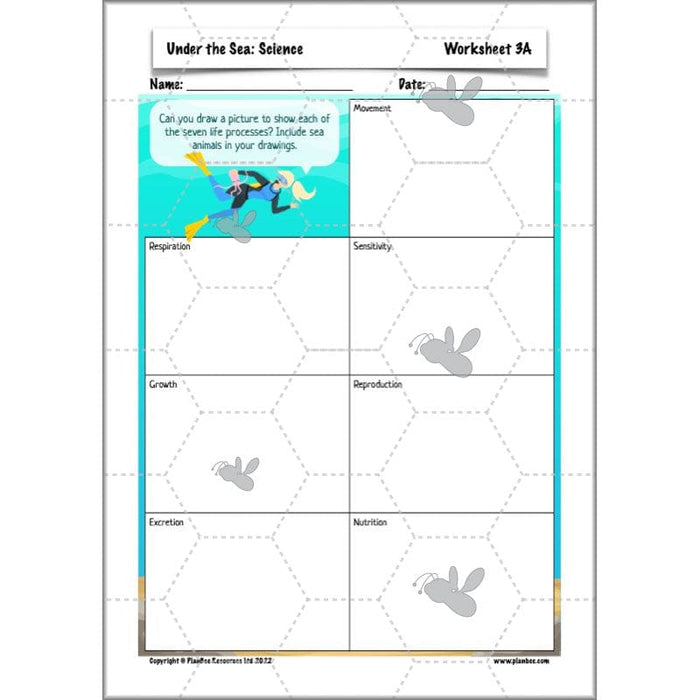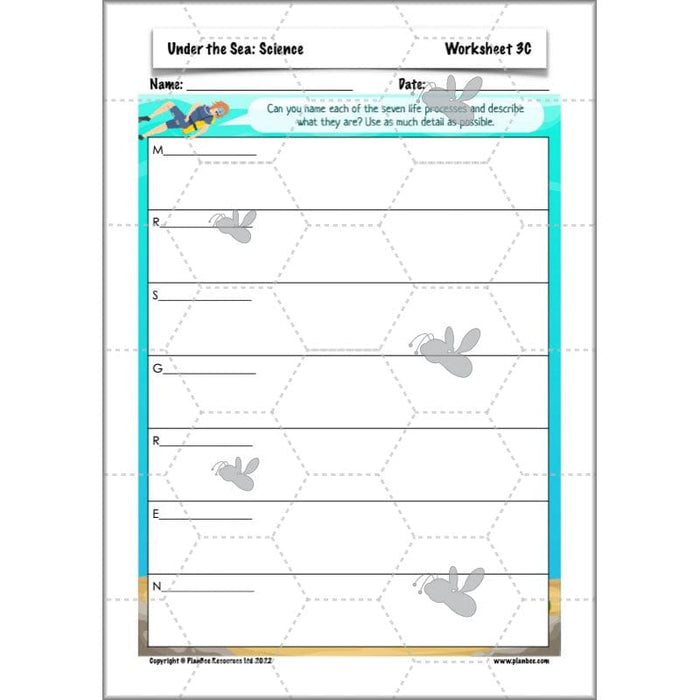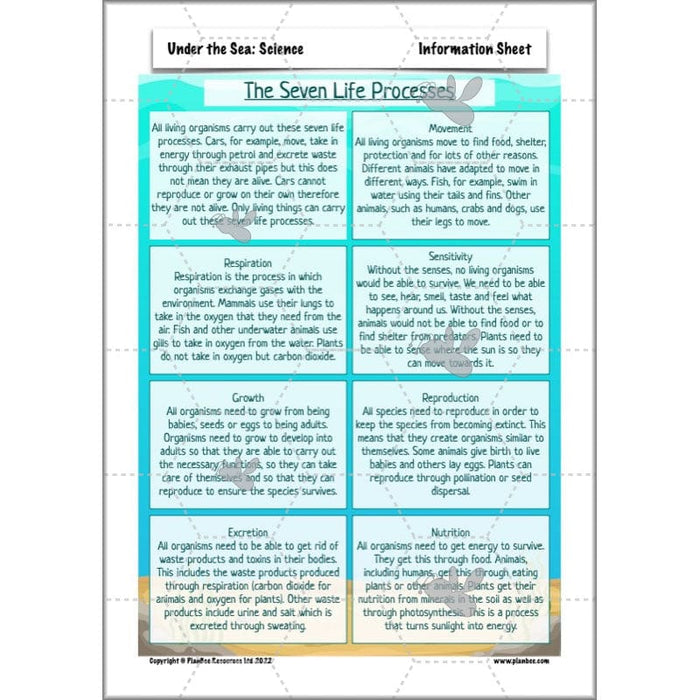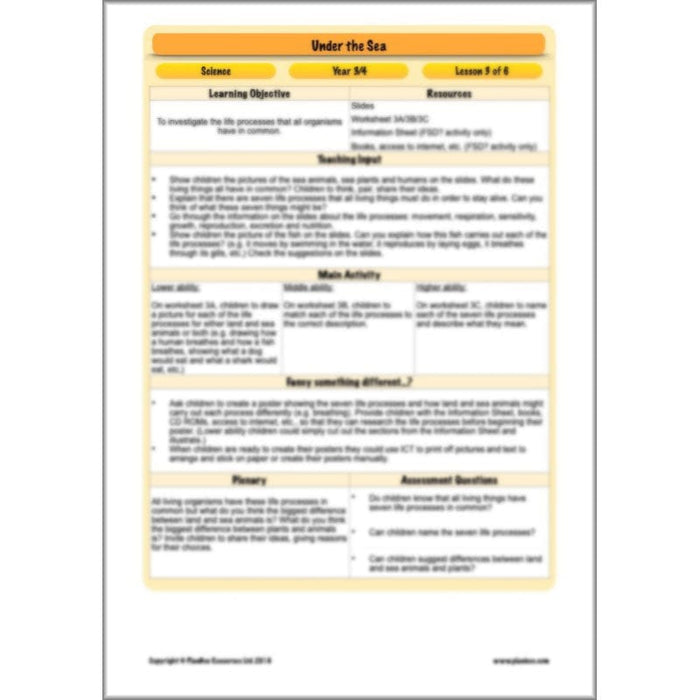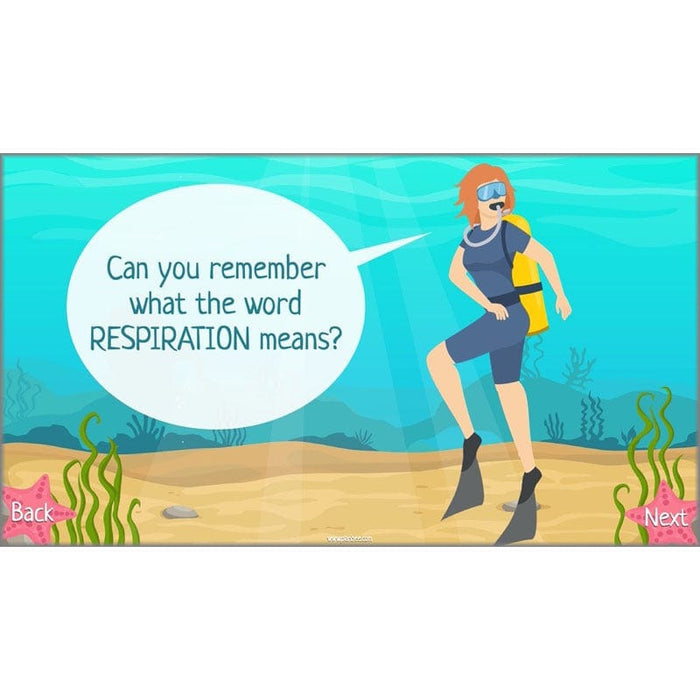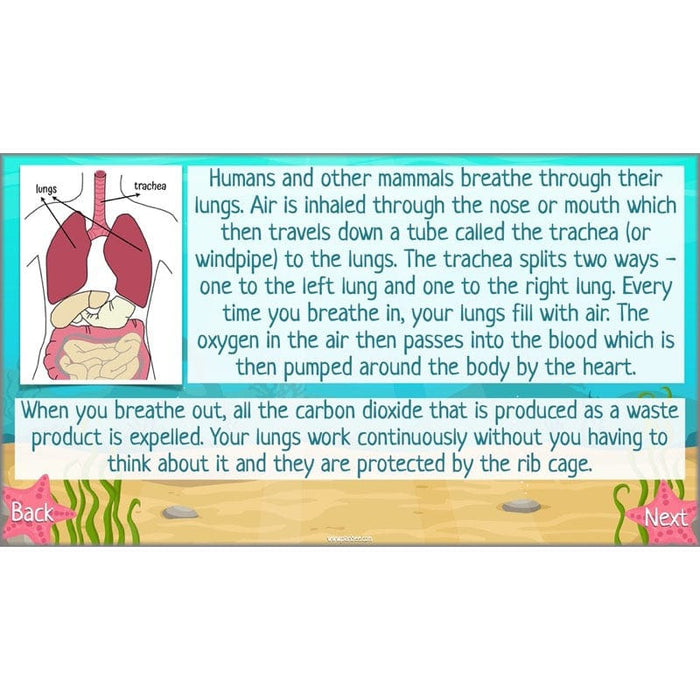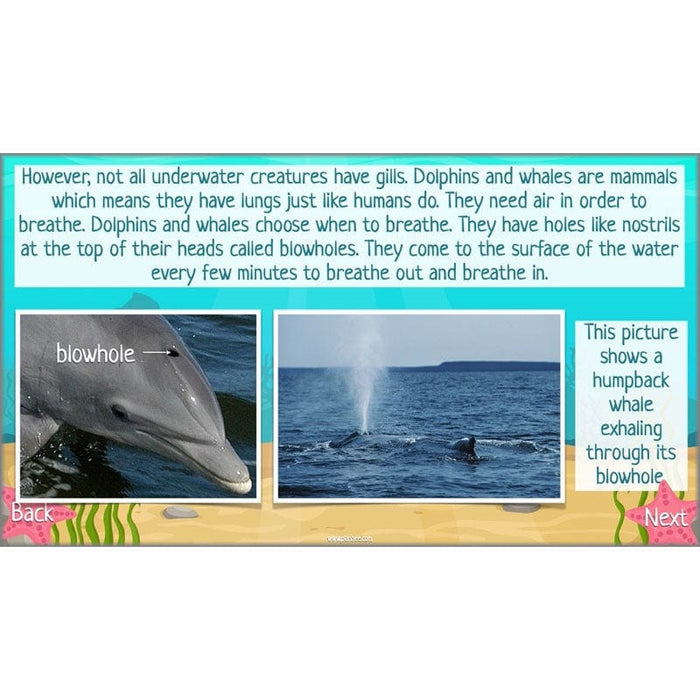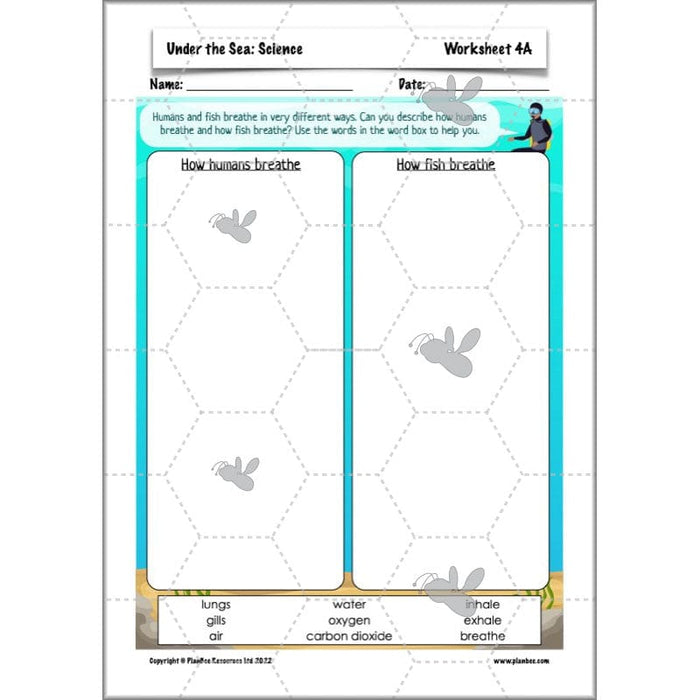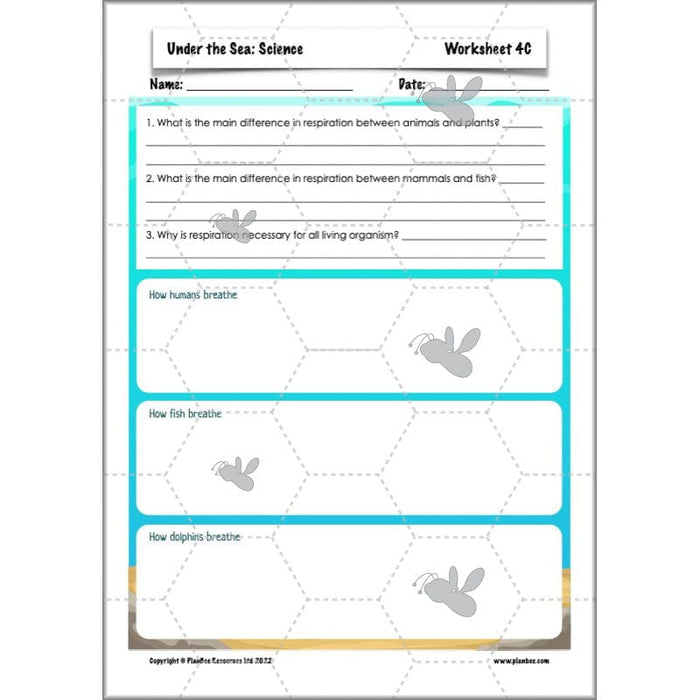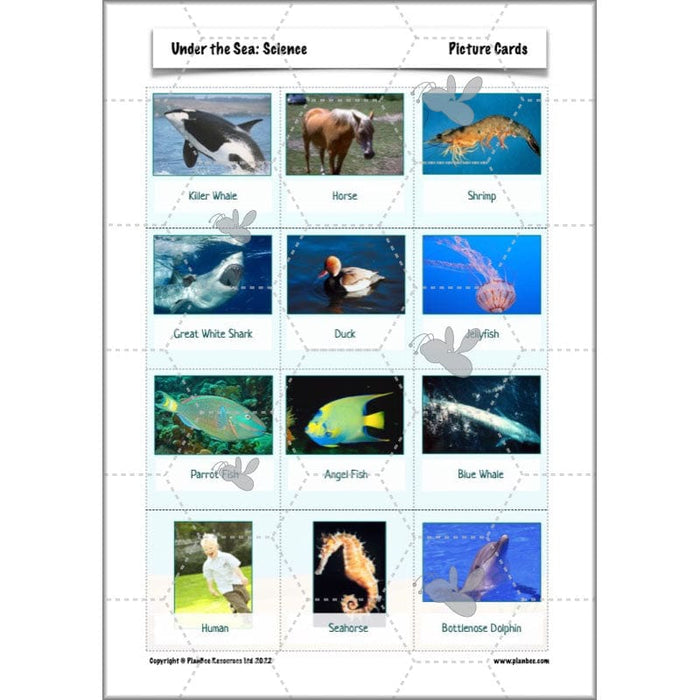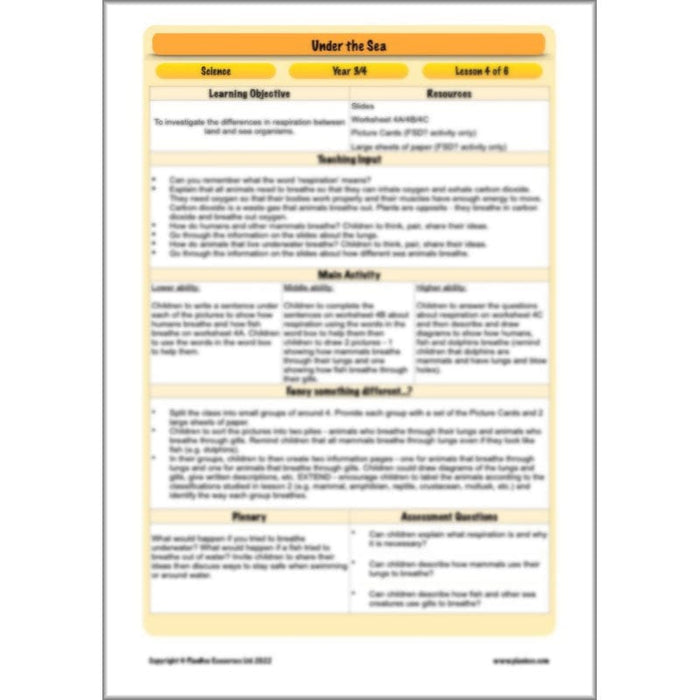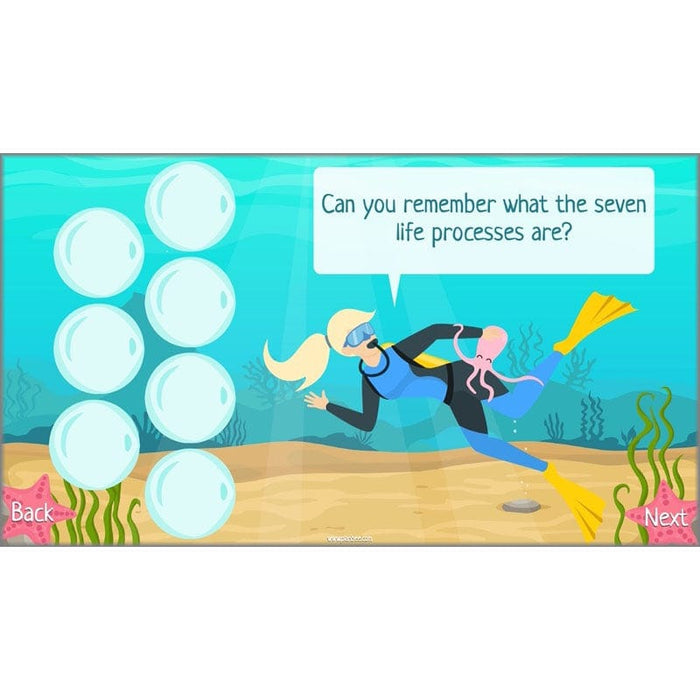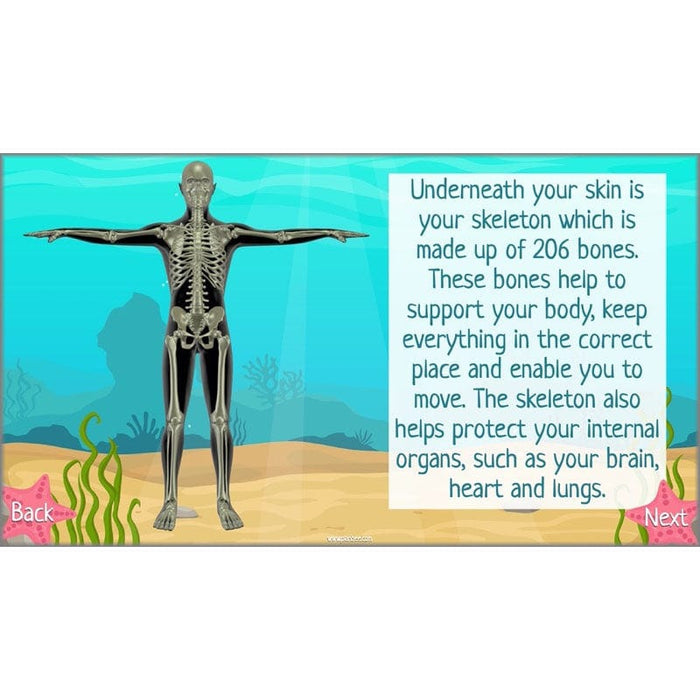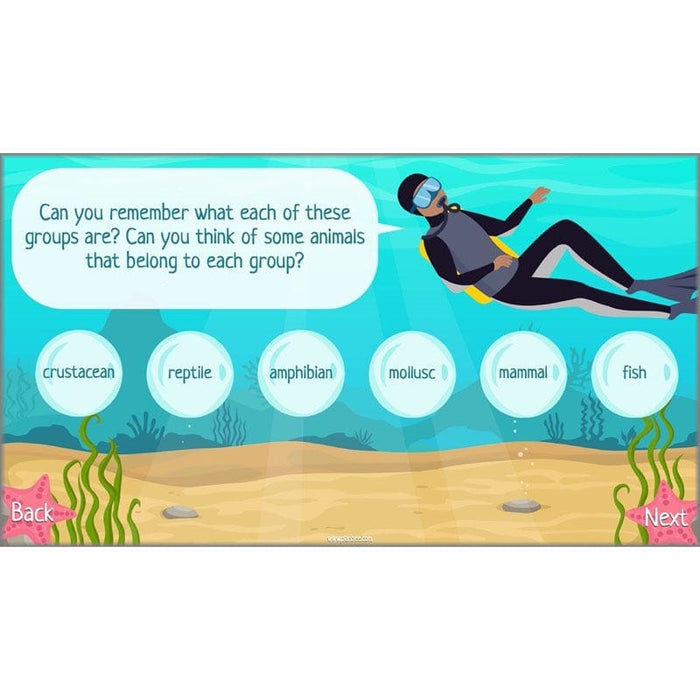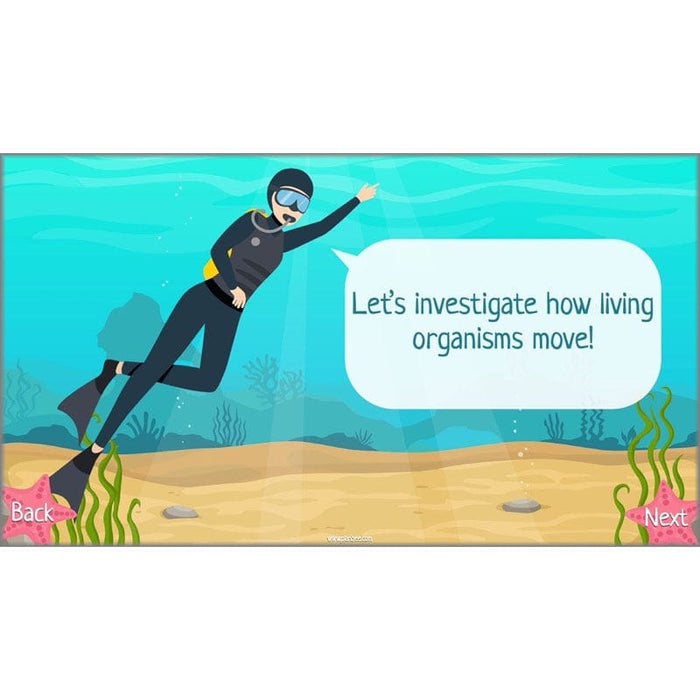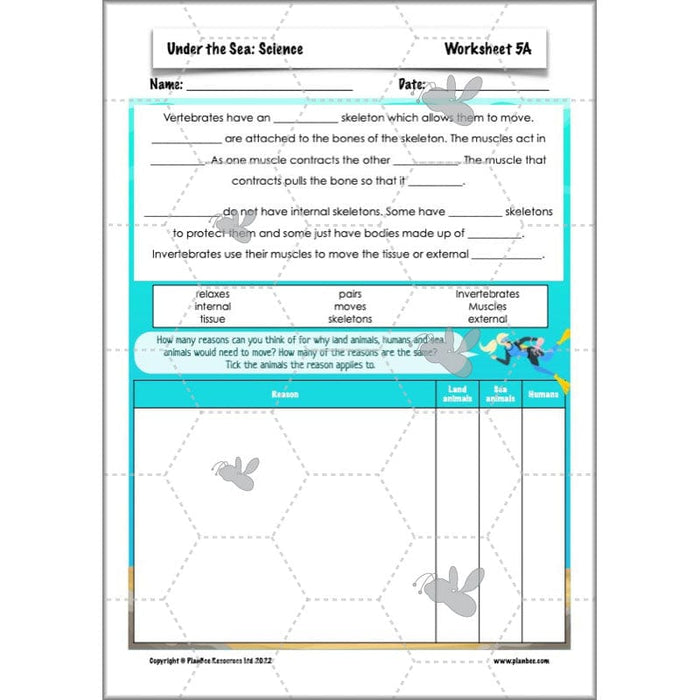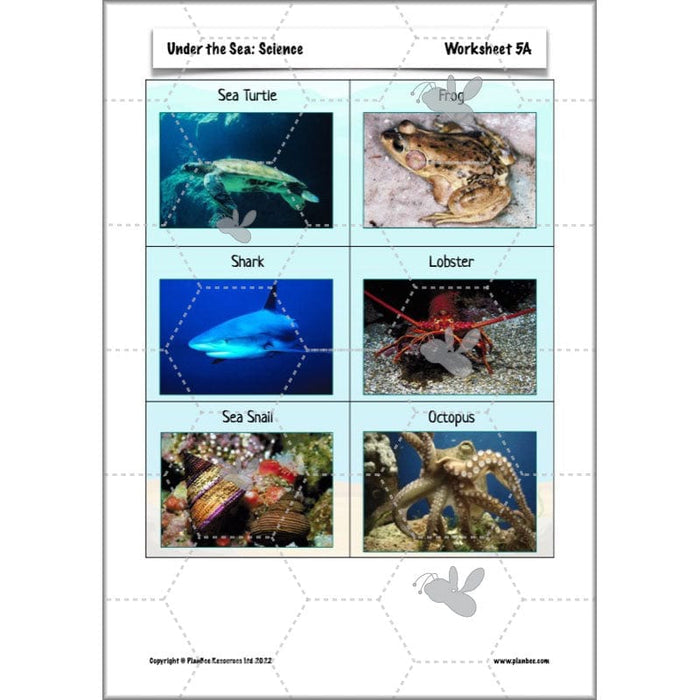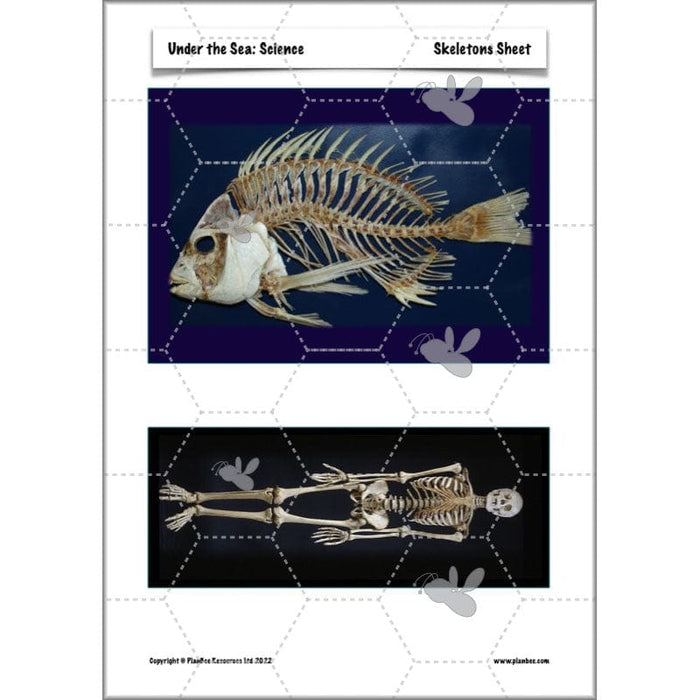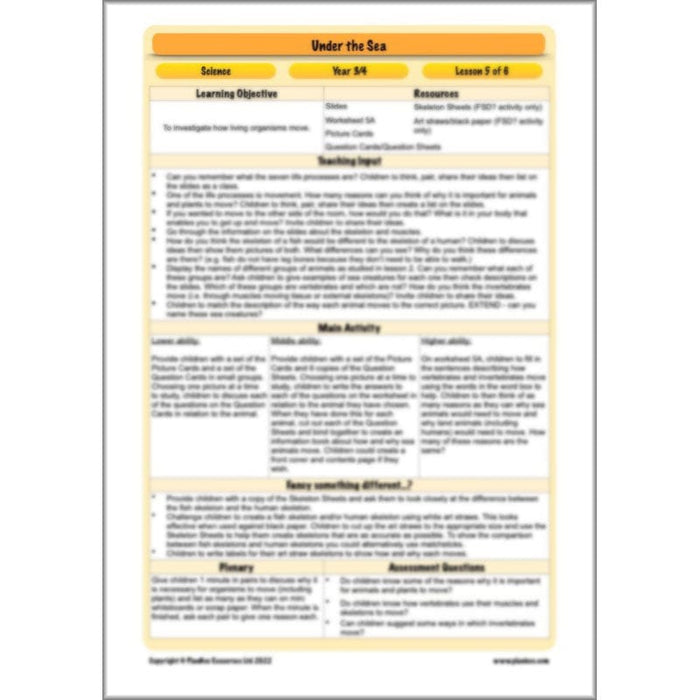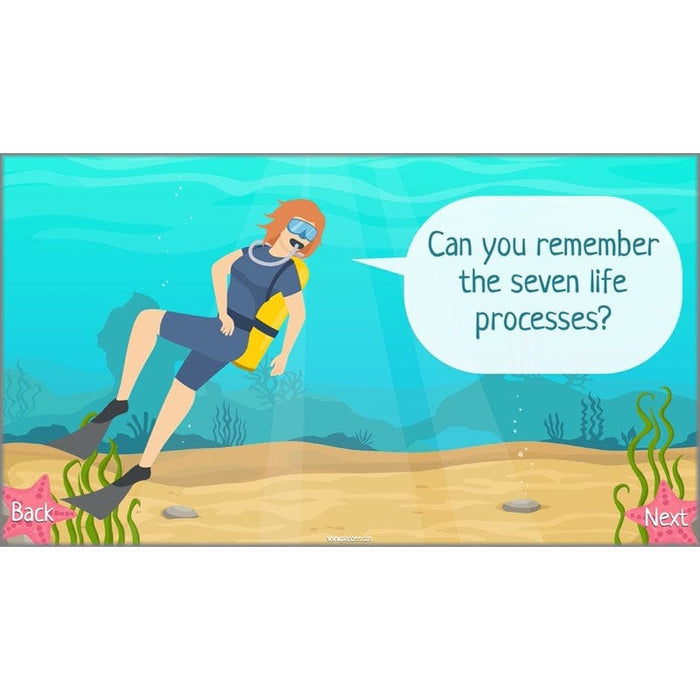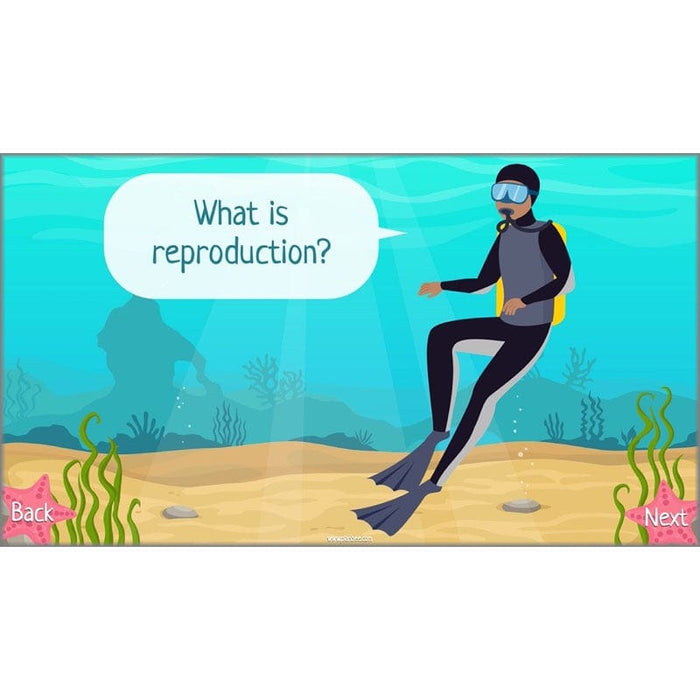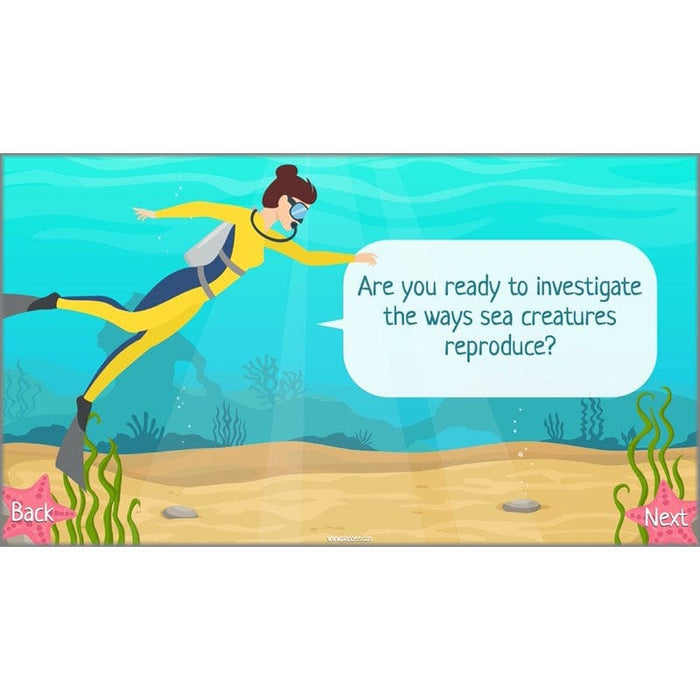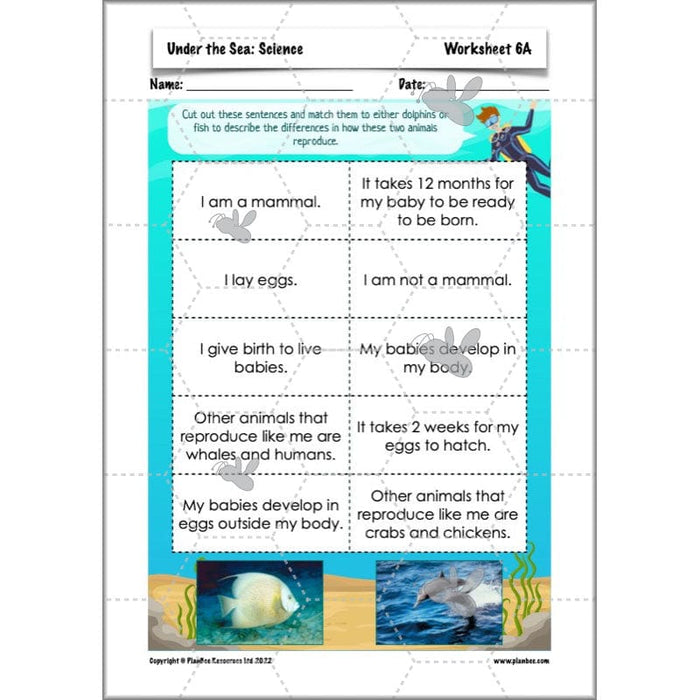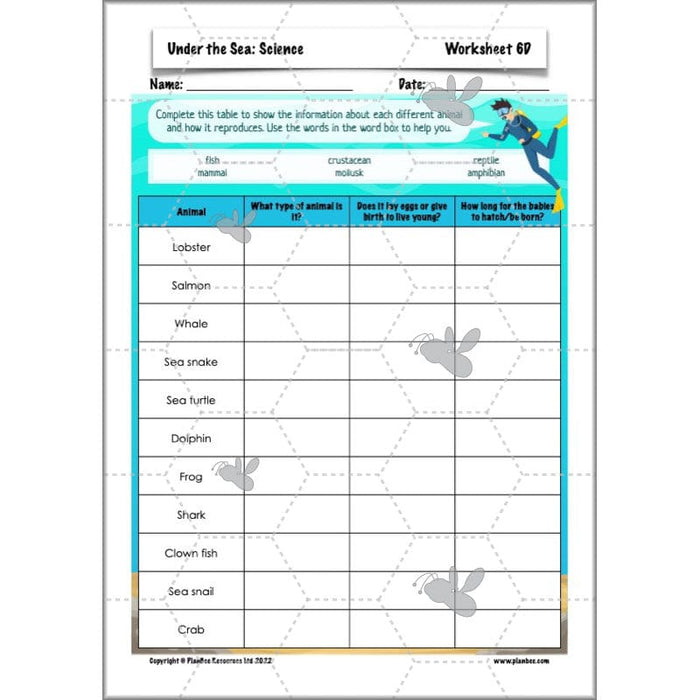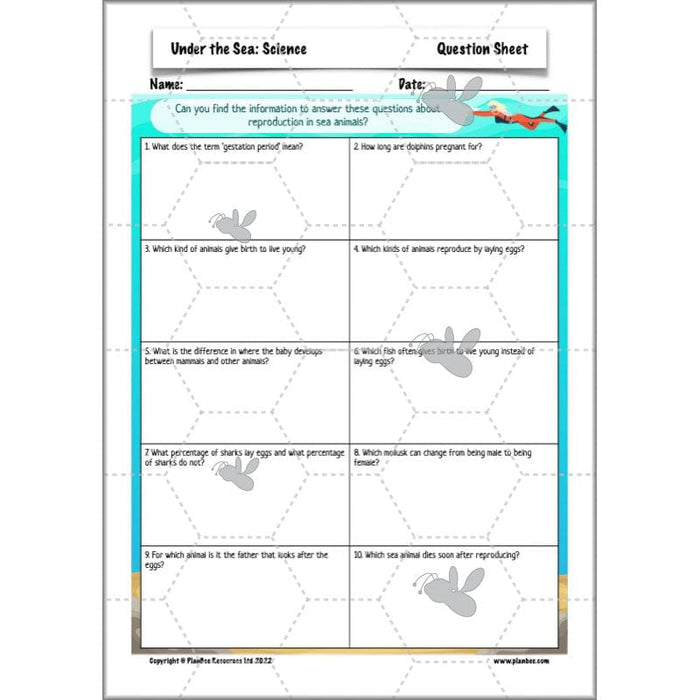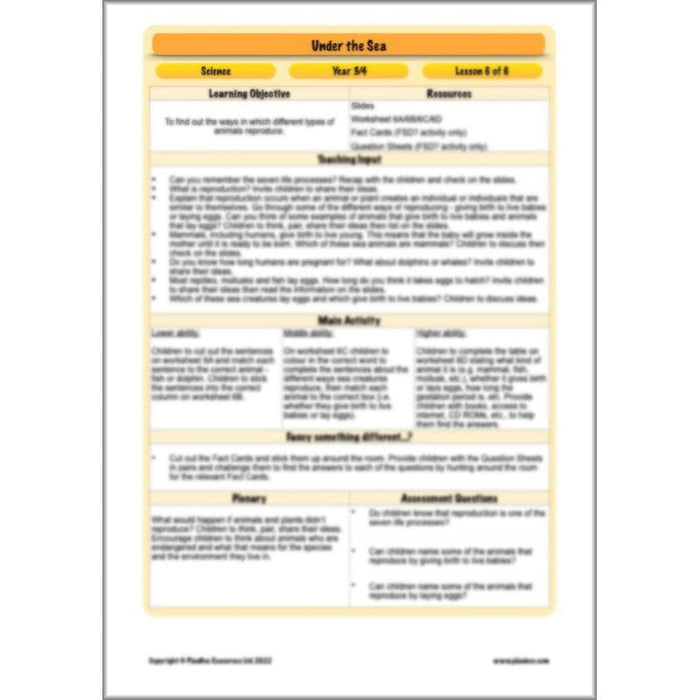Designed for Year 3 and 4 but easily adaptable for other ages, this cross-curricular topic is swimming in creative and inspiring lessons. Discover weird and wonderful sea creatures, explore the major oceans and seas of the world, get creative with some fishy art and so much more!
Download the three complete Art lessons that form part of our 'Under the Sea' topic.
Download the two complete Computing lessons that form part of our 'Under the Sea' topic.
Download the two complete DT lessons that form part of our 'Under the Sea' topic.
Download the three complete Geography lessons that form part of our 'Under the Sea' topic.
Download the two complete Music lessons that form part of our 'Under the Sea' topic.
Download the six complete Science lessons that form part of our 'Under the Sea' topic.
This simple but effective lessons gives your class the opportunity to create something amazing out of something as humble as the paper plate! With ideas for shapes and decoration to use as a starting point, your children will then be able to develop their own ideas as they design, create and evaluate their own paper plate fish or other sea creature.
What's included:
- Lesson plan
- Slides
- Activity ideas
- Differentiated worksheets
After finding out about the myth of Atlantis, your class will then use their imaginations to think about what they would see if they discovered this lost underwater city, before turning their ideas into a piece of artwork.
What's included:
- Lesson plan
- Slides
- Activity ideas
- Picture sheets
This lesson teaches your class about the art of mosaics and their origins before giving them the chance to create their own mosaic based on a sea animal or scene using a choice of methods and techniques.
What's included:
- Lesson plan
- Slides
- Activity ideas
- Differentiated worksheets
- Template sheets
Throughout this topic your class will come across dozens of interesting sea creatures but this lesson allows them to focus on just one as they research their chosen animal and use it as the basis for a multimedia presentation.
What's included:
- Lesson plan
- Slides
- Activity ideas
- Differentiated worksheets
- Ocean creature cards
Everyone loves a good story and stories under the sea are always exciting! Give your class the chance to choose their own characters, problems and underwater settings as they plan and write their own under the sea stories to make into digital storybooks.
What's included:
- Lesson plan
- Slides
- Activity ideas
- Differentiated worksheets
- Character, problem and setting cards
What do you see when you go to an aquarium? Using photographs as a stimulus, children will think about what they see at an aquarium before designing, making and evaluating their own model aquarium.
What's included:
- Lesson plan
- Slides
- Activity ideas
- Differentiated worksheets
- Animal outlines
- Aquarium background sheets
This fun project gives your class the chance to improve their sewing skills as they design, create and evaluate a stuffed soft toy in the shape of a fish or other sea creature.
What's included:
- Lesson plan
- Slides
- Activity ideas
- Differentiated worksheets
- Fish template sheet
Do your class know the names of the major oceans and where they are in the world? This lesson consolidates their knowledge of oceans and seas, as well as countries and continents, and focuses on map work to identify and locate major seas and oceans.
What's included:
- Lesson plan
- Slides
- Activity ideas
- Differentiated worksheets
- A seas and oceans map
- Seas and ocean cards
This lesson focuses on the five oceans and explores their geographical features, such as depth, size and average temperatures. This provides a great opportunity to get your class using statistics, data and graphs to answer questions.
What's included:
- Lesson plan
- Slides
- Activity ideas
- Differentiated worksheets
- Information sheet
This thought-provoking lesson looks at the many ways in which seas and oceans are used by humans, from transport and tourism to mining and food, and explores both the positive and negative impacts of these uses.
What's included:
- Lesson plan
- Slides
- Activity ideas
- Differentiated worksheets
Introduce your class to Camille Saint-Saens. the famous composer of 'The Carnival of the Animals', in this lesson as they listen and respond to 'Aquarium' in a variety of ways. Please note that the music is not included in the lesson.
What's included:
- Lesson plan
- Slides
- Activity ideas
- Differentiated worksheets
Bring the sound of the ocean to your classroom as your children investigate the sounds different instruments make and use them to create sounds that reflect life underwater, such as crashing waves, scuttling crabs and waving seaweed. They can them compile their sounds into musical sea poems to use both words and sounds to describe the ocean.
What's included:
- Lesson plan
- Slides
- Activity ideas
- Differentiated worksheets
- Description cards
This lesson looks at what a habitat is and identifies different types of habitats and the animals who live there. It also explores how sea animals have adapted to their underwater habitat.
What's included:
- Lesson plan
- Slides
- Activity ideas
- Differentiated worksheets
- Picture cards
After thinking of the sea animals they already know, this lesson explores why it is important to be able to classify animals into groups before doing just that with terms such as vertebrate, invertebrate, mammal, mollusk, crustacean, amphibian and reptile.
What's included:
- Lesson plan
- Slides
- Activity ideas
- Differentiated worksheets
- Picture cards
What do a fish, a human and a daisy have in common? This lesson looks at the seven life processes common to all living organisms and finds out what each is. It also explores how some land and sea animals differ in the way they carry out these processes.
What's included:
- Lesson plan
- Slides
- Activity ideas
- Differentiated worksheets
- Information sheet
After recapping what the seven life processes are, this lesson looks in particular at respiration. It explores how mammals such as dolphins breathe on land and in the water, and how other underwater creatures take in oxygen from water instead of air.
What's included:
- Lesson plan
- Slides
- Activity ideas
- Differentiated worksheets
- Picture cards
This lesson identifies movement as one of the life processes common to all organisms and examines why it is necessary before exploring the difference between the skeletons of fish and humans and why these differences exist. It also looks at how other sea creatures move, reinforcing knowledge of different vertebrate and invertebrate sea creatures.
What's included:
- Lesson plan
- Slides
- Activity ideas
- Worksheet
- Question cards
- Question sheets
- Skeleton sheets
After defining what reproduction is and why it is a necessary life process, this lesson looks at the different ways in which sea animals reproduce (whether they give birth to live young or lay eggs) and gives your class the chance to explore how mammals, fish, crustaceans, reptiles and other groups of animals reproduce.
What's included:
- Lesson plan
- Slides
- Activity ideas
- Differentiated worksheets
- Fact cards
- Question sheets
<<
-
free overview (medium-term plan)
...
-
free assessment grid
...
-
curriculum objectives covered
...
>>
Download a free overview to support your teaching of this scheme of work.
Download a free, editable assessment grid to support your teaching of this scheme of work.
Art Objectives:
- KS2 - to improve their mastery of art and design techniques, including drawing with a range of materials
- KS2 - to improve their mastery of art and design techniques, including painting with a range of materials
- KS2 - to improve their mastery of art and design techniques, including sculpture with a range of materials
Computing Objectives:
- KS2 - select, use and combine a variety of software (including internet services) on a range of digital devices to design and create a range of programs, systems and content that accomplish given goals, including collecting, analysing, evaluating and pres
Design & Technology Objectives:
- KS2 - use research and develop design criteria to inform the design of innovative, functional, appealing products that are fit for purpose, aimed at particular individuals or groups
- KS2 - generate, develop, model and communicate their ideas through discussion, annotated sketches, cross-sectional and exploded diagrams, prototypes, pattern pieces and computer-aided design
- KS2 - select from and use a wider range of tools and equipment to perform practical tasks [for example, cutting, shaping, joining and finishing], accurately
- KS2 - select from and use a wider range of materials and components, including construction materials, textiles and ingredients, according to their functional properties and aesthetic qualities
- KS2 - evaluate their ideas and products against their own design criteria and consider the views of others to improve their work
Geography Objectives:
- KS2 - locate the world’s countries, using maps to focus on Europe (including the location of Russia) and North and South America, concentrating on their environmental regions, key physical and human characteristics, countries, and major cities
- KS2 - identify the position and significance of latitude, longitude, Equator, Northern Hemisphere, Southern Hemisphere, the Tropics of Cancer and Capricorn, Arctic and Antarctic Circle, the Prime/Greenwich Meridian and time zones (including day and night)
- KS2 - describe and understand key aspects of physical geography, including: climate zones, biomes and vegetation belts, rivers, mountains, volcanoes and earthquakes, and the water cycle
- KS2 - describe and understand key aspects of human geography, including: types of settlement and land use, economic activity including trade links, and the distribution of natural resources including energy, food, minerals and water
- KS2 - use maps, atlases, globes and digital/computer mapping to locate countries and describe features studied
- Music
- KS2 - play and perform in solo and ensemble contexts, using their voices and playing musical instruments with increasing accuracy, fluency, control and expression
- KS2 - improvise and compose music for a range of purposes using the inter-related dimensions of music
- KS2 - listen with attention to detail and recall sounds with increasing aural memory
- KS2 - appreciate and understand a wide range of high-quality live and recorded music drawn from different traditions and from great composers and musicians
Science Objectives:
Year 3/4 Working Scientifically Objectives
- making systematic and careful observations and, where appropriate, taking accurate measurements using standard units, using a range of equipment, including thermometers and data loggers
- gathering, recording, classifying and presenting data in a variety of ways to help in answering questions
- identifying differences, similarities or changes related to simple scientific ideas and processes
- using straightforward scientific evidence to answer questions or to support their findings
Year 3 Animals including Humans Objectives
- identify that humans and some other animals have skeletons and muscles for support, protection and movement
